|
|

|
Saturday 21 April 2018
Preparations........Although there’s not much writing to do this morning, as we’re in a new province I’m about to explore, I have to do some detailed preliminary research. As well as compiling the usual list I have to determine each location in order to reduce the travelling time. In addition I have to attempt to lock in the locations into GPS, not an easy task due to differences in spelling as a result of translation. I’m well aware as a result of past mistakes that I need to be very careful with this. By the time the list is complete, it’s well past the time I expected to start my tour today but as was the case with Phitsanulok, Lampang deserves more than slight attention so the list has grown accordingly; it’s no one-day list and as with the former, I’ve been here before but at a time when I didn’t have the resources I do now. So let’s see if that extra preparation will pay dividends as I start in the city itself.
Wat Sri Chum........ Arriving at Wat Sri Chum it’s abundantly clear that in every respect apart from function the temple buildings are a region apart from their neighbours further south having their own historical and cultural identity.
According to information on site, Wat Sri Chum is the largest Burmese style temple in Thailand and has been used as an outdoor location for the filming of many historical dramas. The structure of the viharn in concrete and wood is in Burmese style. The wooden doors are engraved as is the ceiling with seven tiers and spires decorated with coloured sheet glass. Each teakwood pillar is primed with black lacquer covered with gold leaf. Inside the viharn the Bua Kem Buddha statue sits on an elaborately carved wooden base.
From my observation I can confirm that this is a beautiful temple with walls probably of brick with render thick enough to support the huge teakwood superstructure. The description goes on to record that there was a fire here in 1992 which entirely destroyed the viharn apart from the covered staircase. Today the beautiful Burmese seven tiered viharn has been completely restored to the original design.
Preparations........Although there’s not much writing to do this morning, as we’re in a new province I’m about to explore, I have to do some detailed preliminary research. As well as compiling the usual list I have to determine each location in order to reduce the travelling time. In addition I have to attempt to lock in the locations into GPS, not an easy task due to differences in spelling as a result of translation. I’m well aware as a result of past mistakes that I need to be very careful with this. By the time the list is complete, it’s well past the time I expected to start my tour today but as was the case with Phitsanulok, Lampang deserves more than slight attention so the list has grown accordingly; it’s no one-day list and as with the former, I’ve been here before but at a time when I didn’t have the resources I do now. So let’s see if that extra preparation will pay dividends as I start in the city itself.
Wat Sri Chum........ Arriving at Wat Sri Chum it’s abundantly clear that in every respect apart from function the temple buildings are a region apart from their neighbours further south having their own historical and cultural identity.
According to information on site, Wat Sri Chum is the largest Burmese style temple in Thailand and has been used as an outdoor location for the filming of many historical dramas. The structure of the viharn in concrete and wood is in Burmese style. The wooden doors are engraved as is the ceiling with seven tiers and spires decorated with coloured sheet glass. Each teakwood pillar is primed with black lacquer covered with gold leaf. Inside the viharn the Bua Kem Buddha statue sits on an elaborately carved wooden base.
From my observation I can confirm that this is a beautiful temple with walls probably of brick with render thick enough to support the huge teakwood superstructure. The description goes on to record that there was a fire here in 1992 which entirely destroyed the viharn apart from the covered staircase. Today the beautiful Burmese seven tiered viharn has been completely restored to the original design.
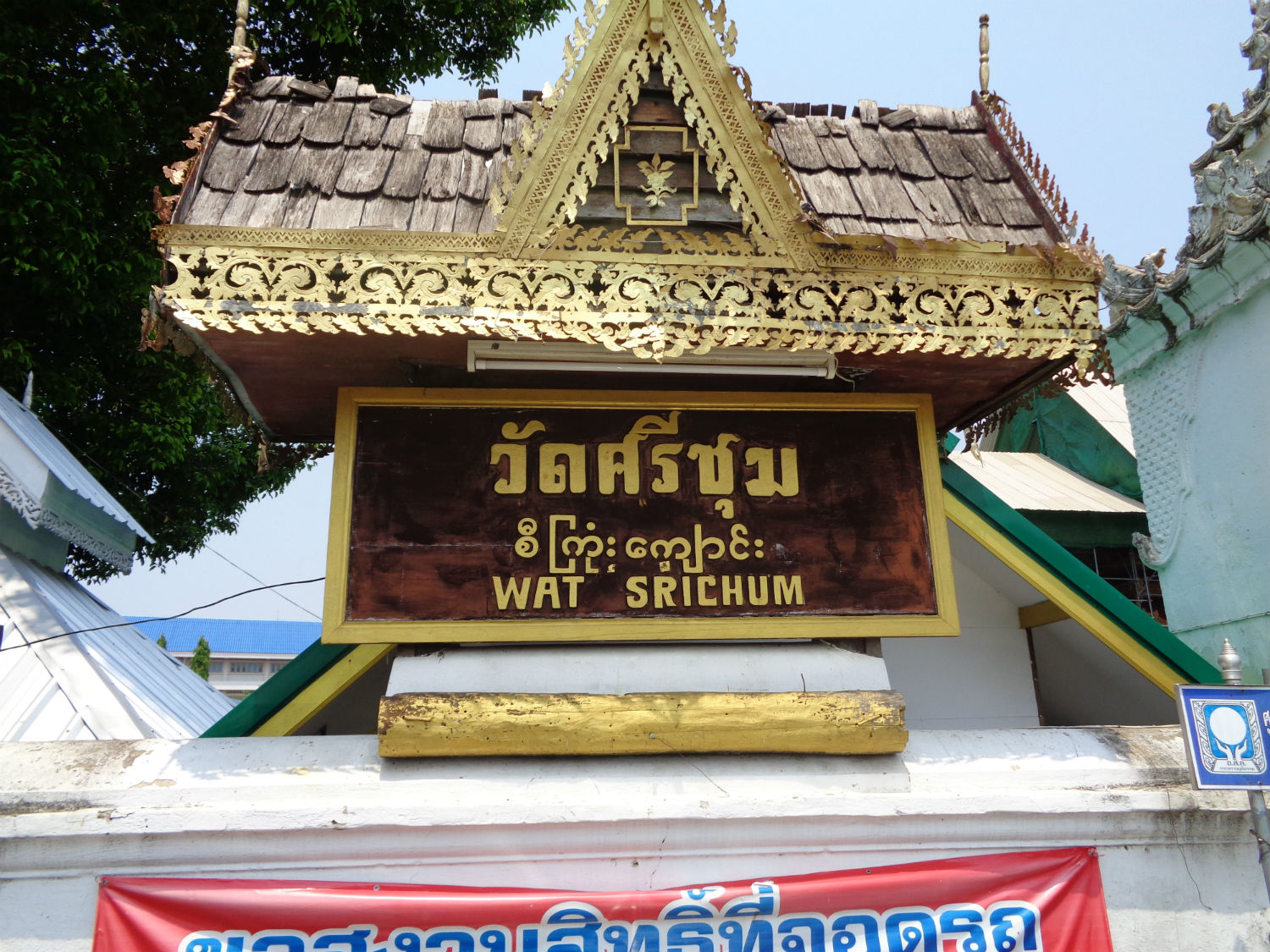
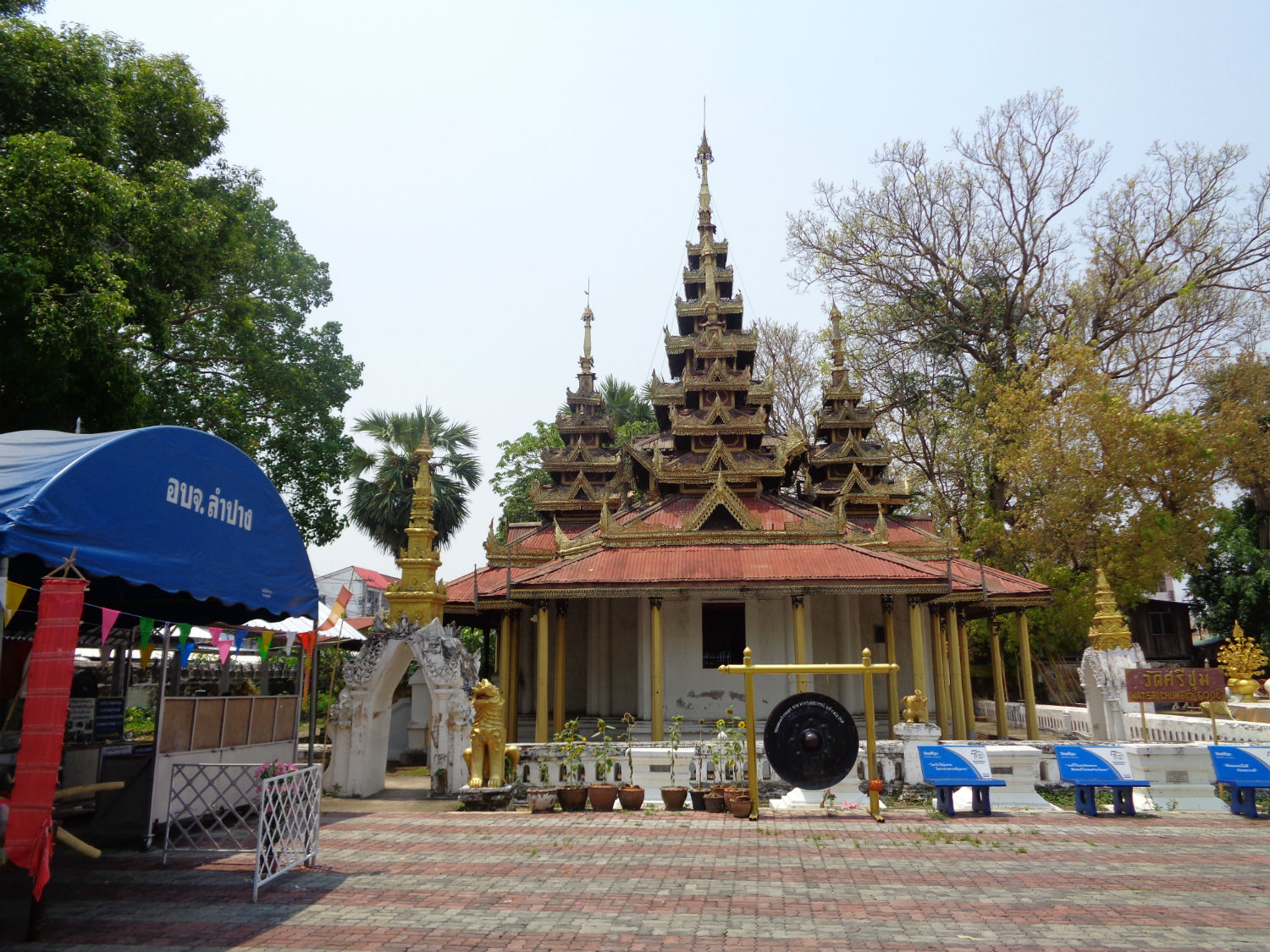
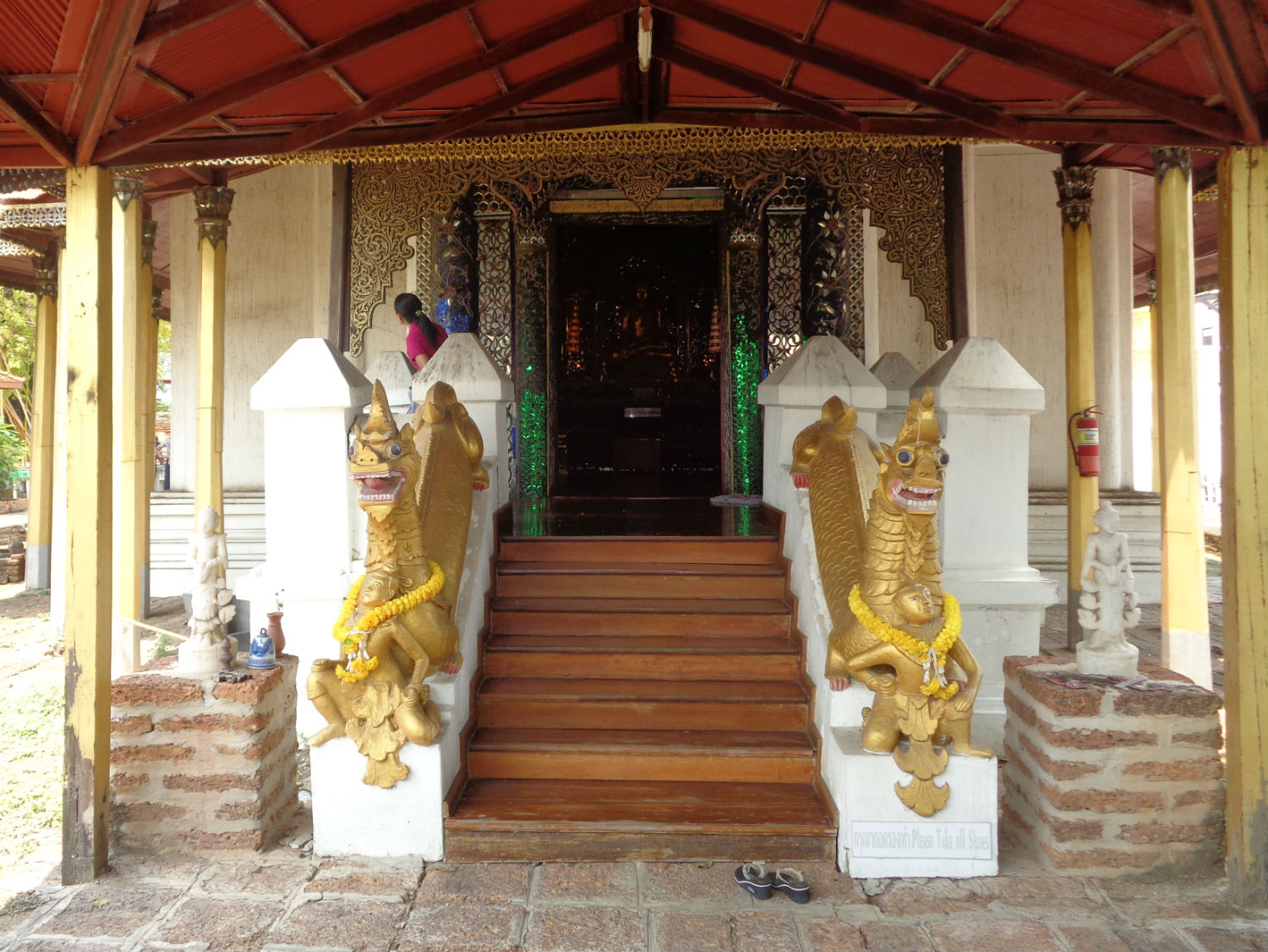
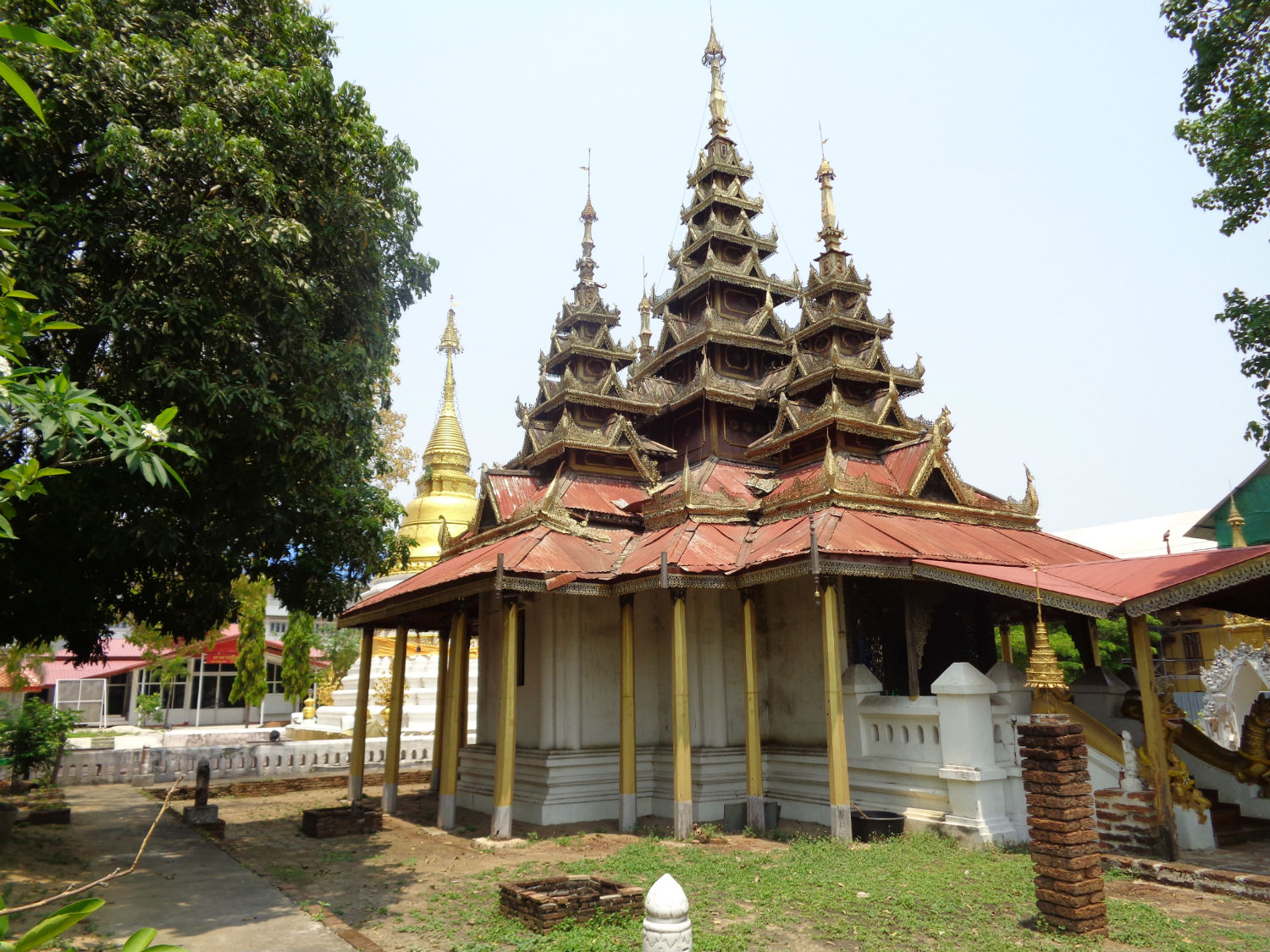
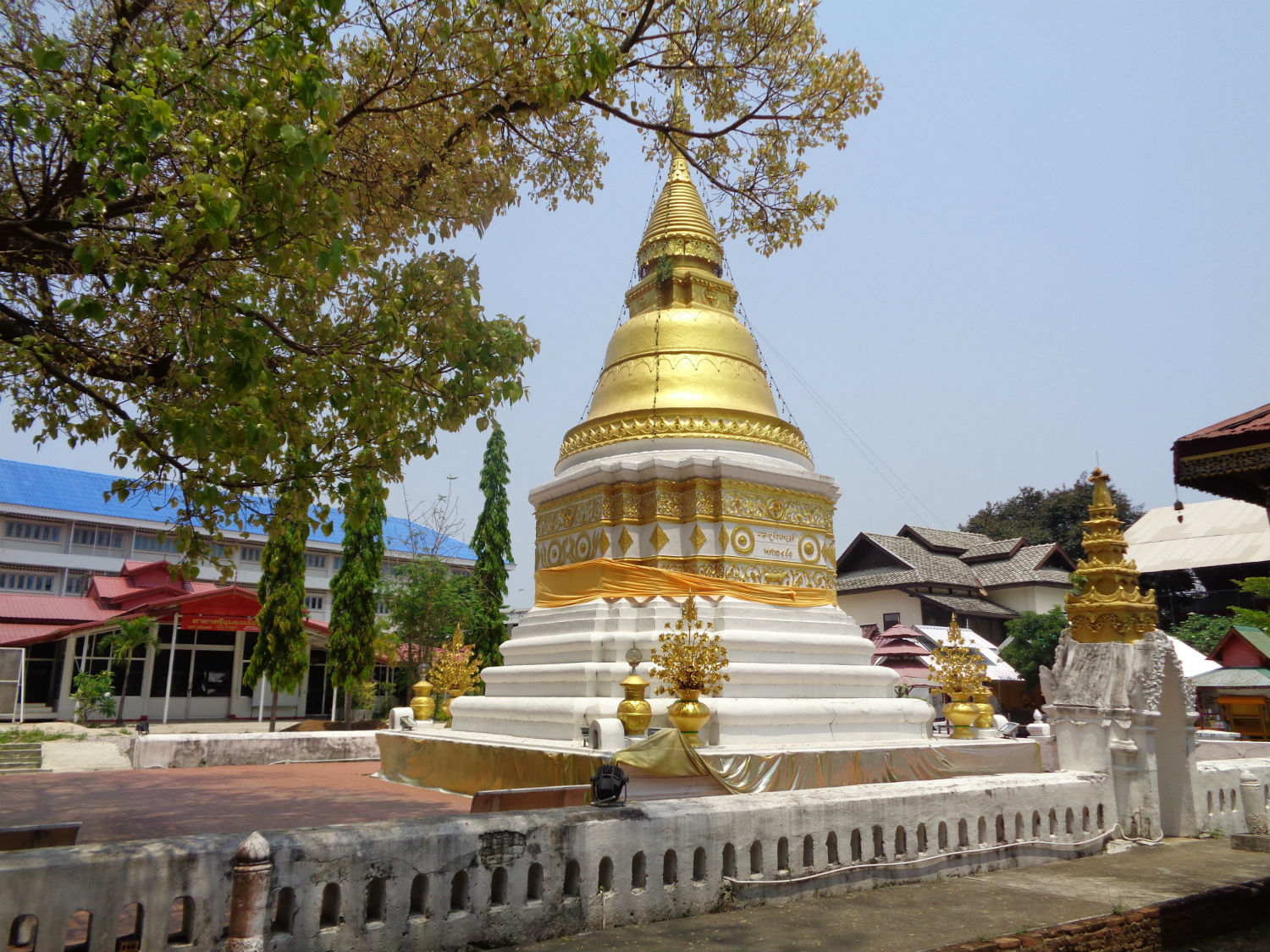
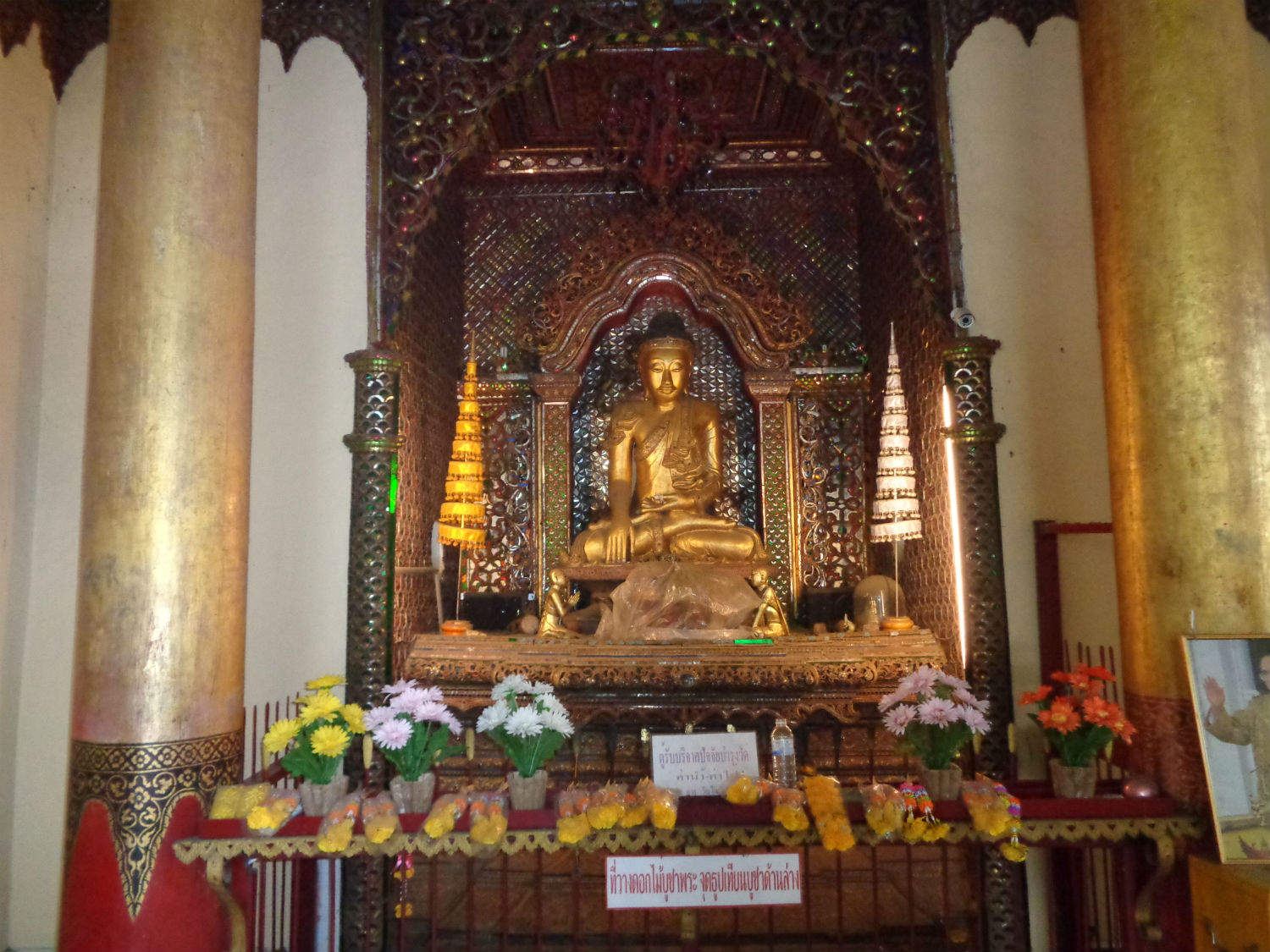
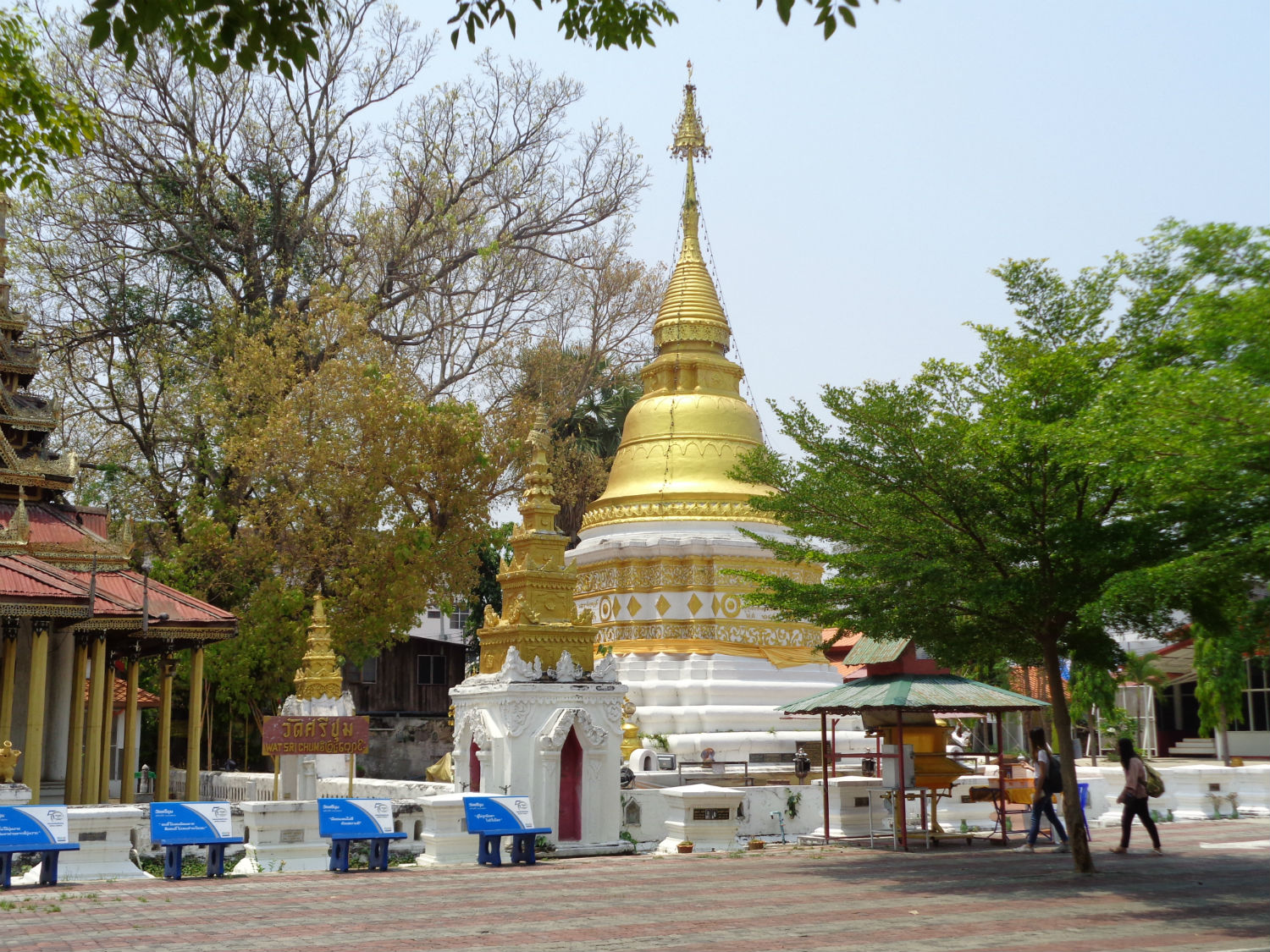
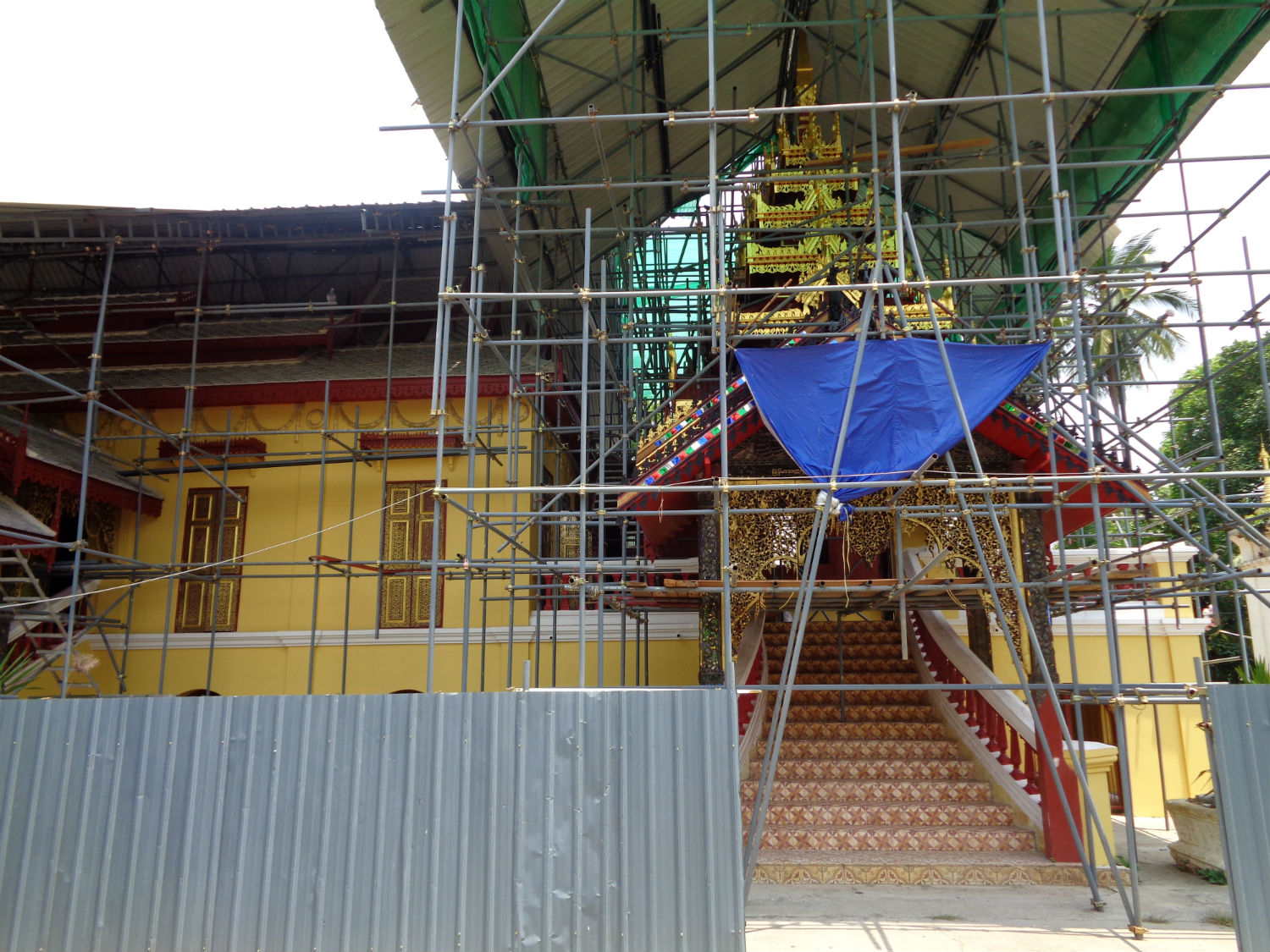
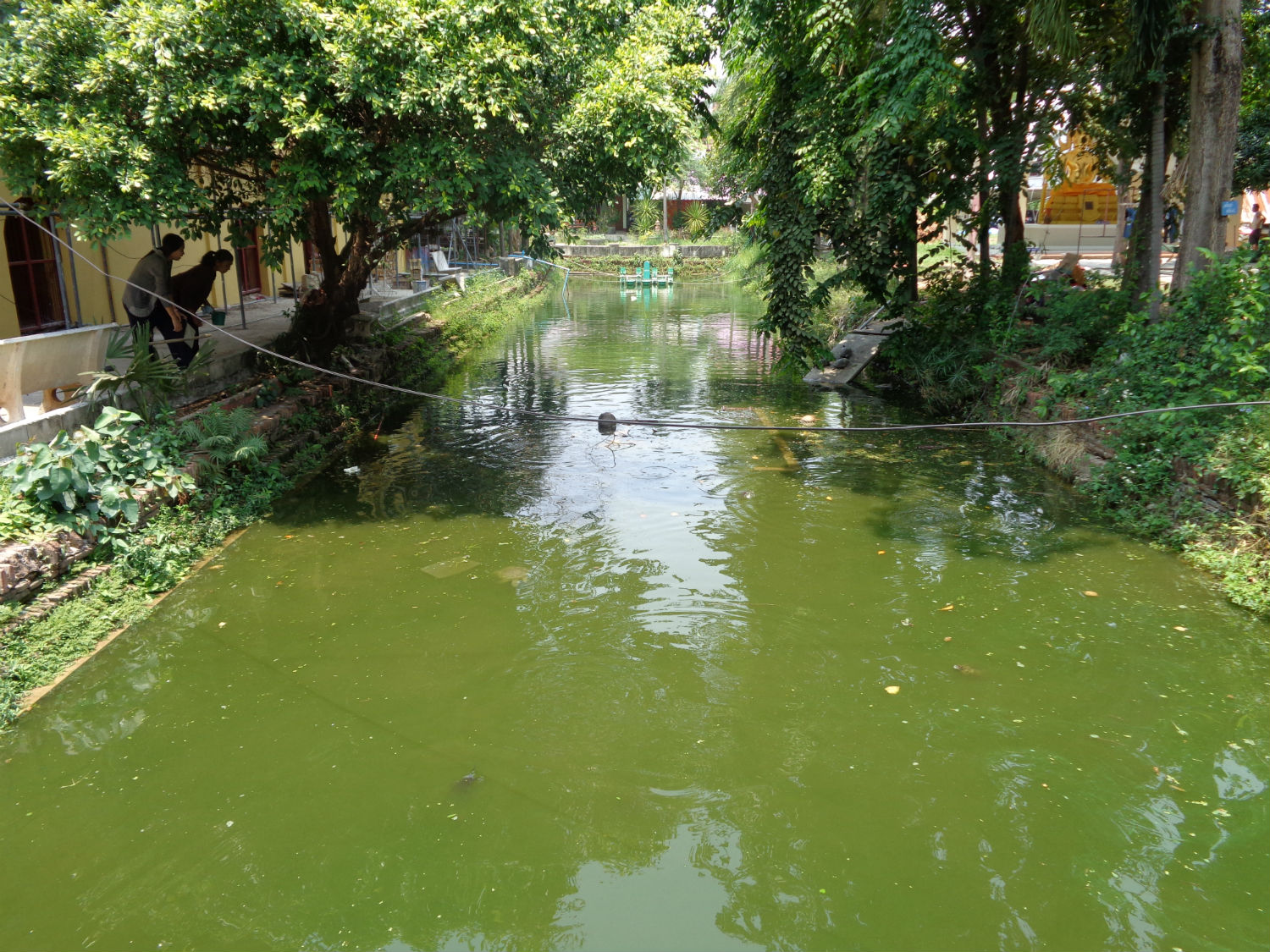 Wat Sri Chum, Lampang
Wat Sri Chum, Lampang
Wat Pong Sanuk Nua........
The next temple, Wat Pong Sanuk Nua is built on a mound lined with brick surrounded with a white wall. Inside there is a square shaped ornate viharn, a bell shaped chedi and reclining Buddha image. According to an online source this is a 500-year-old temple site with buildings in a mix of Lanna, Burmese and Chinese architectural and decorative style similar to Wat Phrathat Lampang Luang. A two-year historically informed restoration project of the viharn (Viharn Phra Chao Pun Ong) was given an Award of Merit in 2008 by UNESCO.
Wat Pongsanuk was built during the reign of King Anantayot in 680 AD, the same period that Lampang was settled. The temple was also the place where the city's first sacred pillar was laid. The name of the temple according to legend comes from the Pong Sanuk community that migrated to live in this area. Literally, Pong Sanuk in Thai means “the clan of fun”.
My observations confirm that outside the compound is the original pillar shrine, a beautifully decorated viharn in Lanna style and a museum devoted to religious objects in wood from Buddha images and tale banners to pulpits and chests. A full description of the restoration of Viharn Phra Chao Pun Ong is also provided. Finally in the museum are photographs of beautifully ornate Buddha images from all over the area, a bewildering collection.
Wat Pongsanuk was built during the reign of King Anantayot in 680 AD, the same period that Lampang was settled. The temple was also the place where the city's first sacred pillar was laid. The name of the temple according to legend comes from the Pong Sanuk community that migrated to live in this area. Literally, Pong Sanuk in Thai means “the clan of fun”.
My observations confirm that outside the compound is the original pillar shrine, a beautifully decorated viharn in Lanna style and a museum devoted to religious objects in wood from Buddha images and tale banners to pulpits and chests. A full description of the restoration of Viharn Phra Chao Pun Ong is also provided. Finally in the museum are photographs of beautifully ornate Buddha images from all over the area, a bewildering collection.
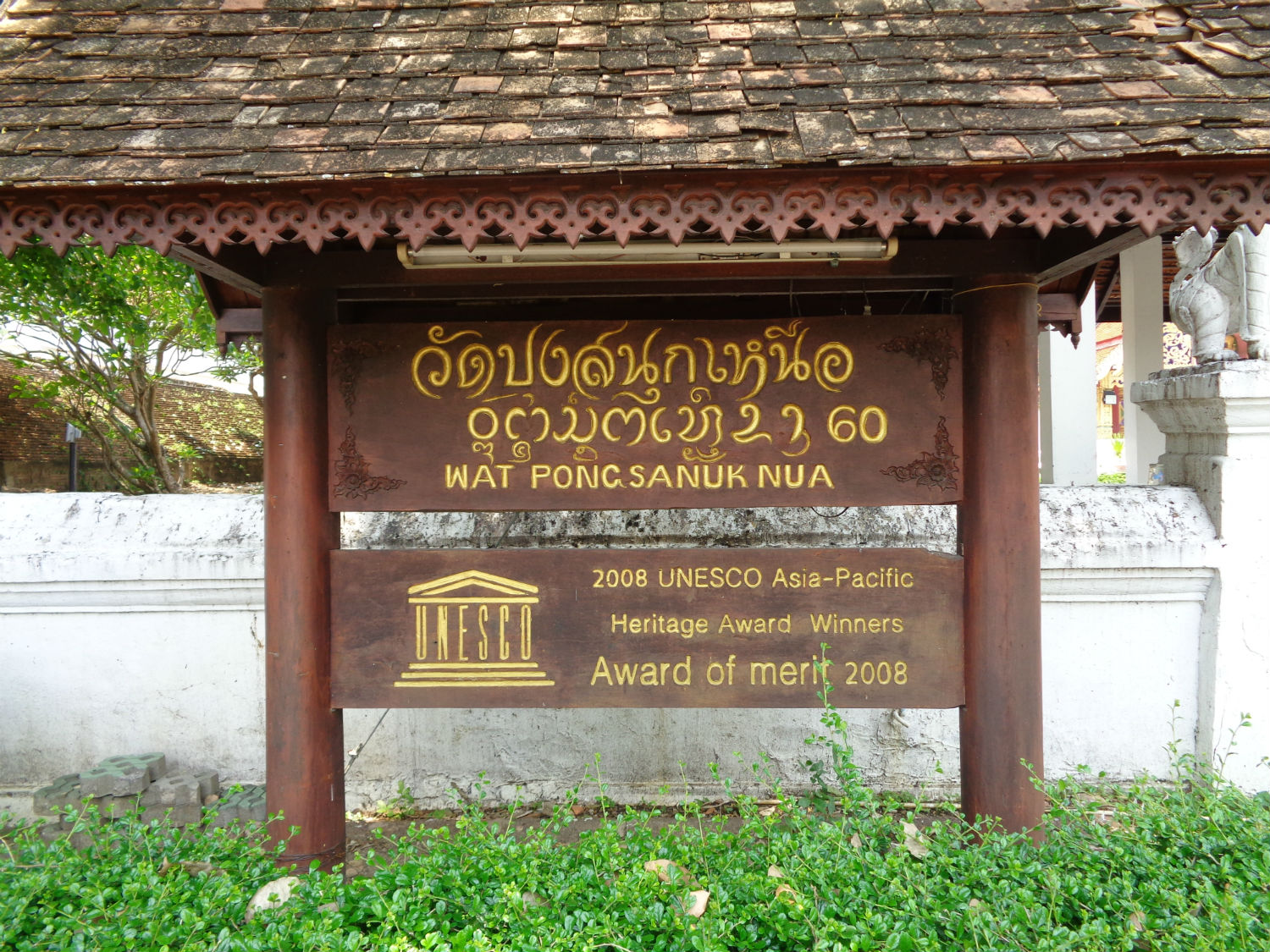
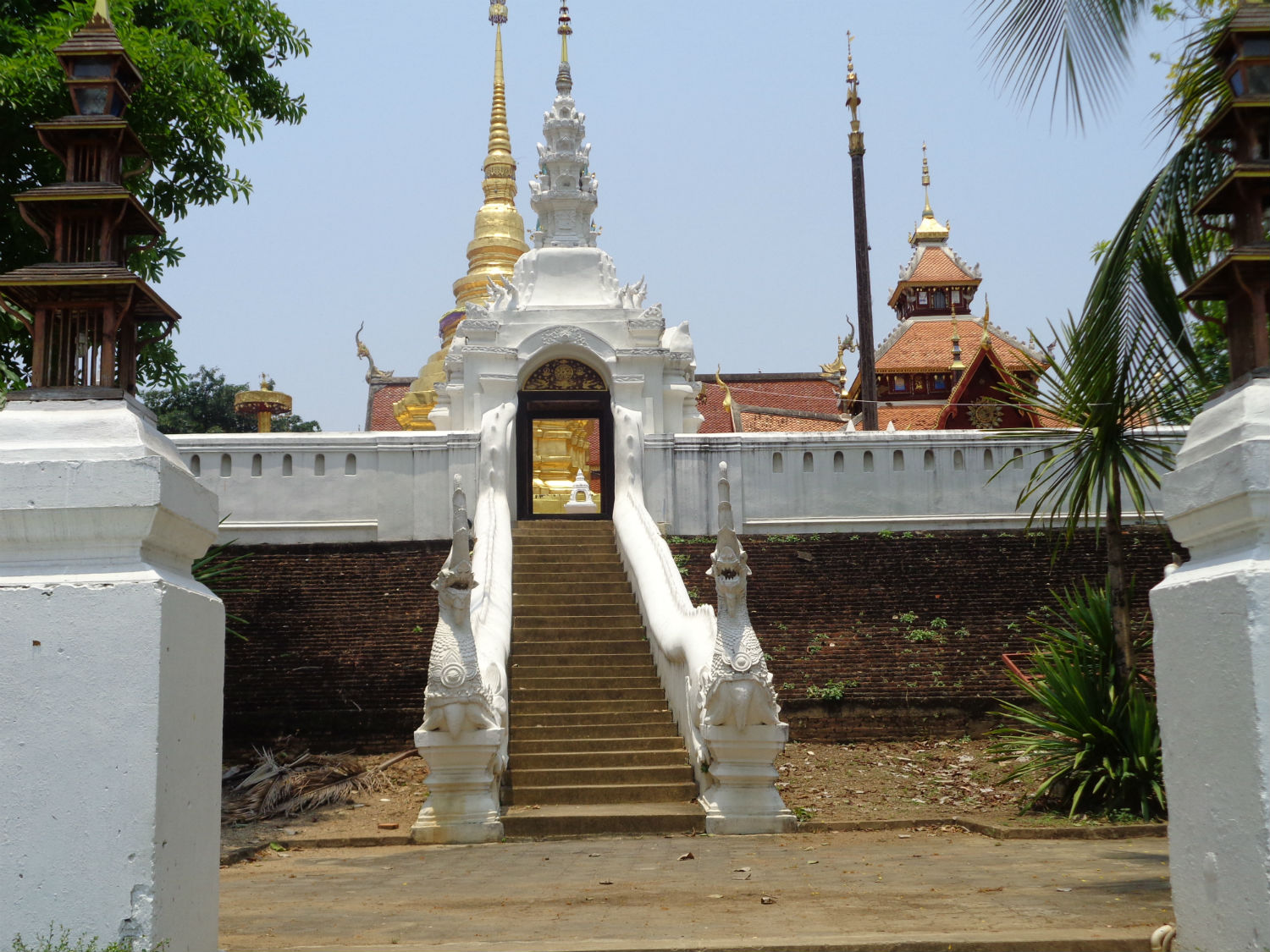
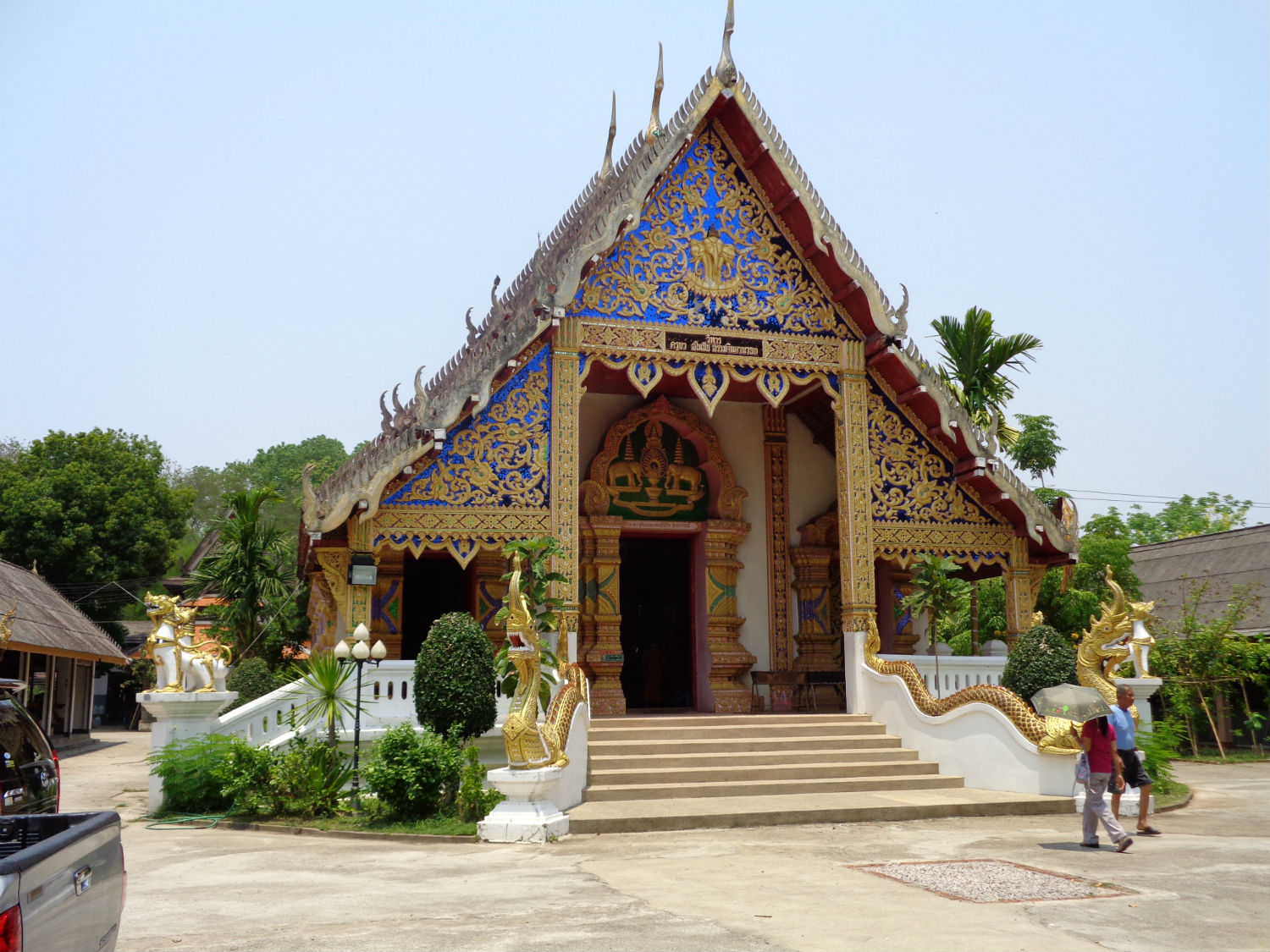
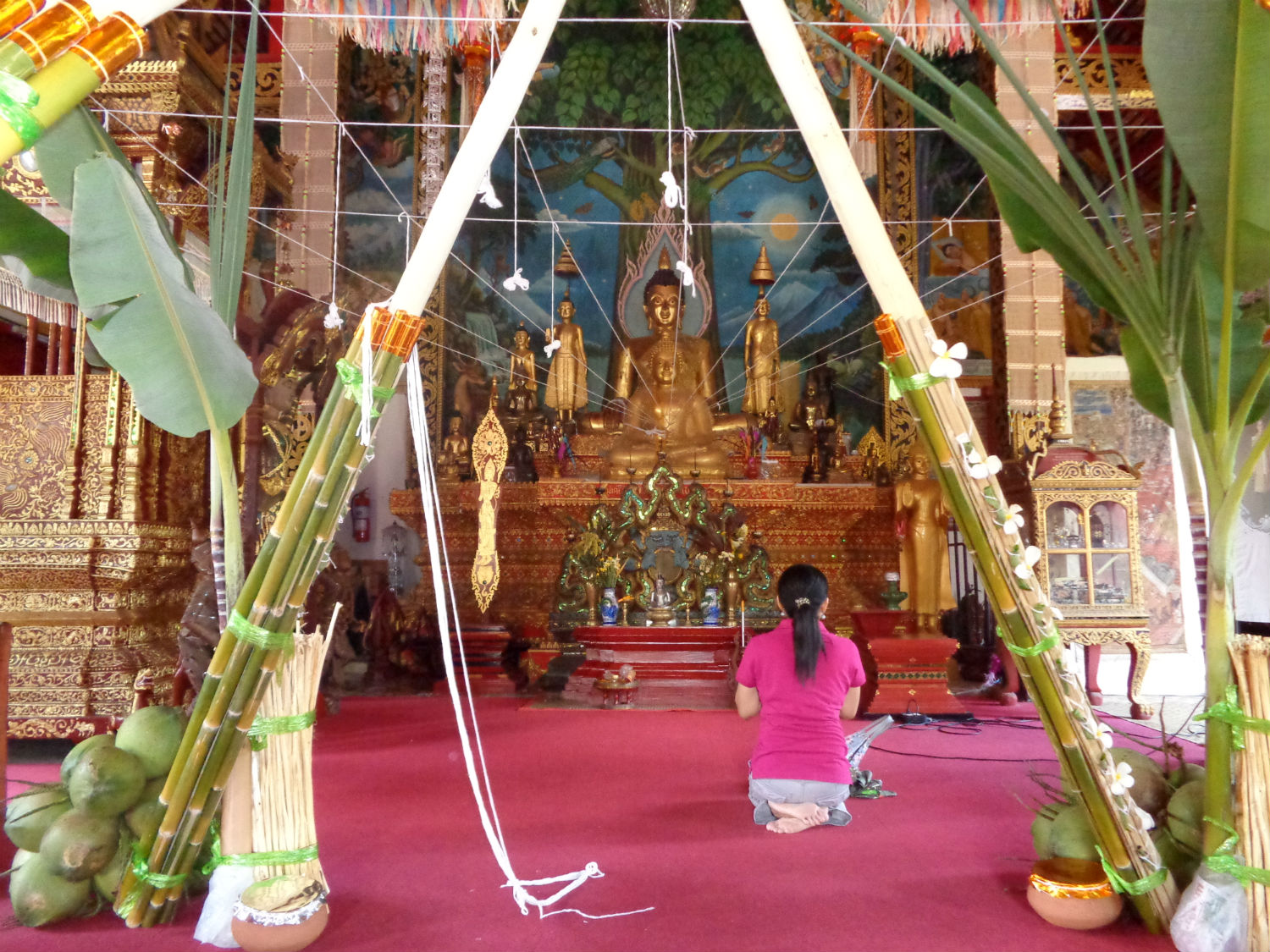
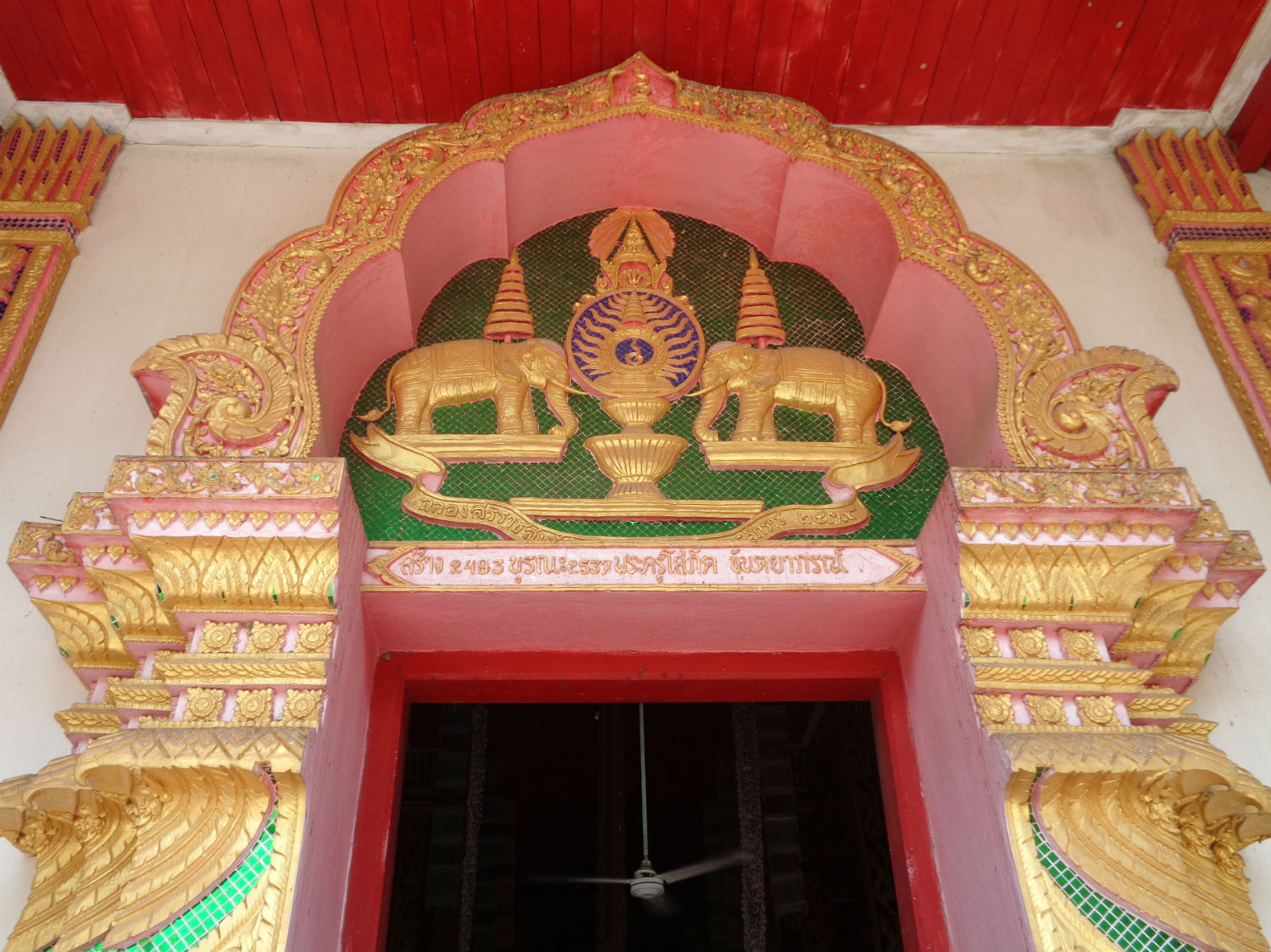
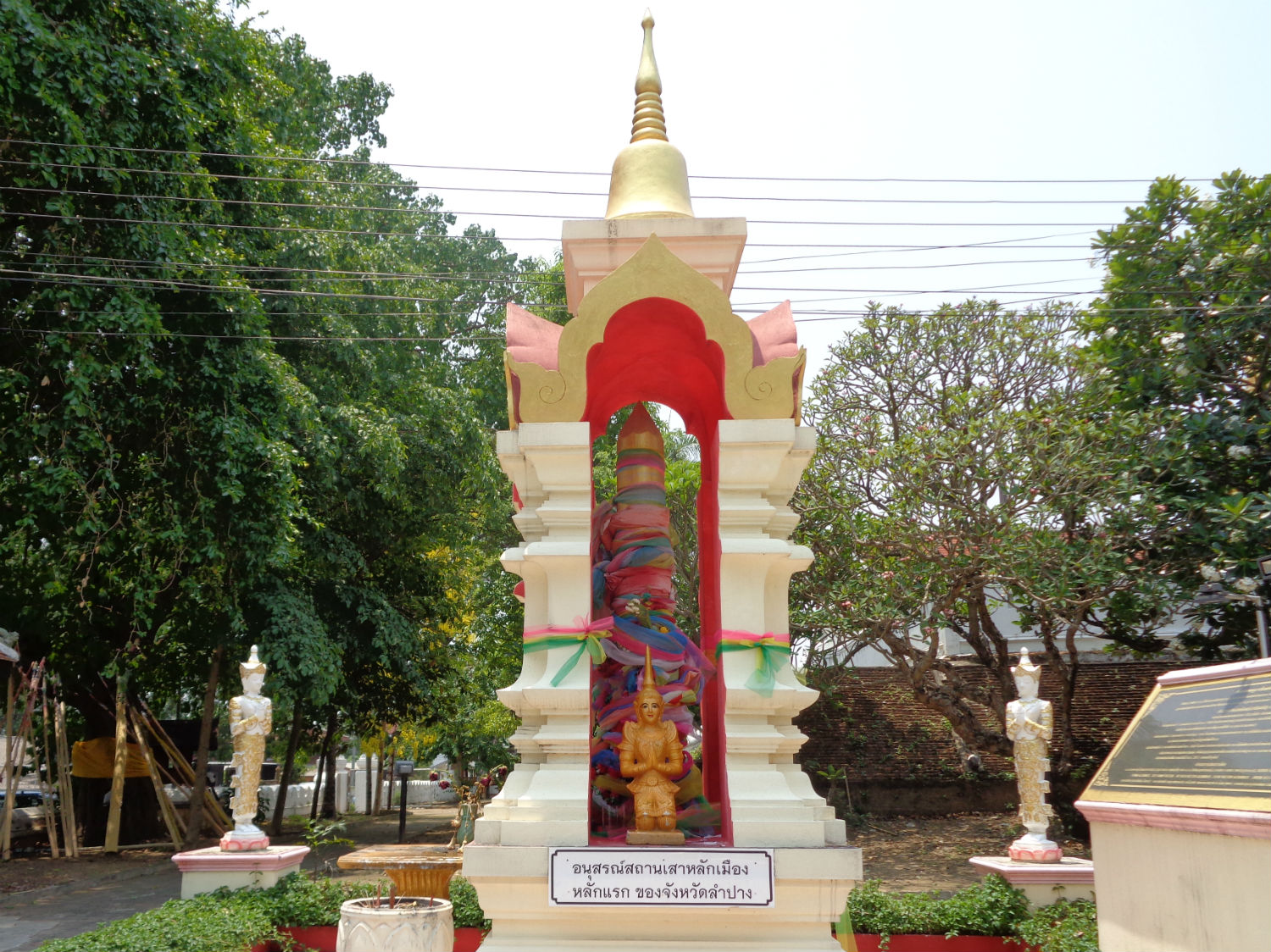
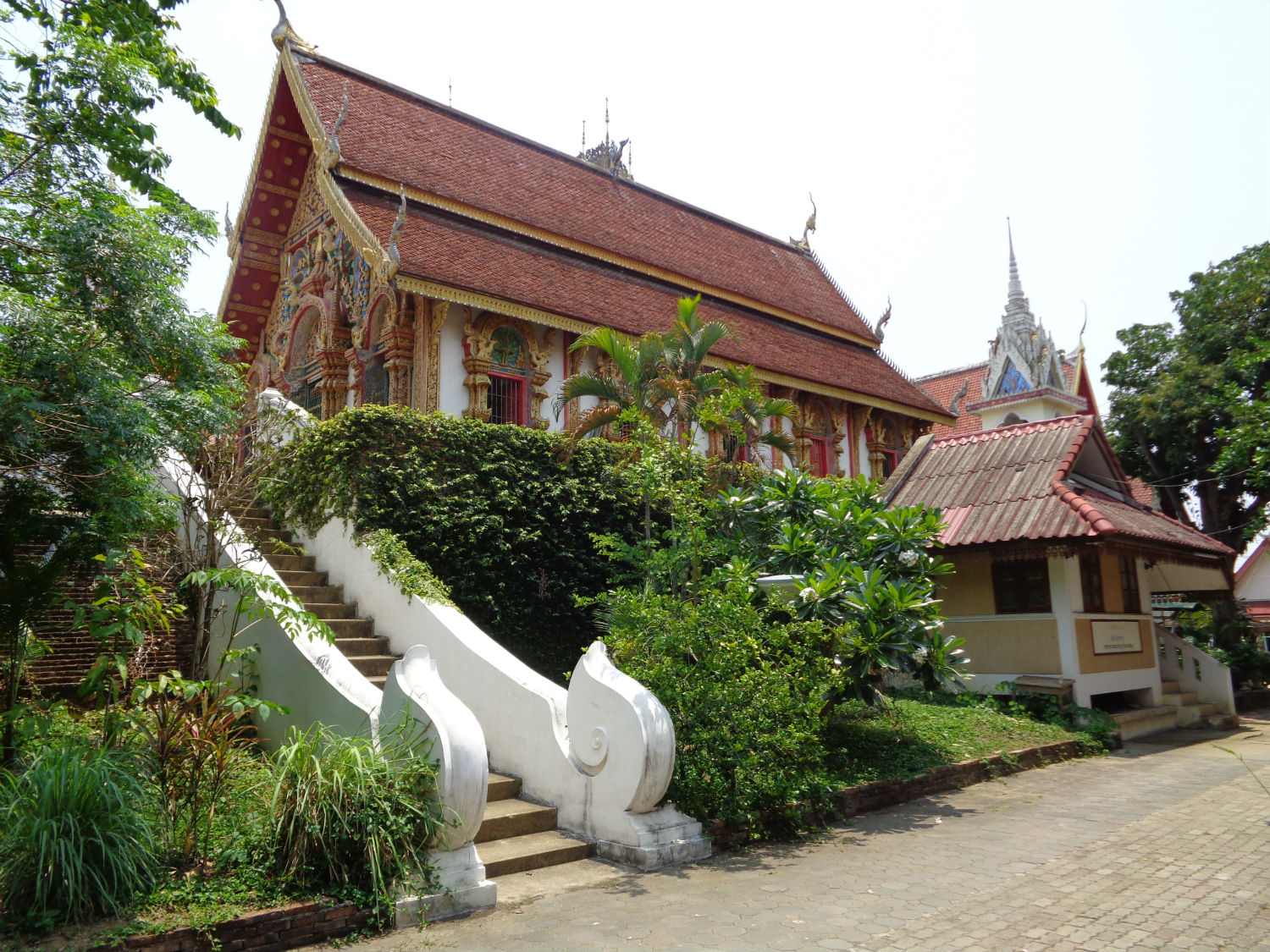
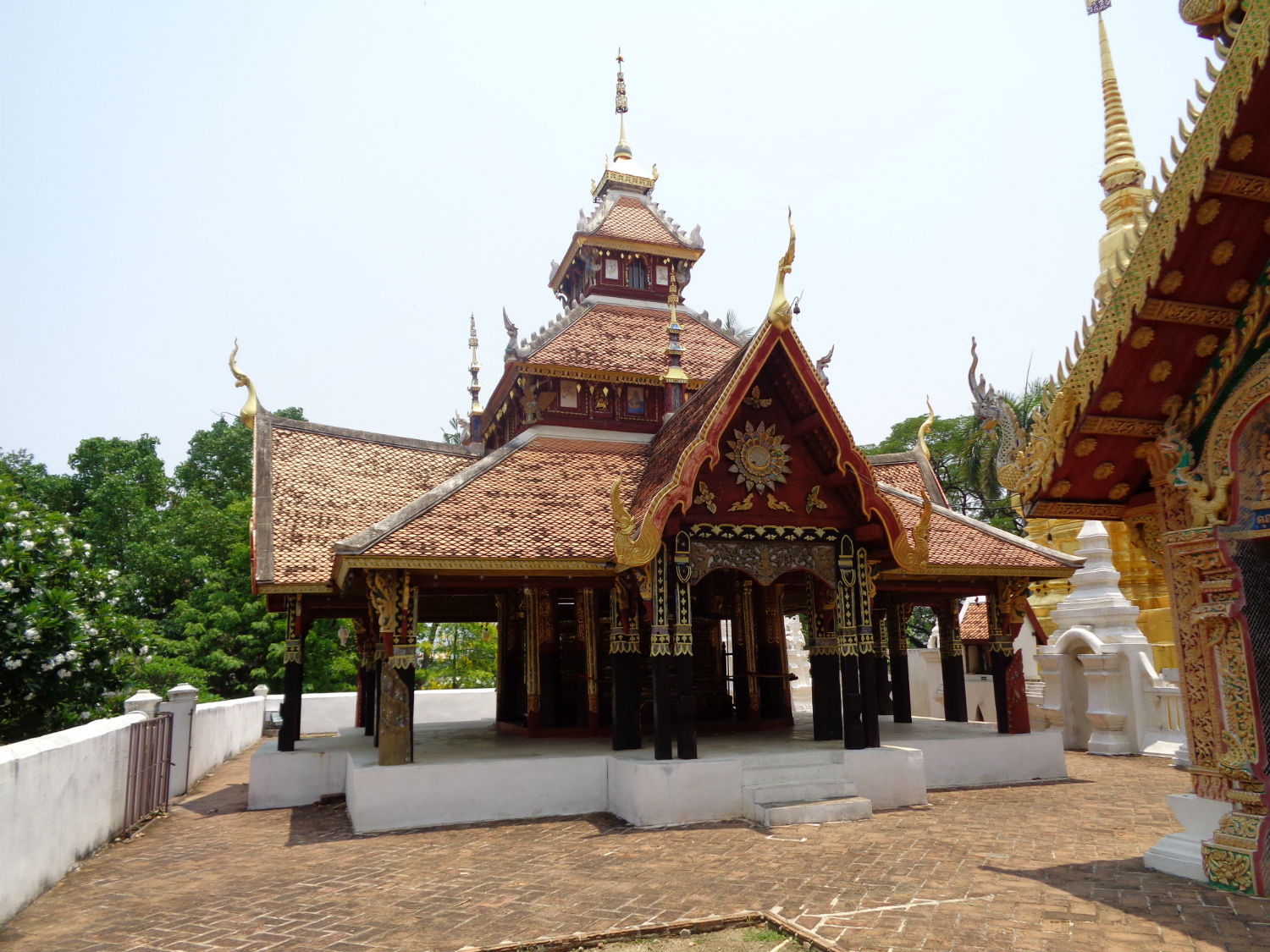
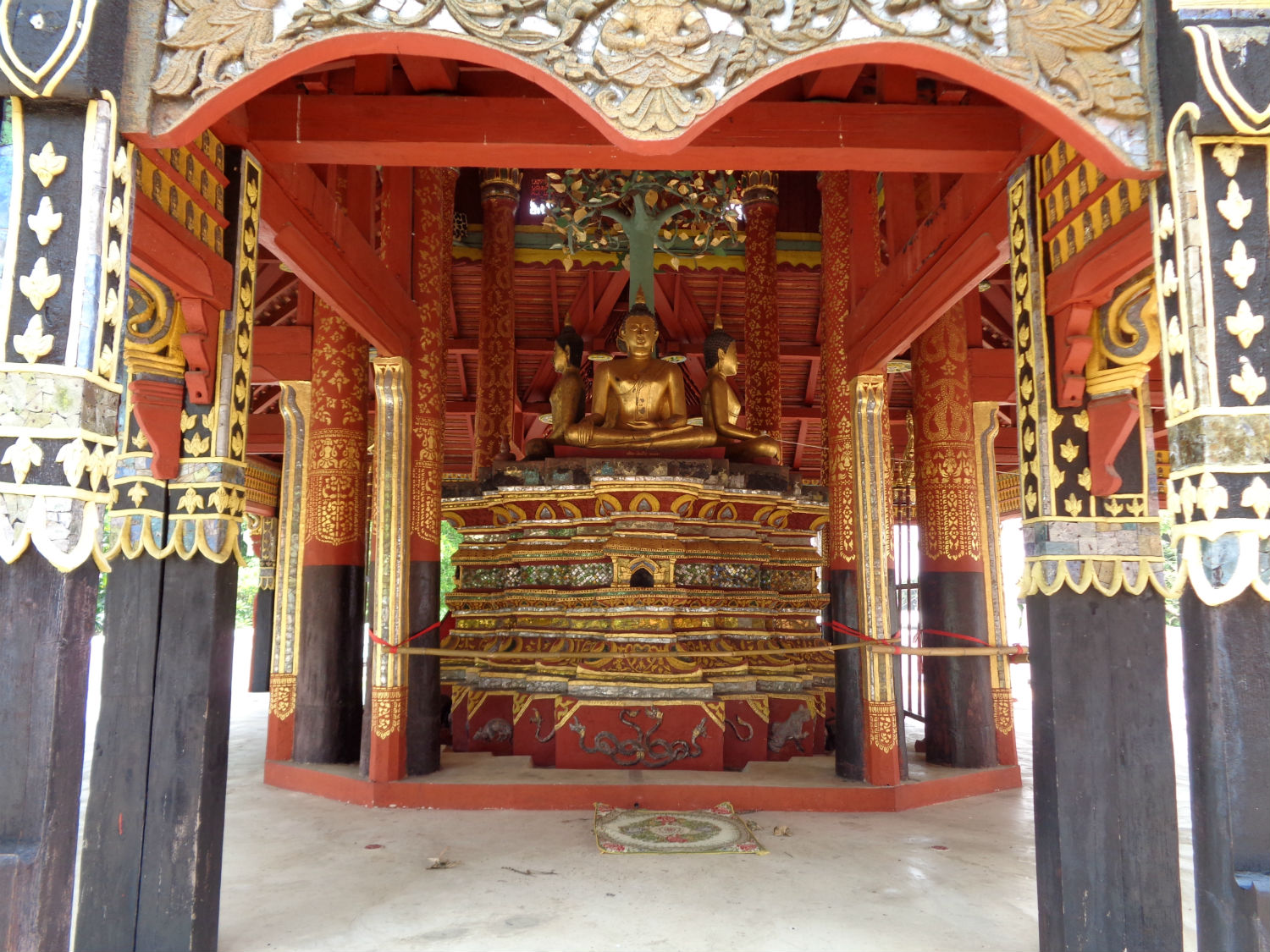
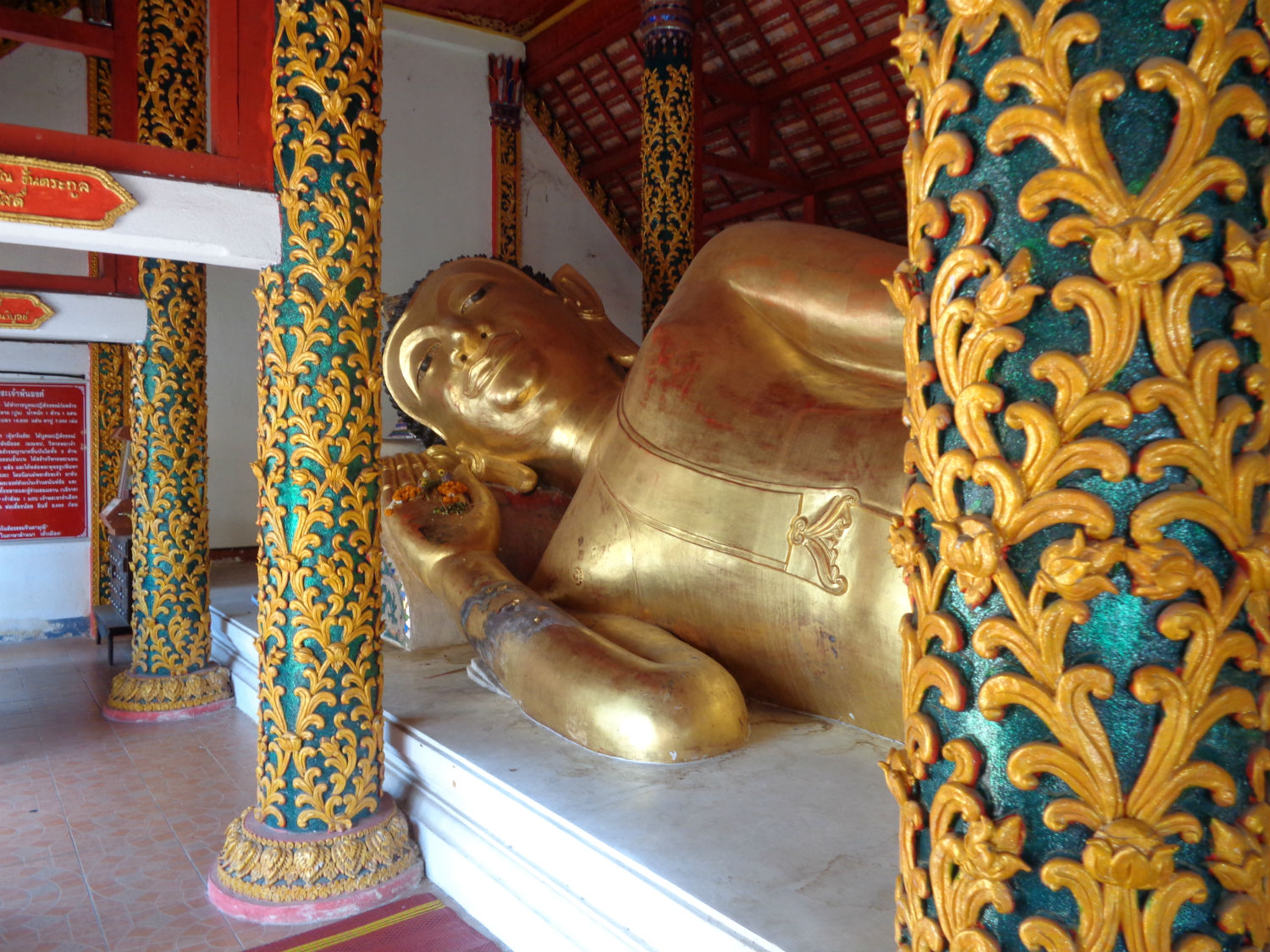
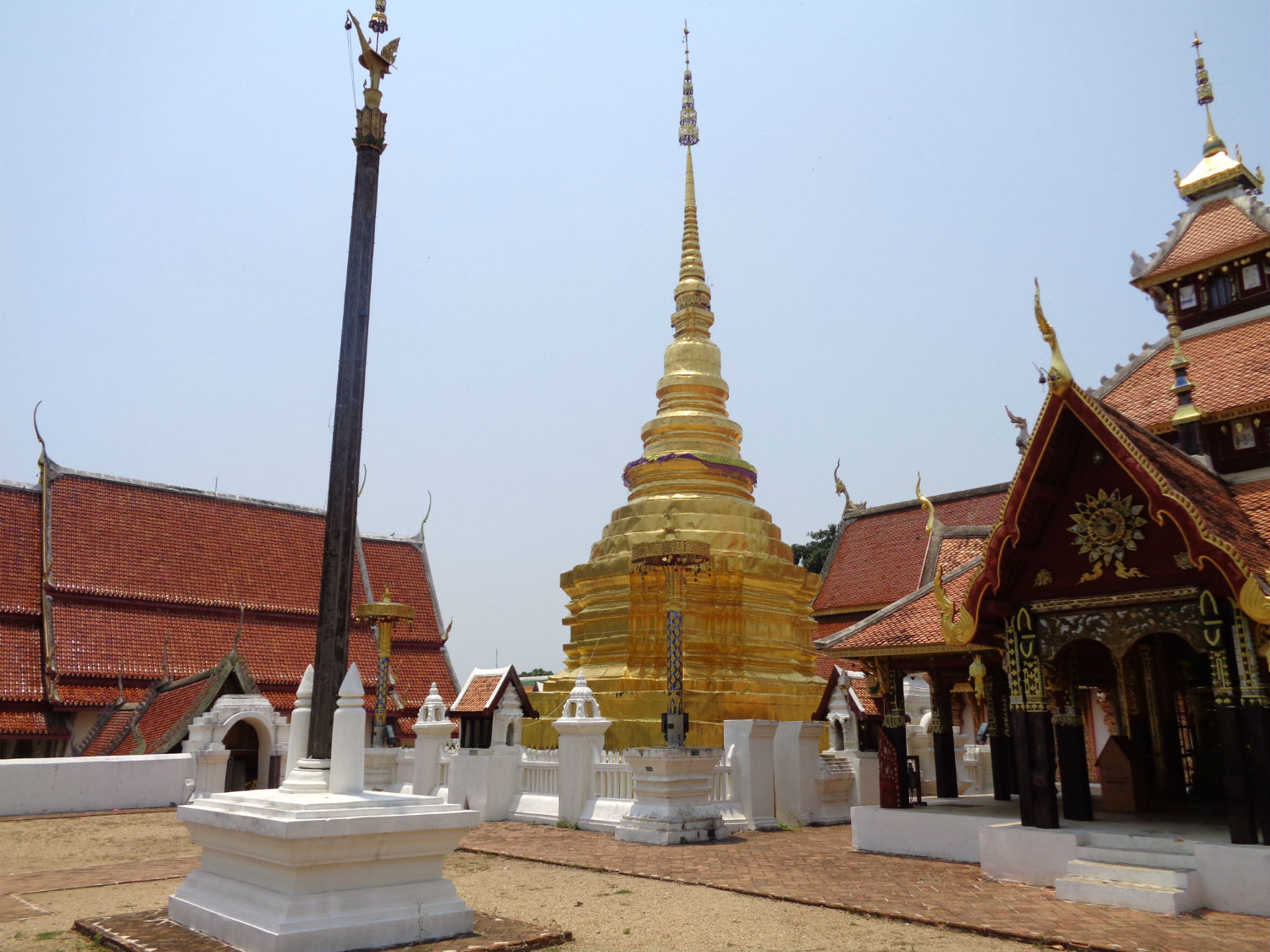
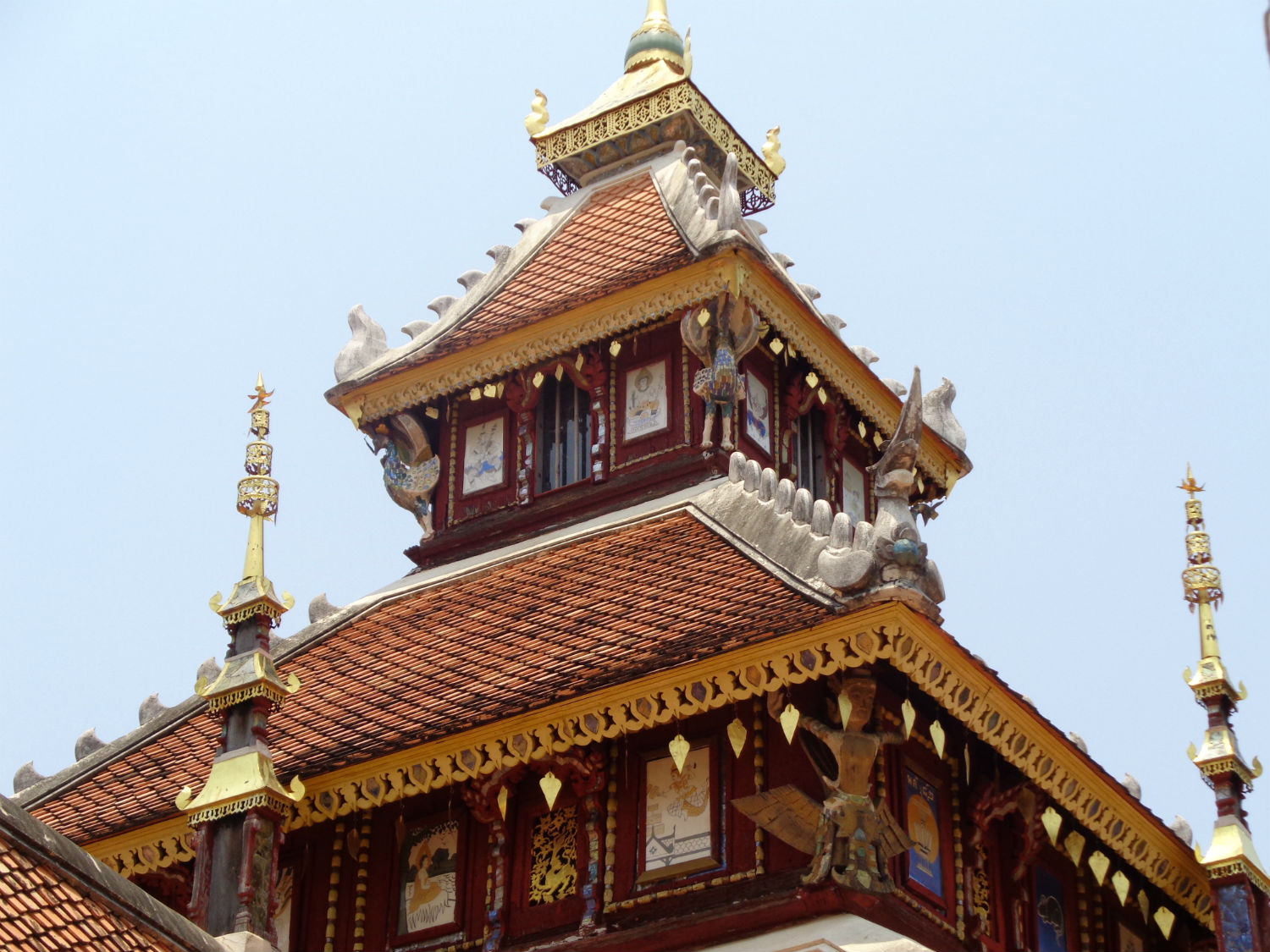
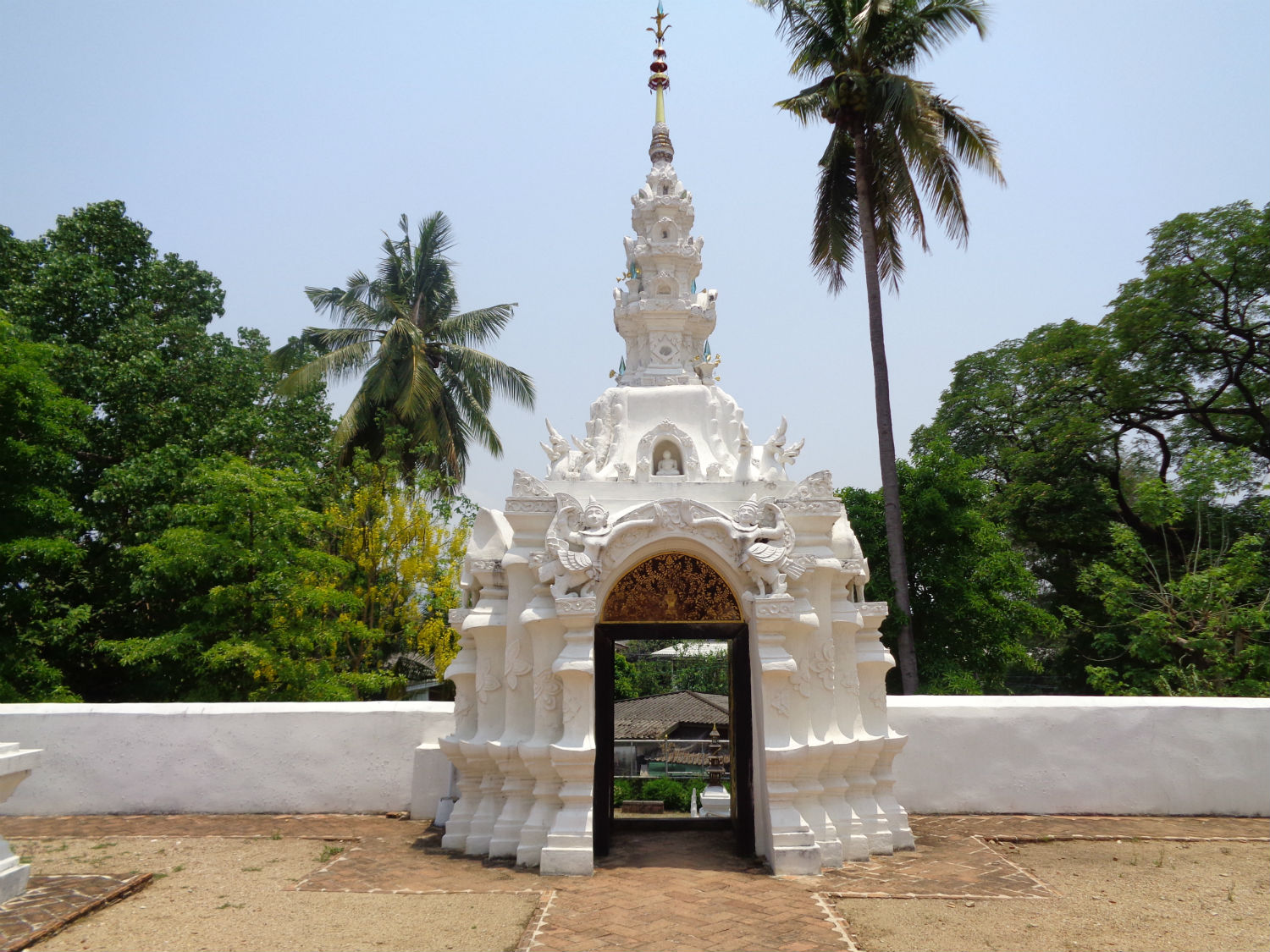
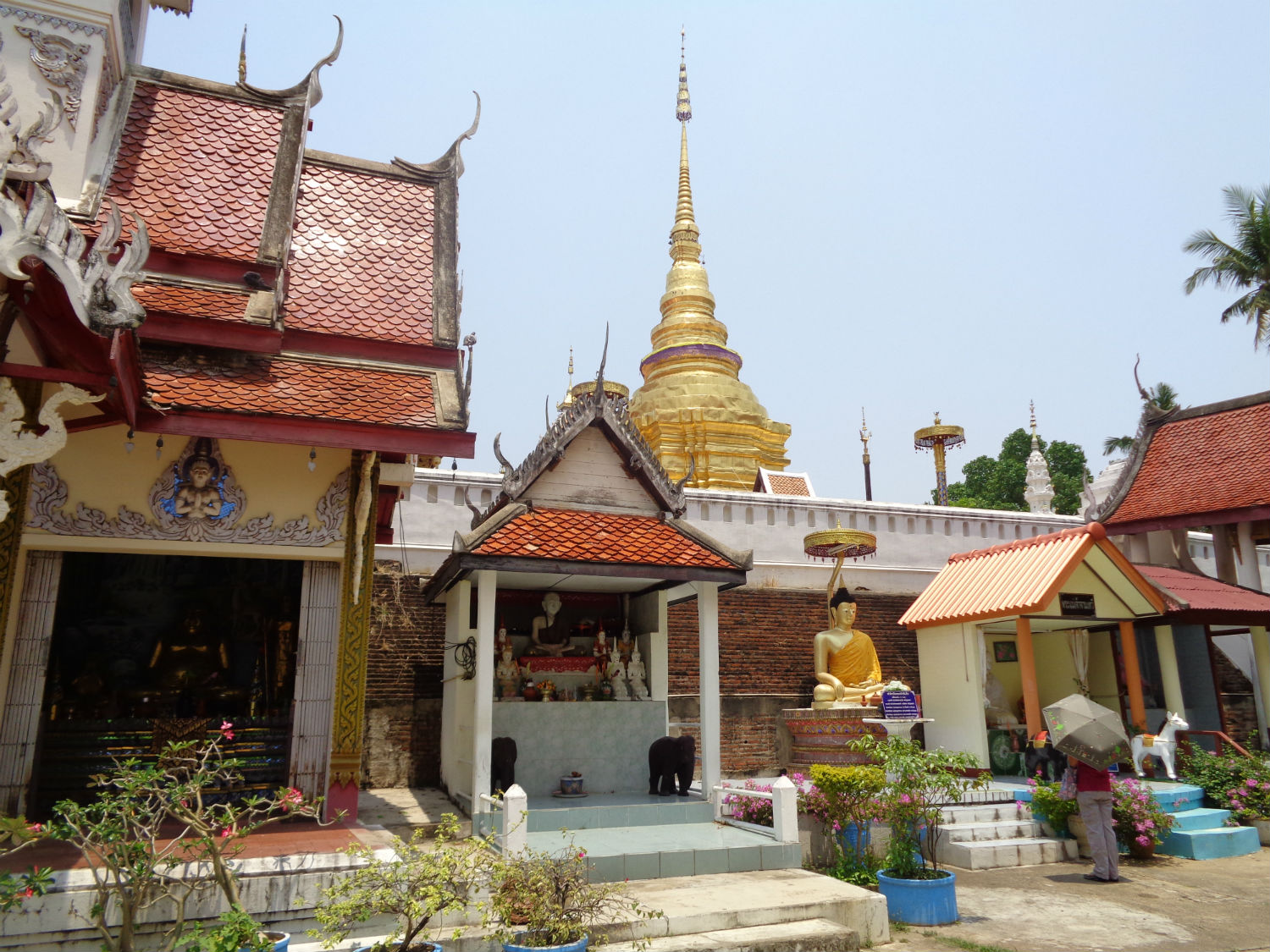
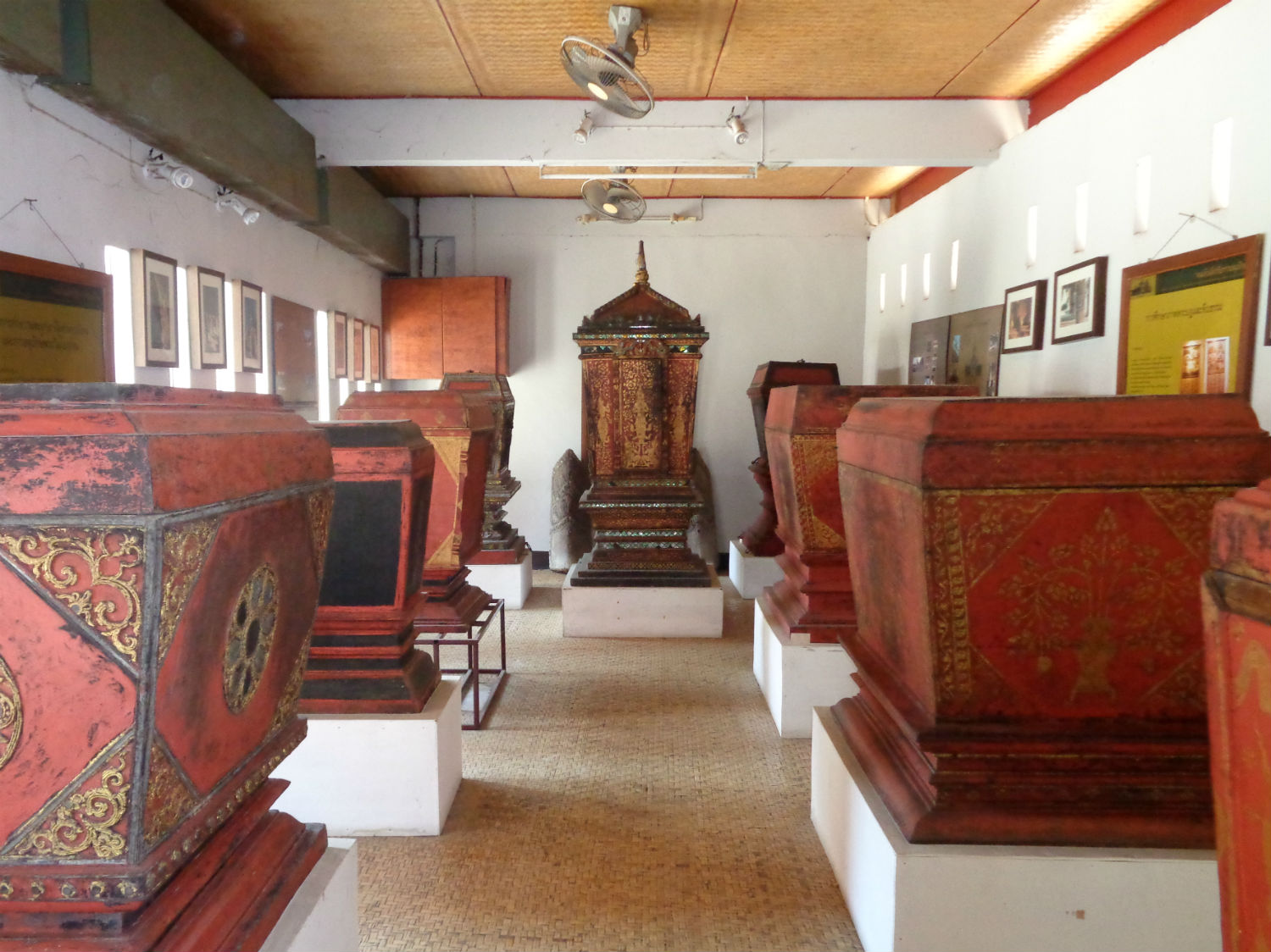
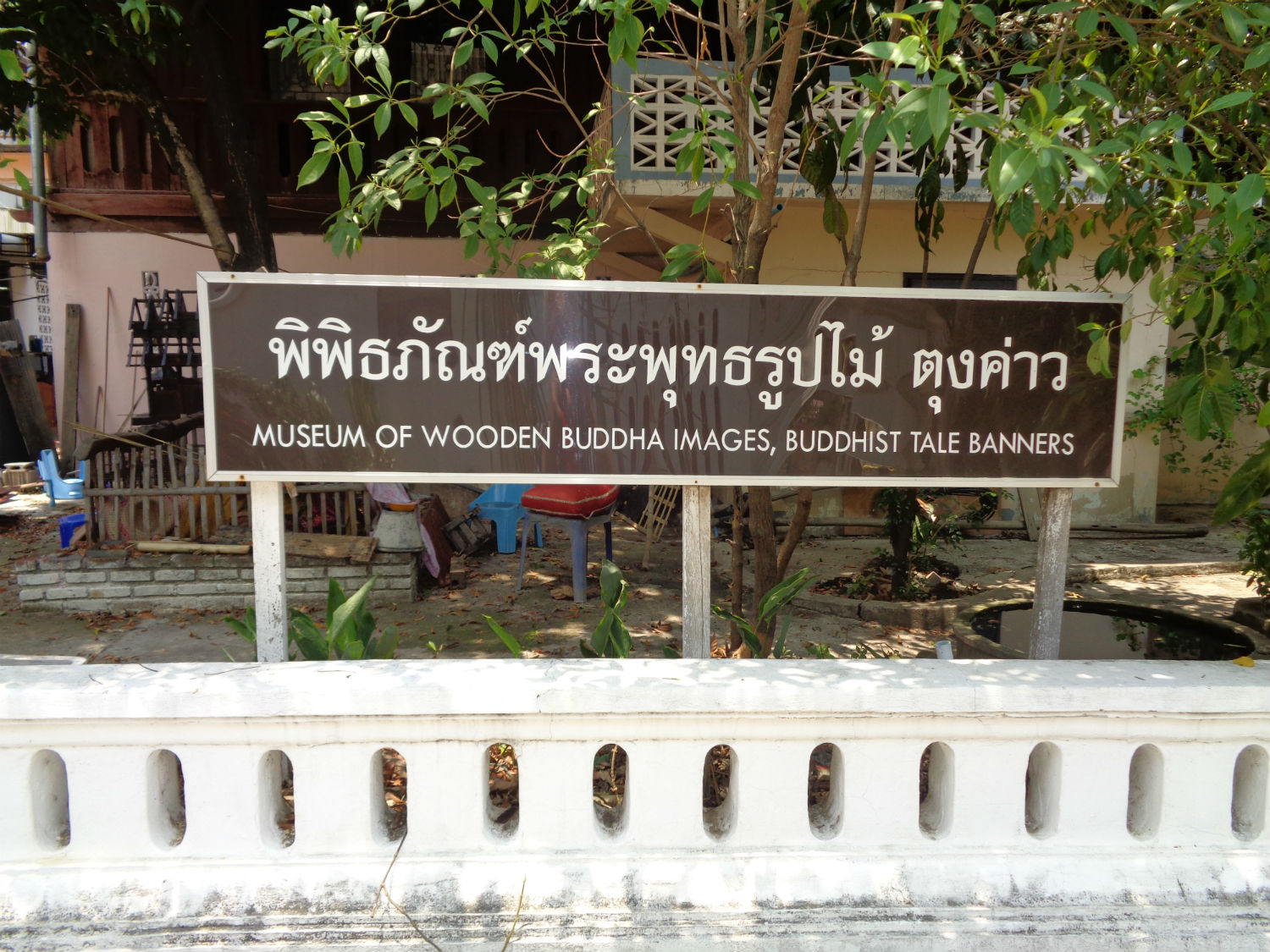
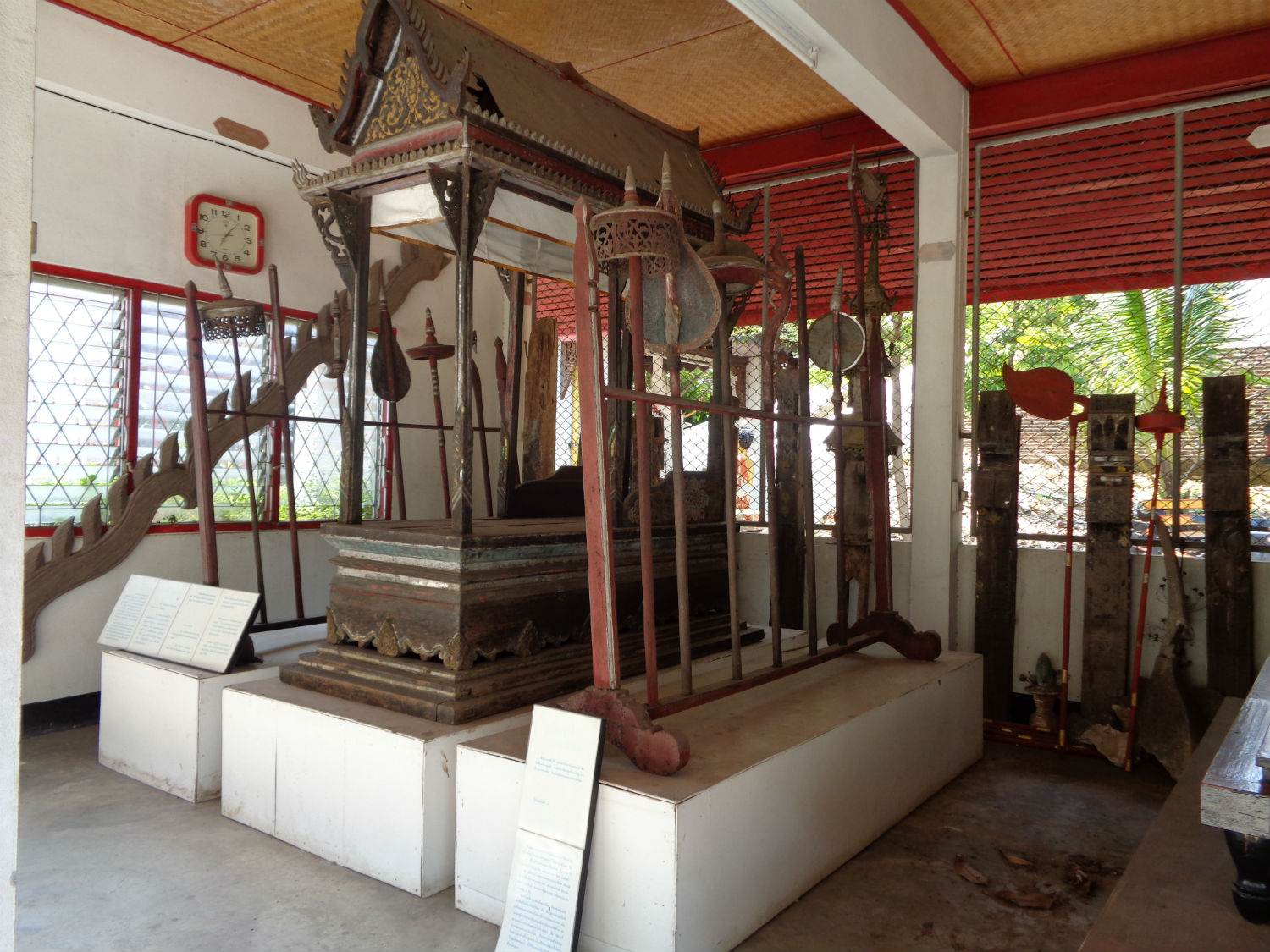
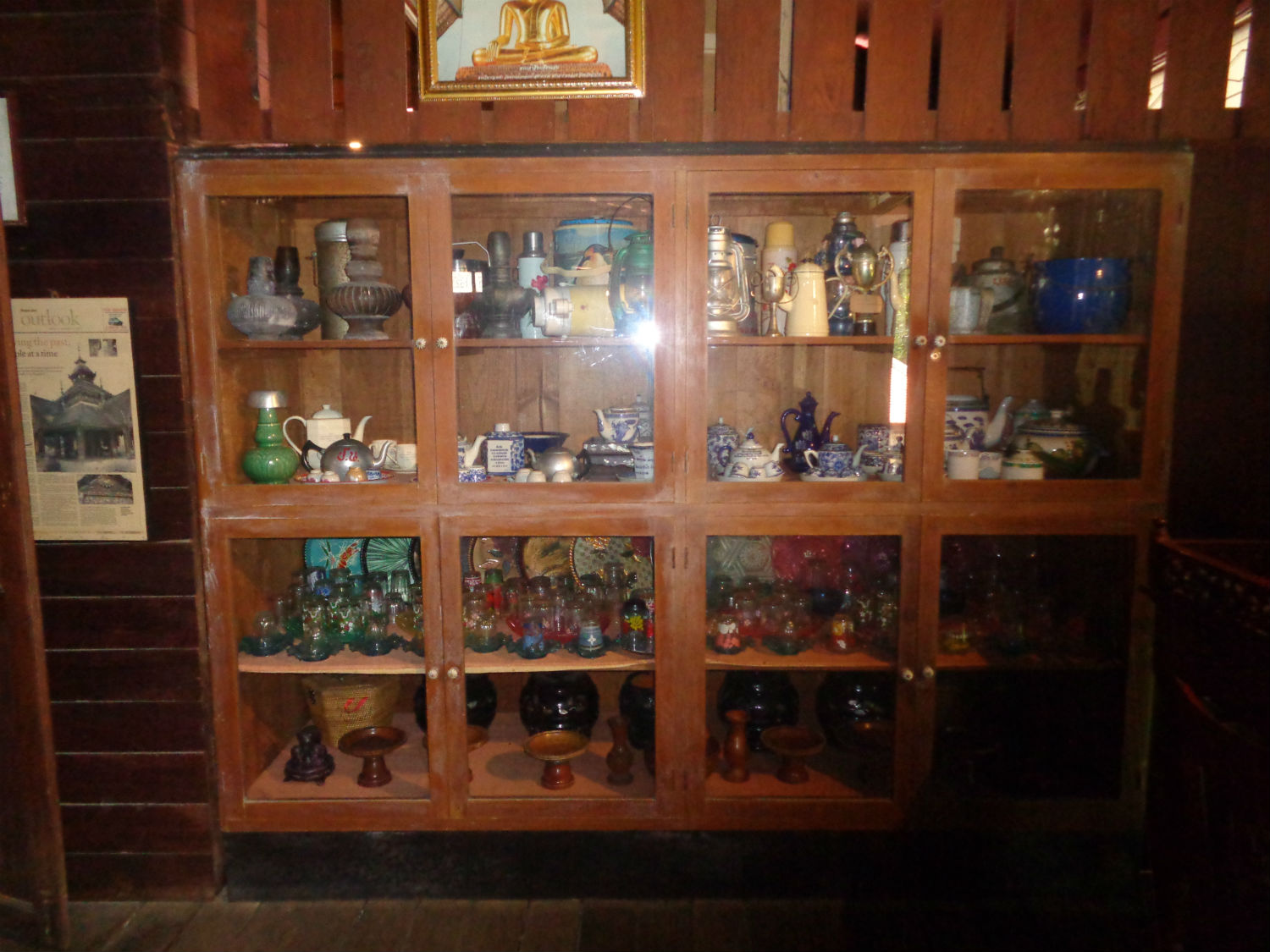
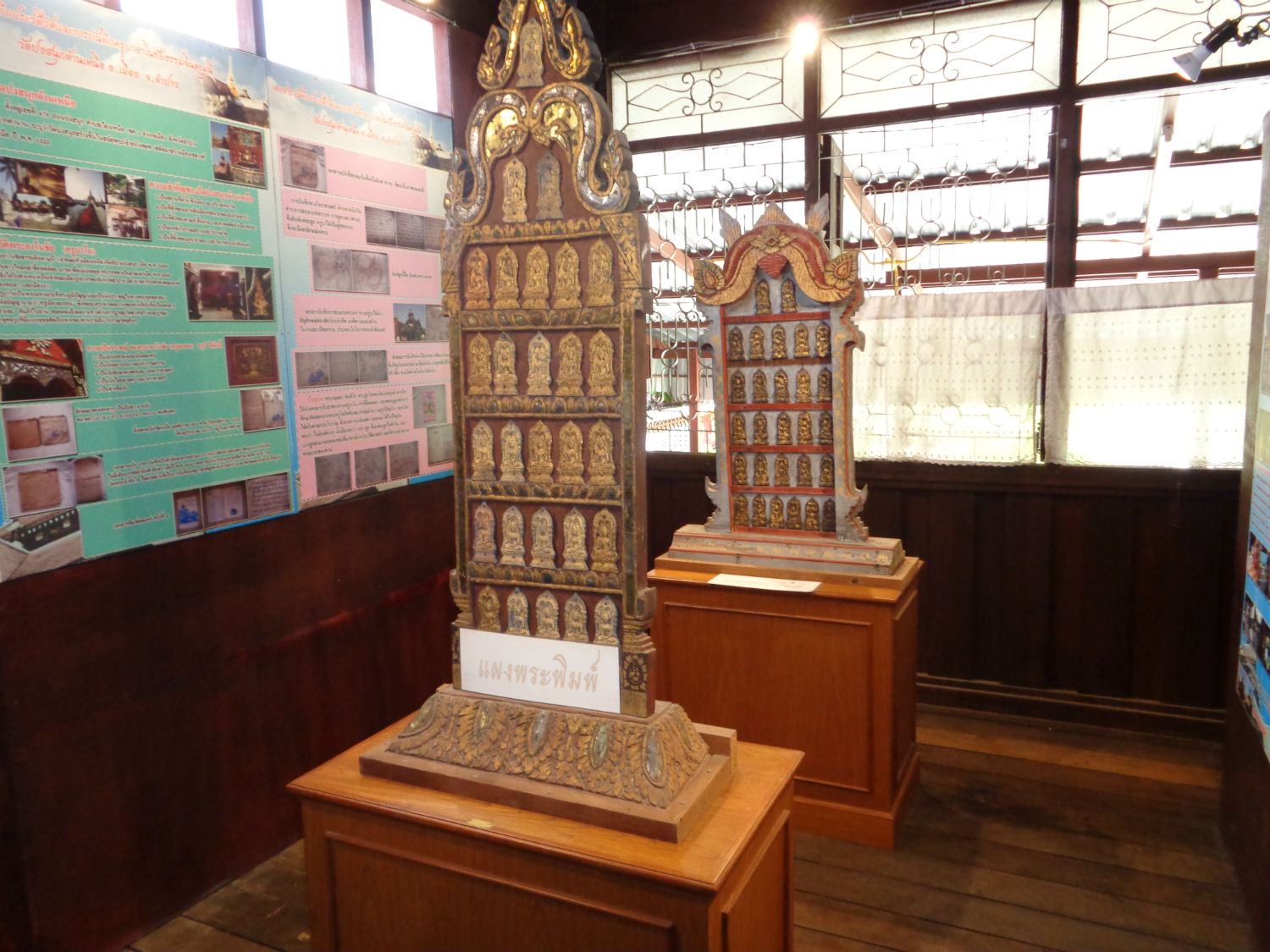
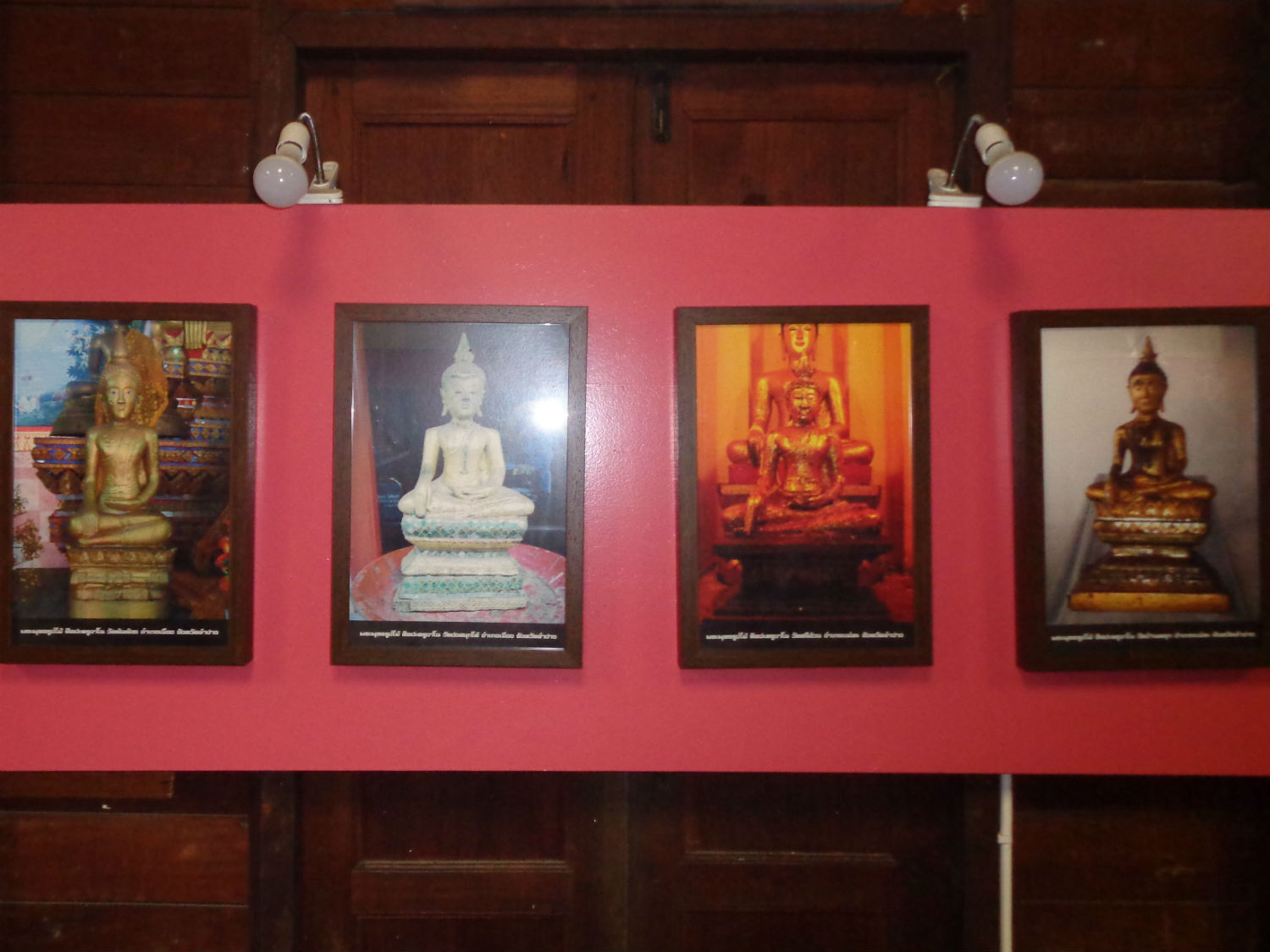
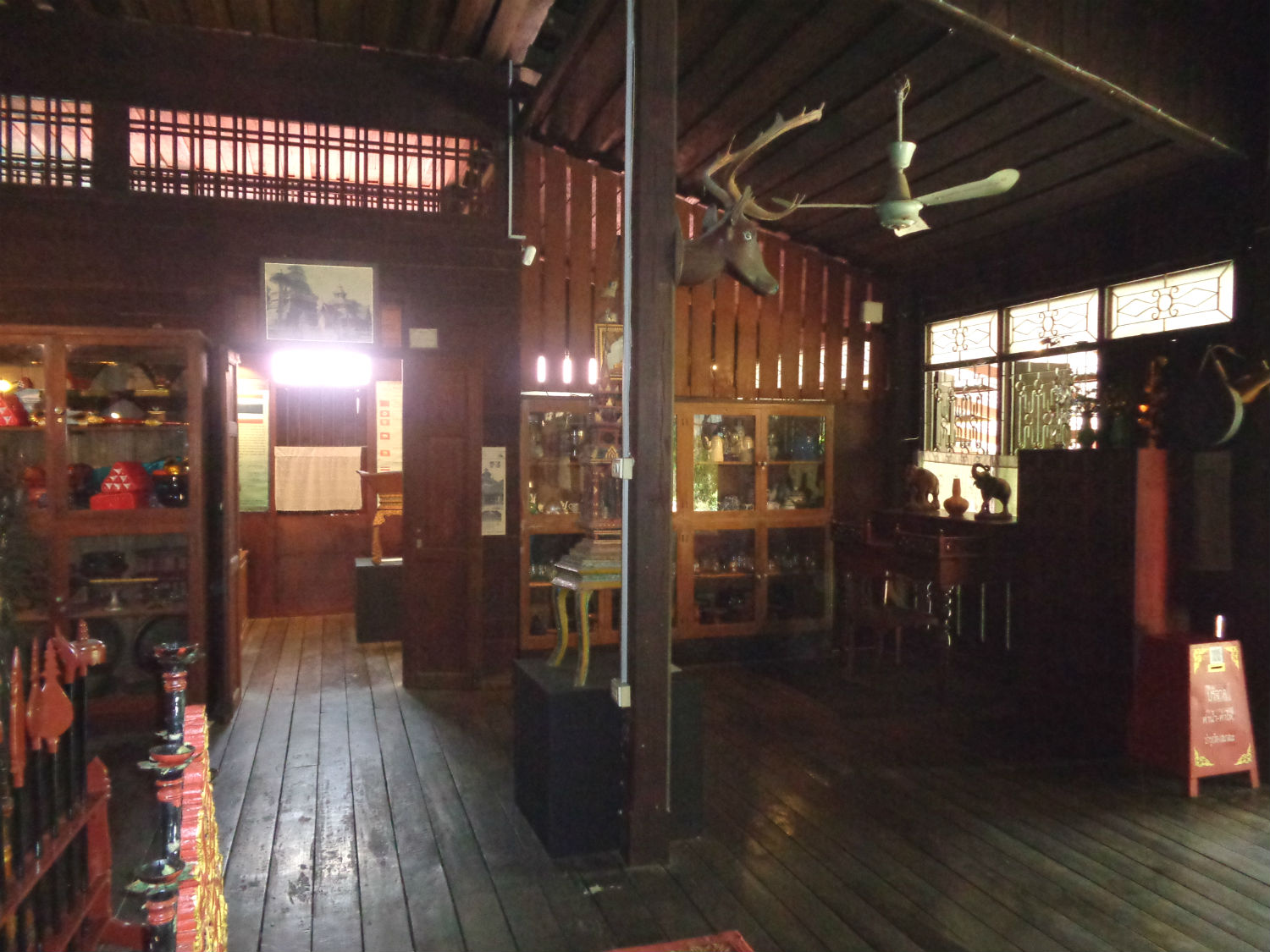 Wat Pong Sanuk Nua and Wat Pong Sanuk Museum, Lampang
Wat Pong Sanuk Nua and Wat Pong Sanuk Museum, Lampang
Wat Phra Kaew Don Tao Sucha Daram........Moving onto Wat Phra Kaew Don Tao, I find a bewildering number of temple buildings in various styles; there seems to have been a settlement here over 1,000 years ago. Thankfully there are several sources of information I can use. Some historical knowledge gained over time is proving useful too with the aid of onsite information. It addition to this as a token of the importance of Wat Phra Kaew Don Tao, definitely on the tourist trail of Lampang city, a young female temple representative is on hand to answer questions of which I have many.
Perhaps the most difficult thing for me is to separate fact from legend; I hesitate to use the word fiction. The legend states that a Mrs Suchada found an emerald in a watermelon and gave it to the head monk who carved it into the image of Phra Kaew Don Tao which was later enshrined at Wat Phra That Lampang Luang. The legend relates that Mrs Suchada was later executed by the Lampang governor for having committed adultery with the monk.
Quite how much truth lies in this is uncertain but what is certain is that there were originally two temples here prior to 1984 when they were combined. To the right in a separate compound is the viharn of Wat Sucha Daram built in reverence to Mrs Suchada. Here is evidence of some truth since the temple here was built between 1782 and 1809 in Chiang Saen style and that’s like a tuning fork to my ear since that puts the construction date during the time that King Rama I sacked the city of Chiang Saen, then under Burmese control, leaving it abandoned for 100’s of years. I know of a procession of those now destitute leaving the stricken city but had no idea many ended up here. It seems that Mrs Suchada had personally intervened to ensure their safety. Having become grossly involve with this story I’m in for another huge surprise.
Perhaps the most difficult thing for me is to separate fact from legend; I hesitate to use the word fiction. The legend states that a Mrs Suchada found an emerald in a watermelon and gave it to the head monk who carved it into the image of Phra Kaew Don Tao which was later enshrined at Wat Phra That Lampang Luang. The legend relates that Mrs Suchada was later executed by the Lampang governor for having committed adultery with the monk.
Quite how much truth lies in this is uncertain but what is certain is that there were originally two temples here prior to 1984 when they were combined. To the right in a separate compound is the viharn of Wat Sucha Daram built in reverence to Mrs Suchada. Here is evidence of some truth since the temple here was built between 1782 and 1809 in Chiang Saen style and that’s like a tuning fork to my ear since that puts the construction date during the time that King Rama I sacked the city of Chiang Saen, then under Burmese control, leaving it abandoned for 100’s of years. I know of a procession of those now destitute leaving the stricken city but had no idea many ended up here. It seems that Mrs Suchada had personally intervened to ensure their safety. Having become grossly involve with this story I’m in for another huge surprise.
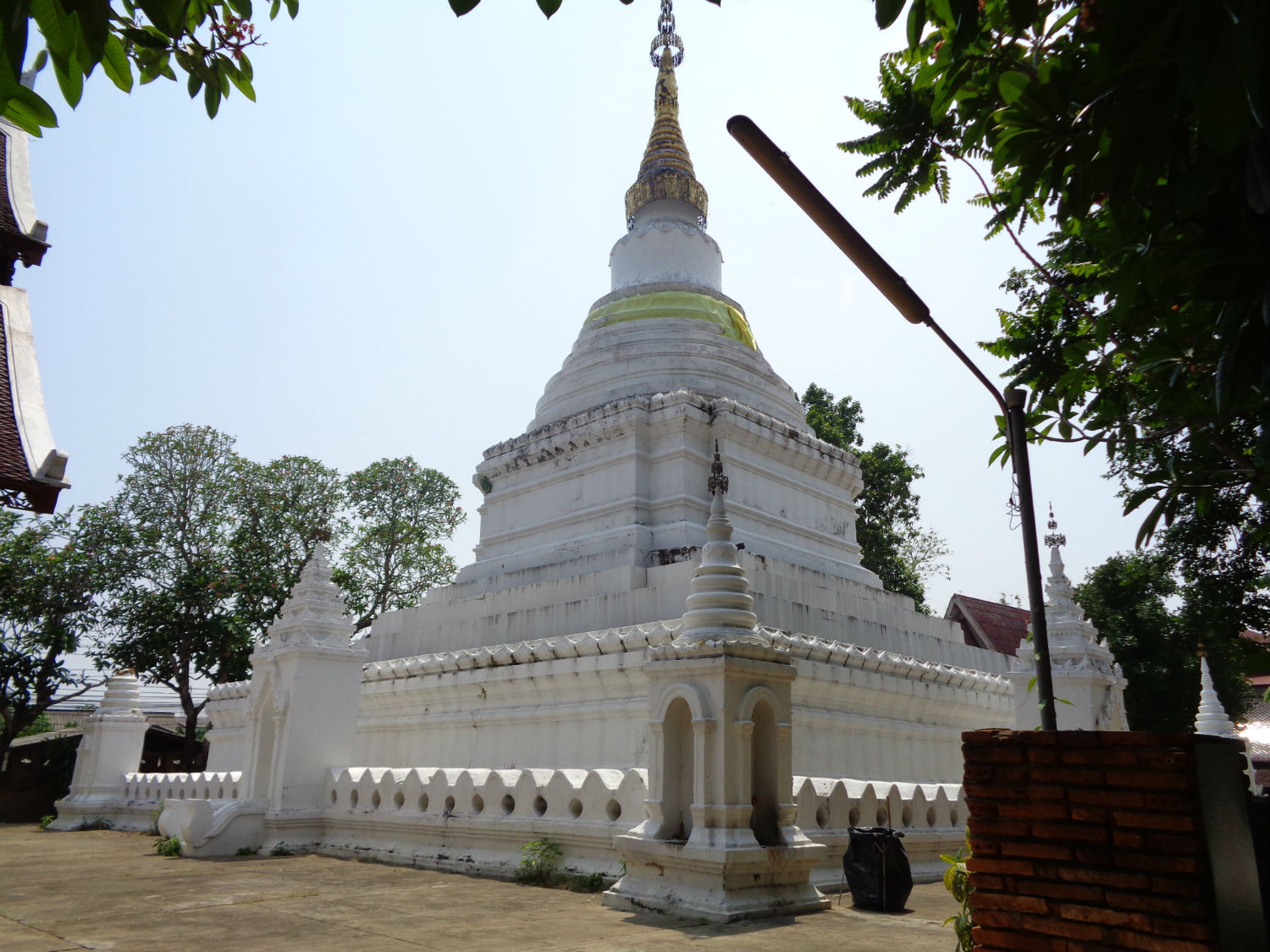
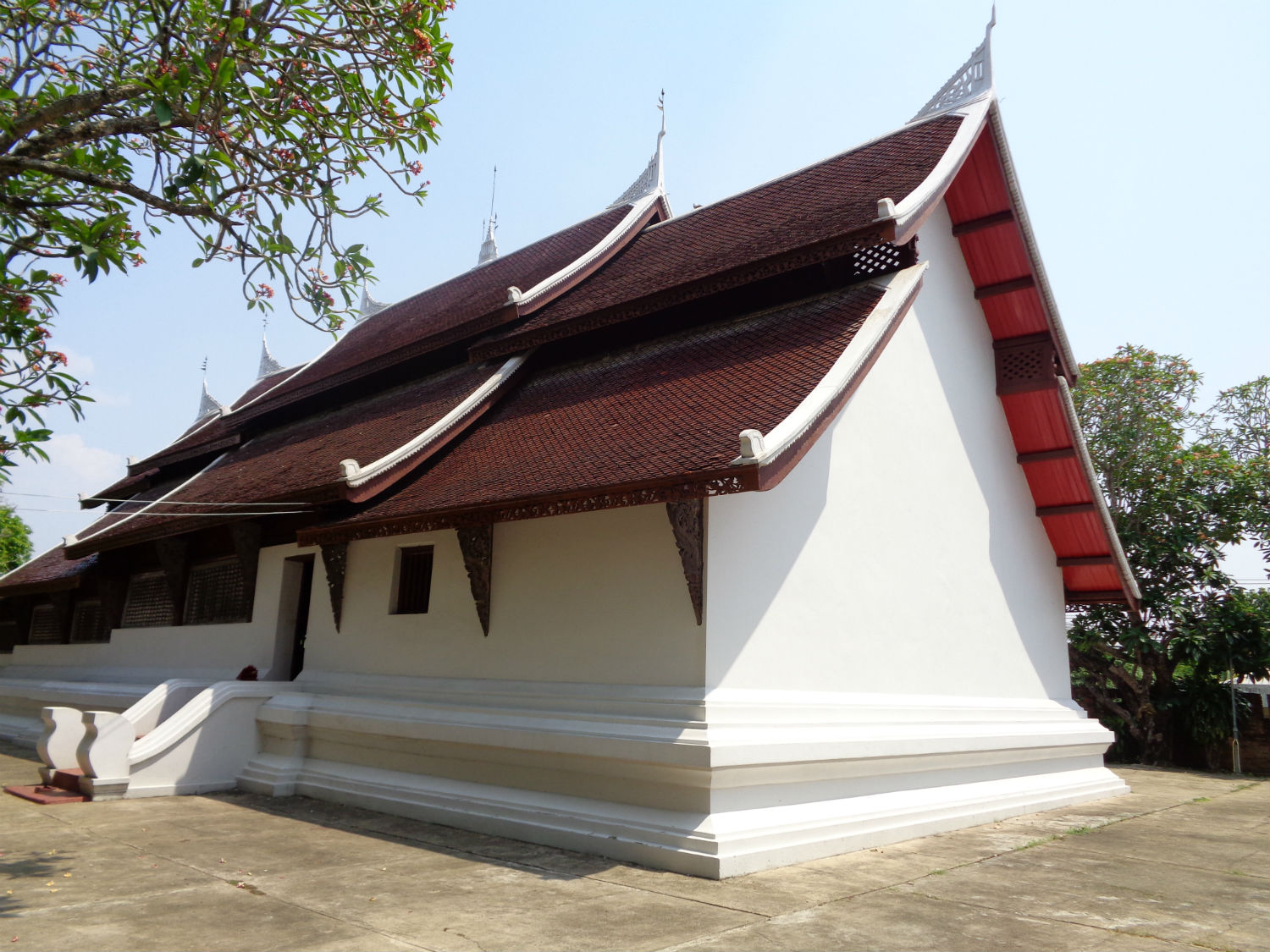
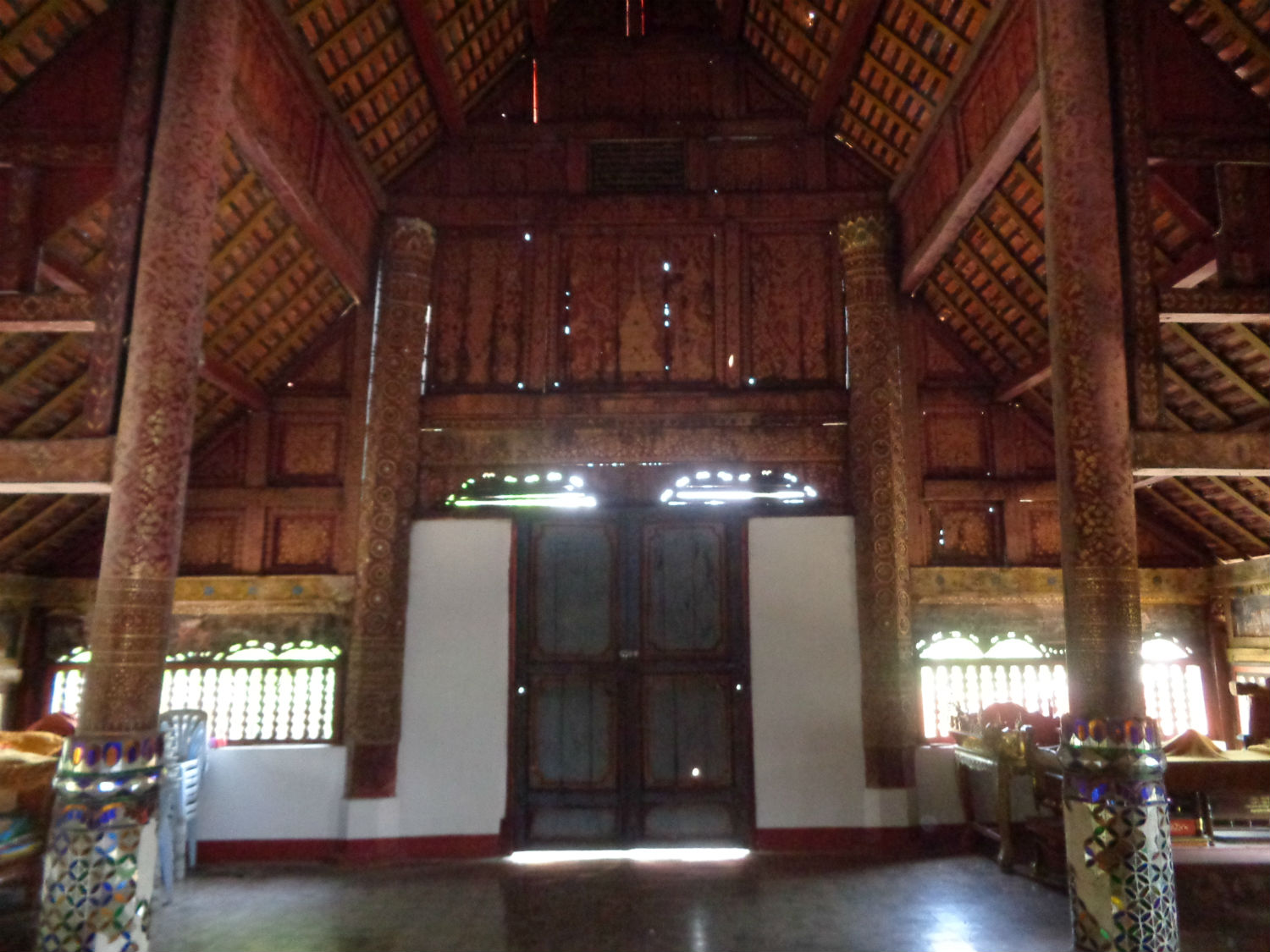
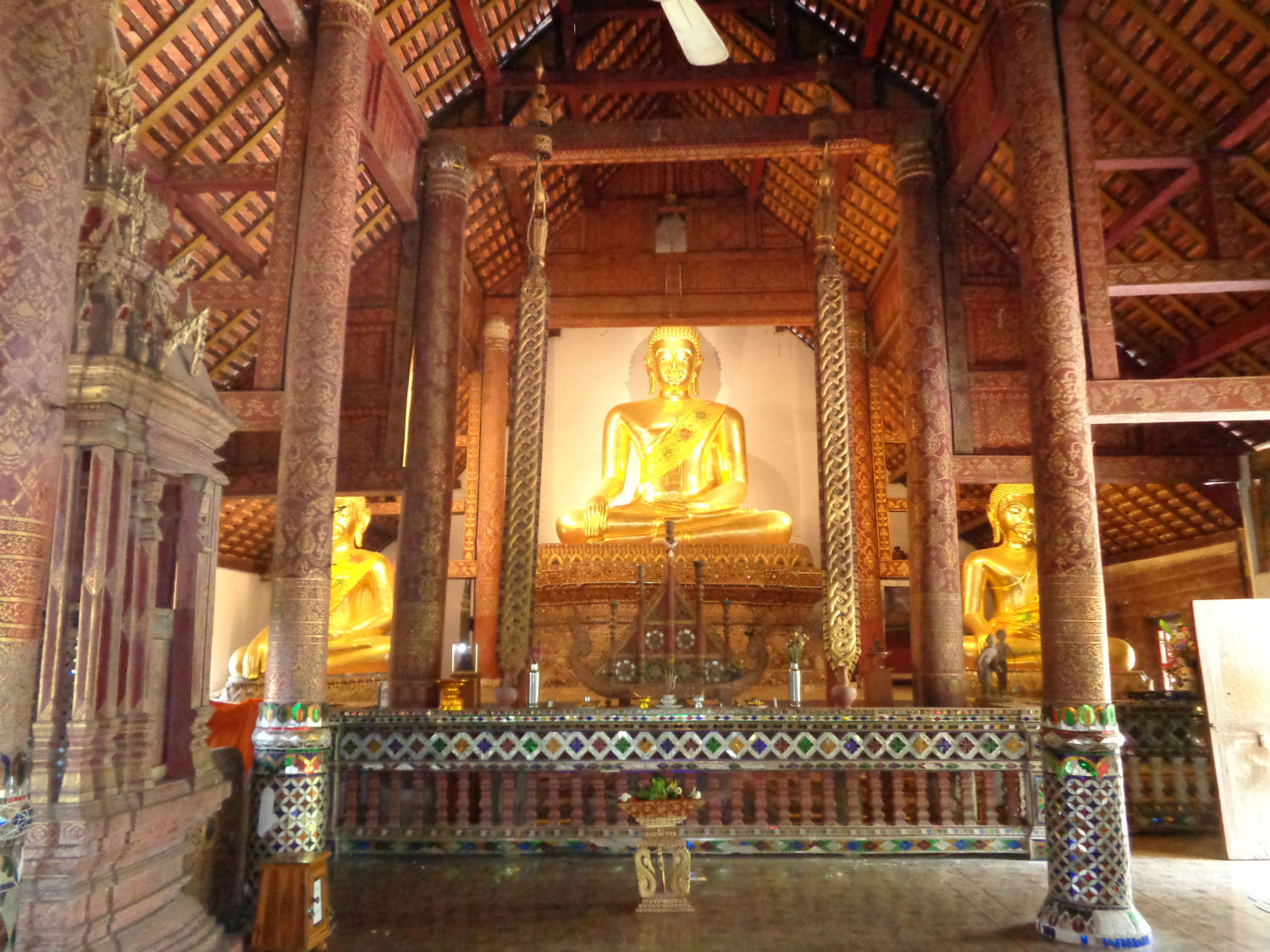
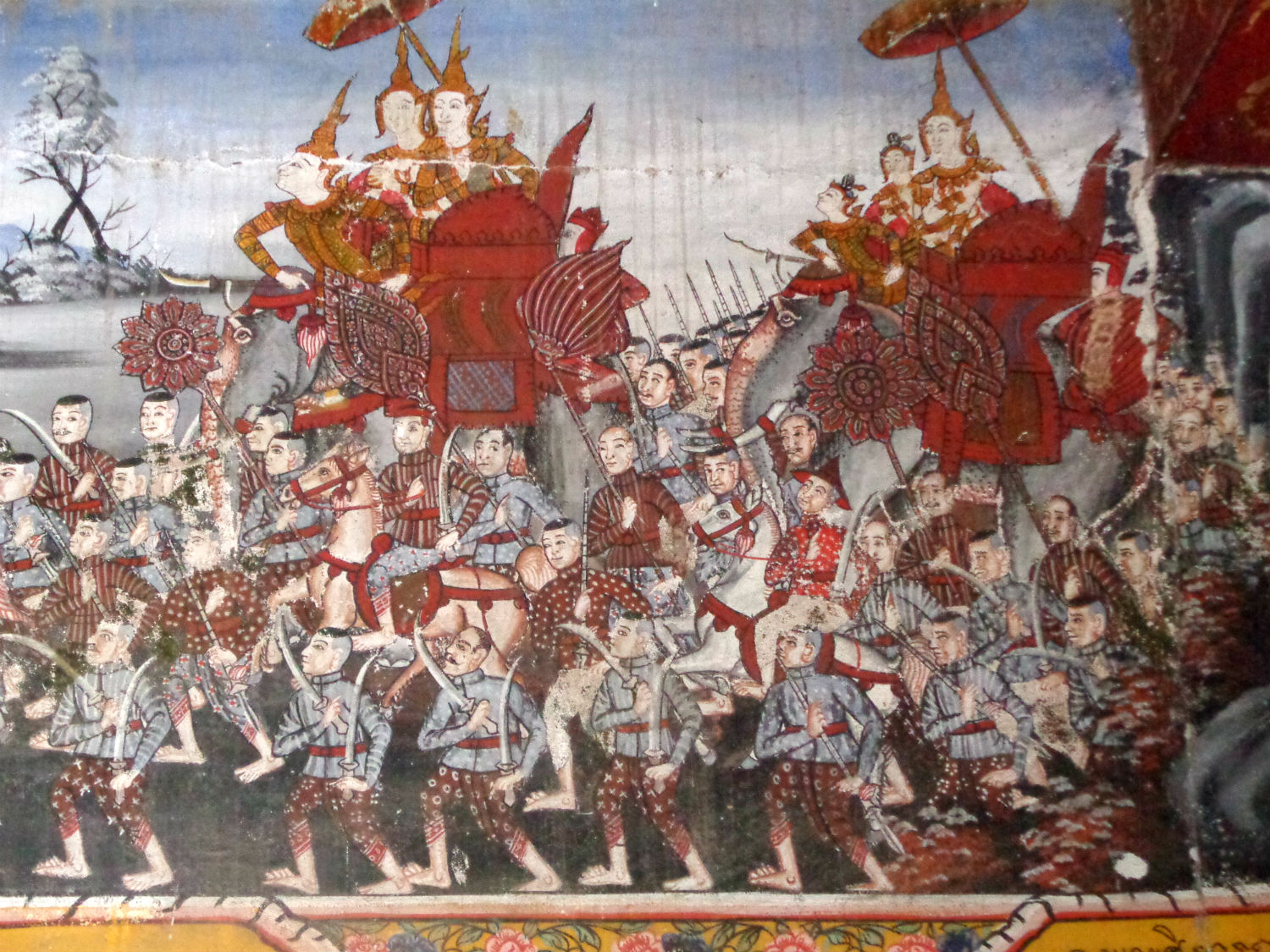
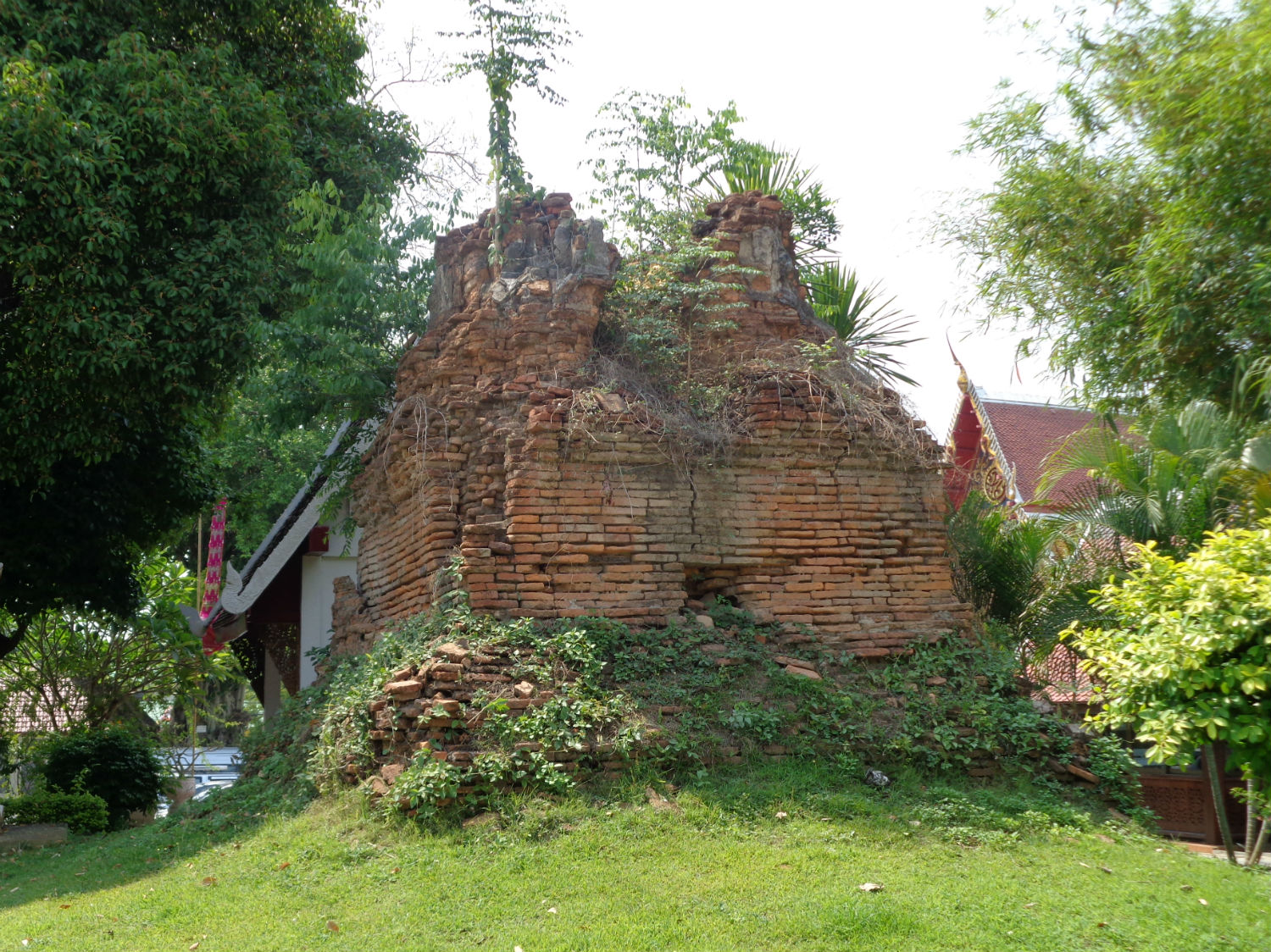 Wat Sucha Daram and the ruin of Wat Larmchang (bottom right), Lampang
Wat Sucha Daram and the ruin of Wat Larmchang (bottom right), Lampang To the left of the compound is a temple building housing a Buddha image in Burmese style. By this time I have learnt to recognise the distinctive head ware of this type of image. The representative reappears and sits in the porch in front of the image. Reacting likewise I stare at the image then up at the ceiling where she’s pointing. The ceiling is beautifully embellished with a mosaic of coloured glass to form panels containing figures that look like cherubs. With very limited English she looks down at me with a smile that cuts through like a knife and mentions ‘Cupid’. Not quite being in a position to go down that path she points to another panel, this time in diamond form and mentions a royal wedding. Should I be concerned? Well when she mentions British I jolly well ought to be! Refocusing on the emblem up above, a million thoughts go through my head as I recall that the British were heavily involved in Lampang in the trade in teak wood. So whose wedding does it represent? A vital clue now reaches me: The temple was built in the reign of Rama V which makes it late Victorian but it's not enough unless I can identify the crest.
Within the compound there are more examples of wooden objects and a more modern naga staircase but having concentrated on this temple for so long I could still add more but I seriously have to move on.
Within the compound there are more examples of wooden objects and a more modern naga staircase but having concentrated on this temple for so long I could still add more but I seriously have to move on.
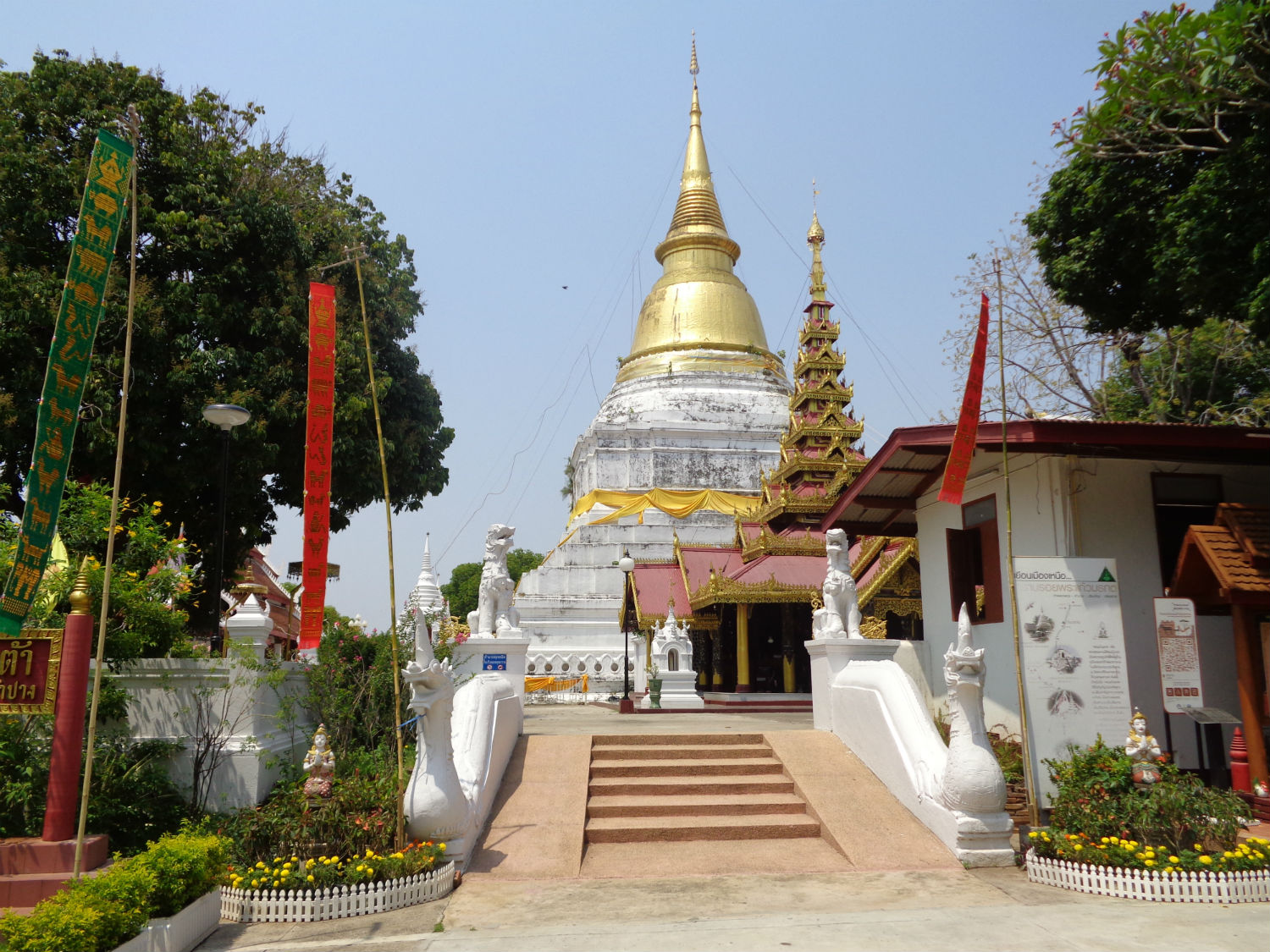
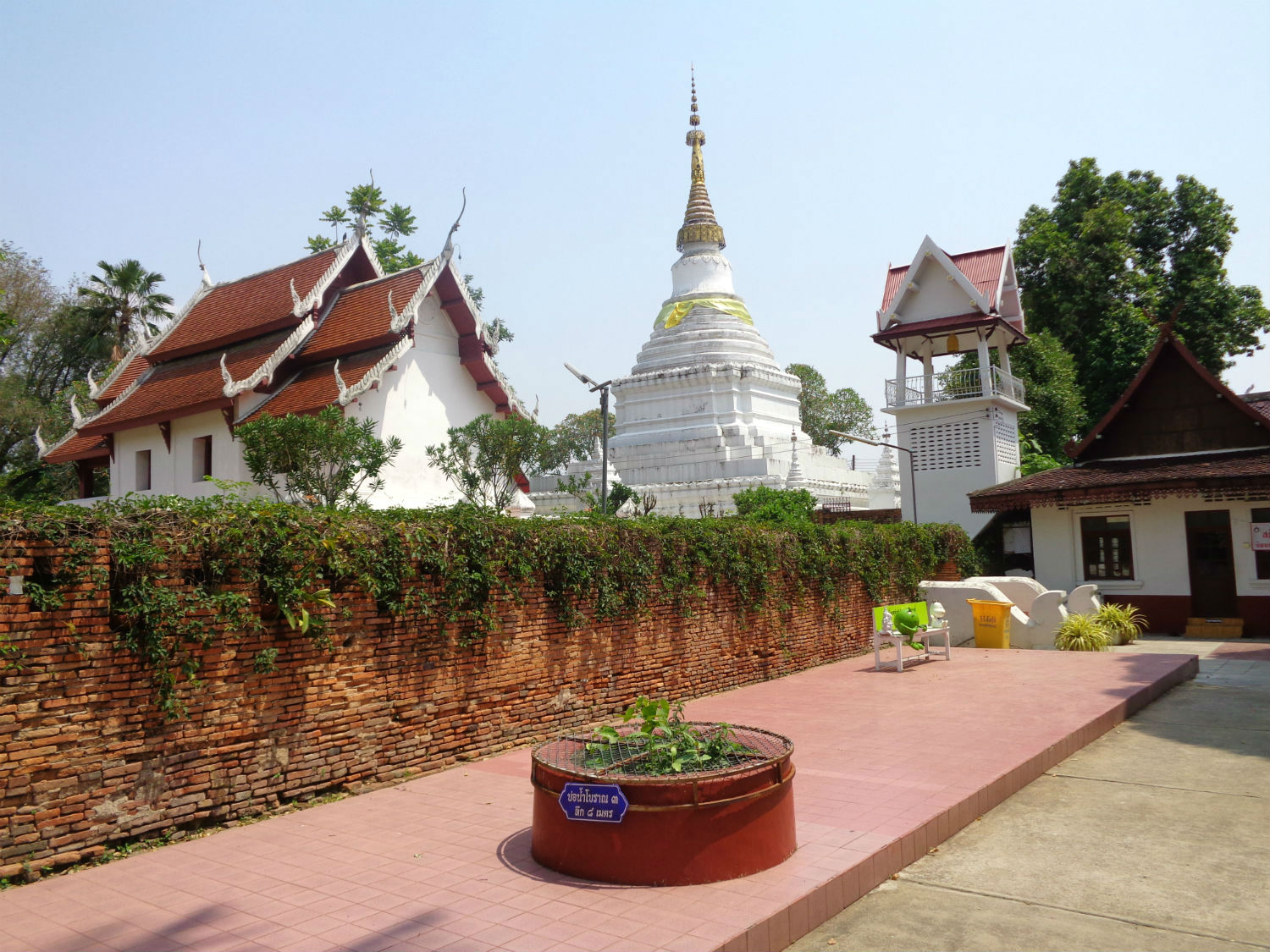
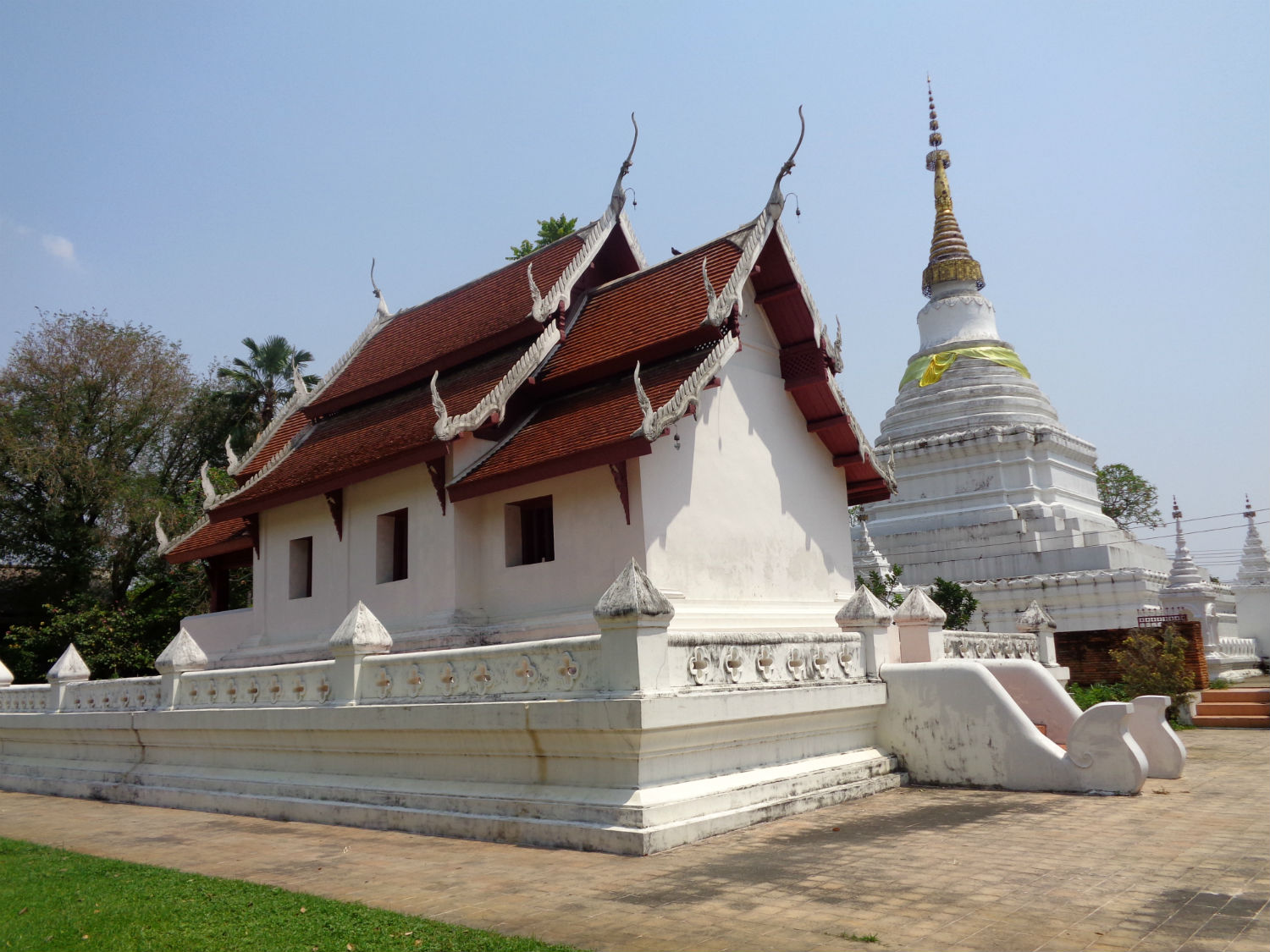
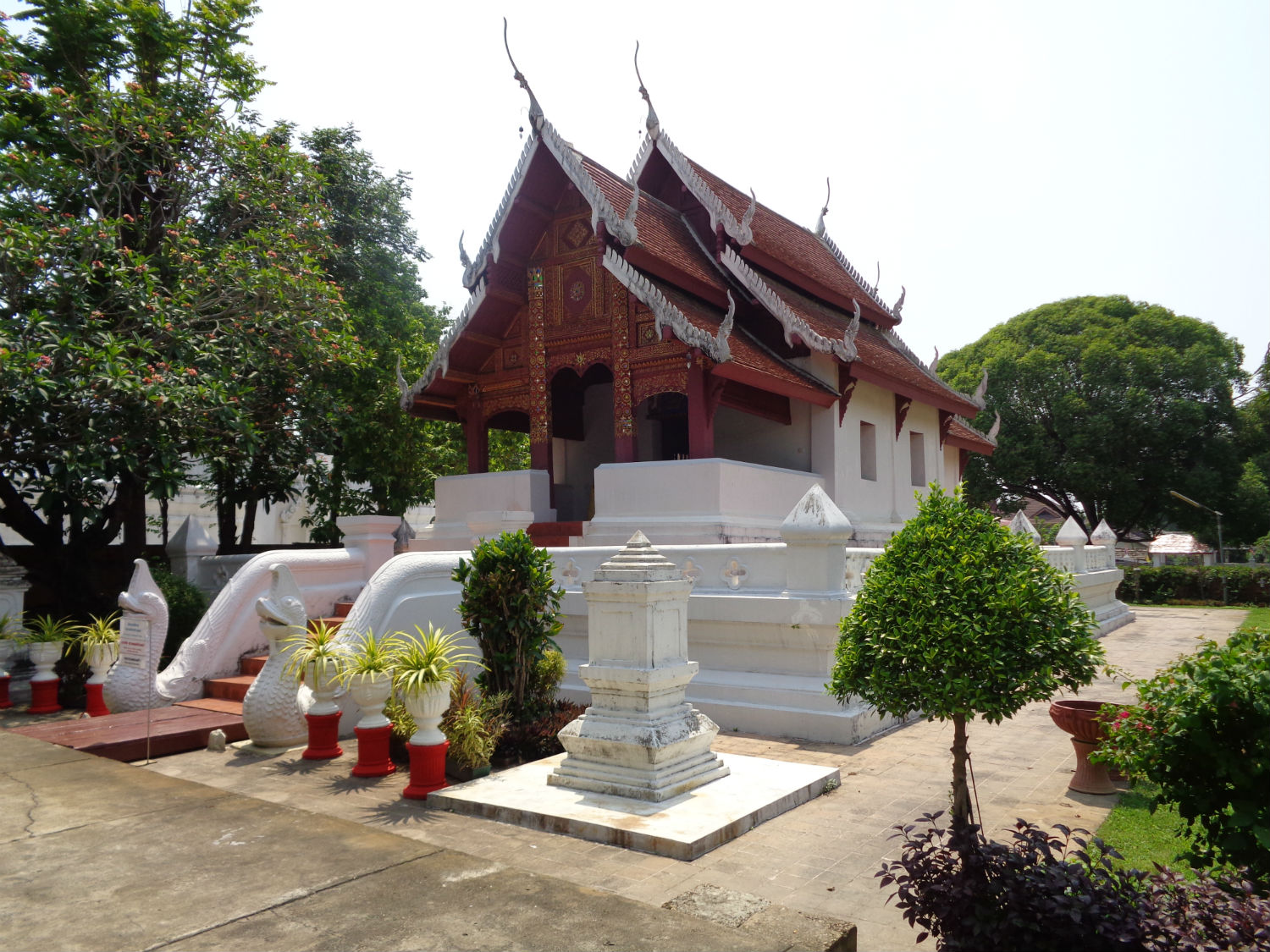
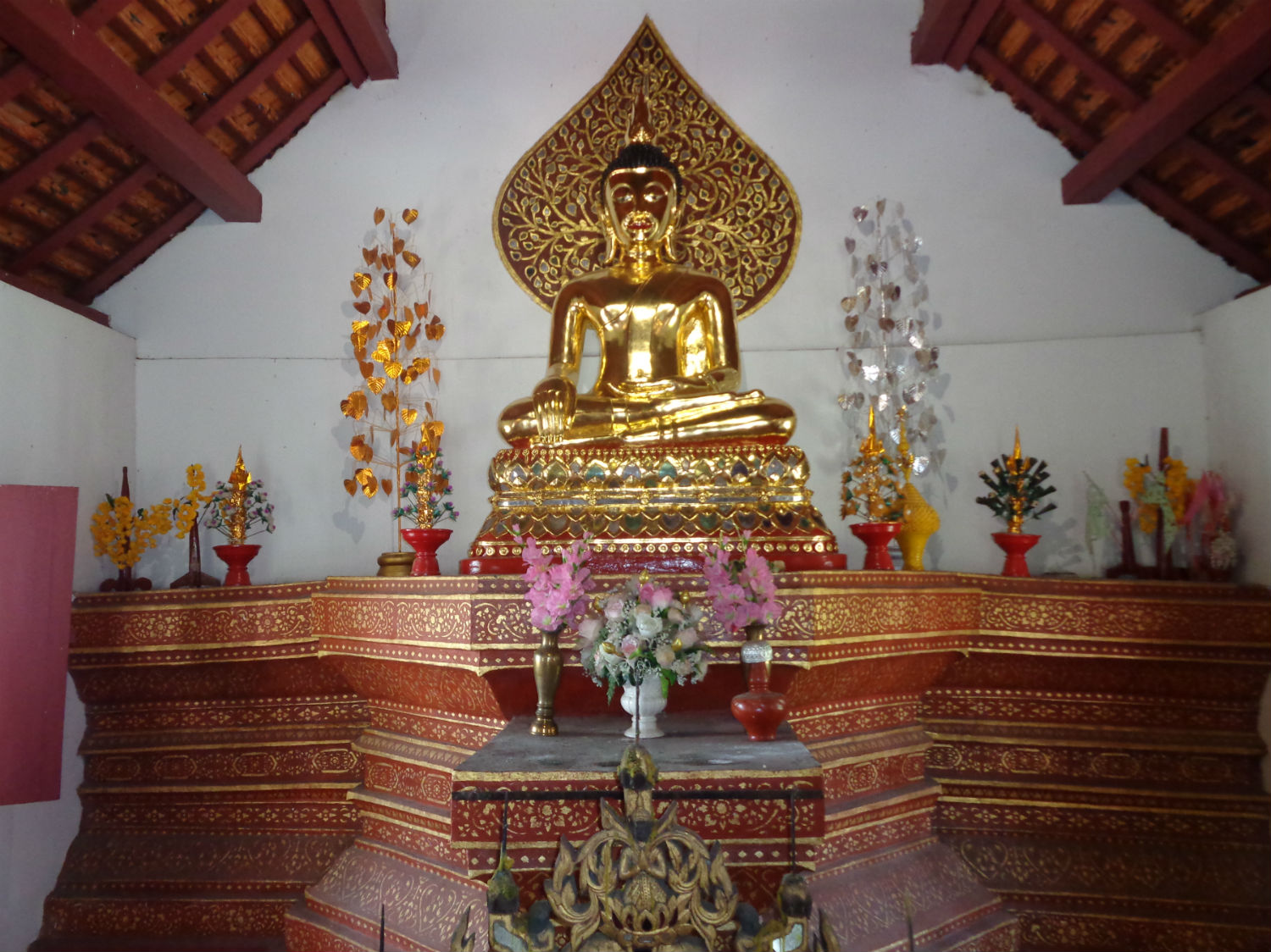
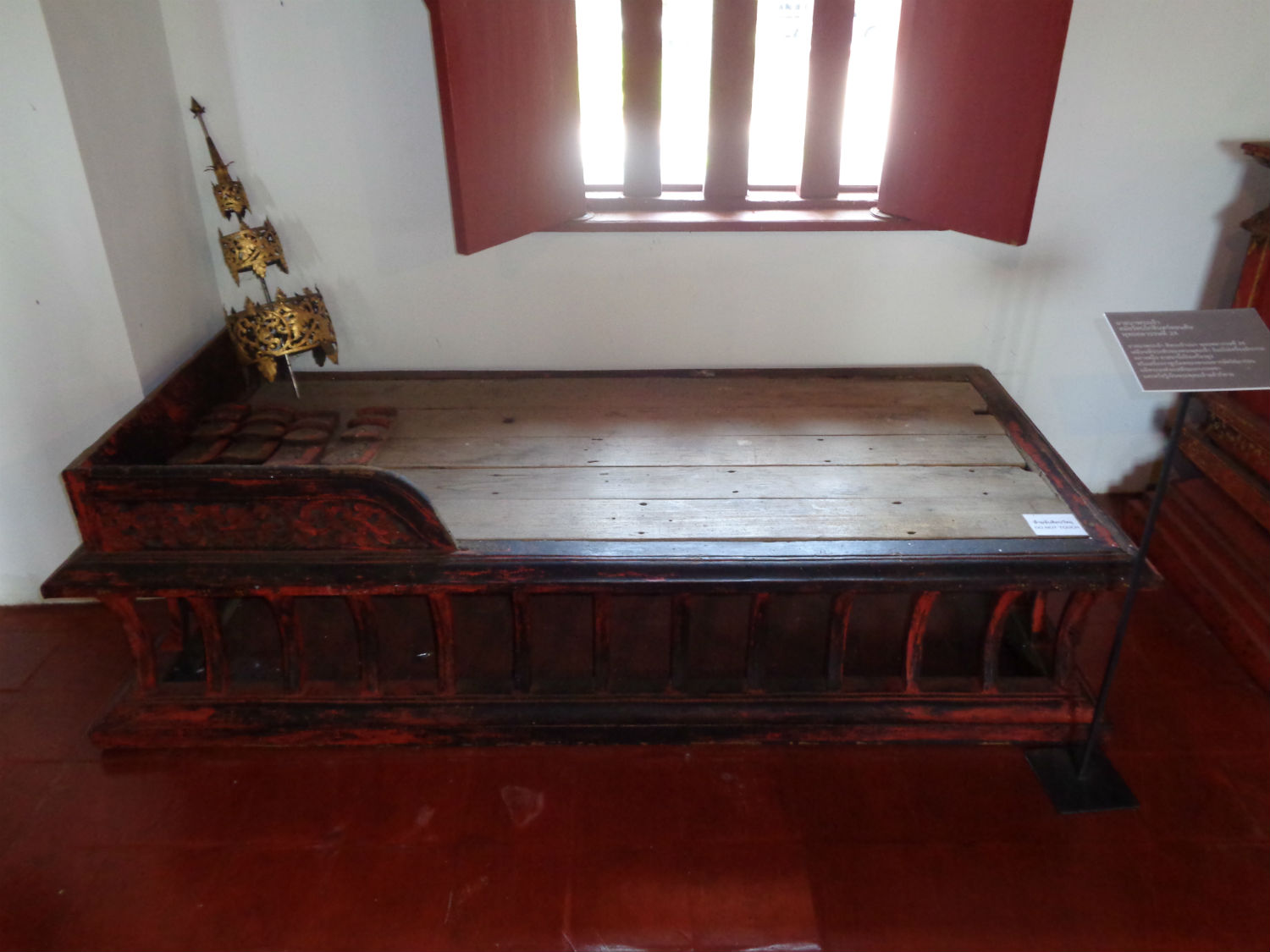
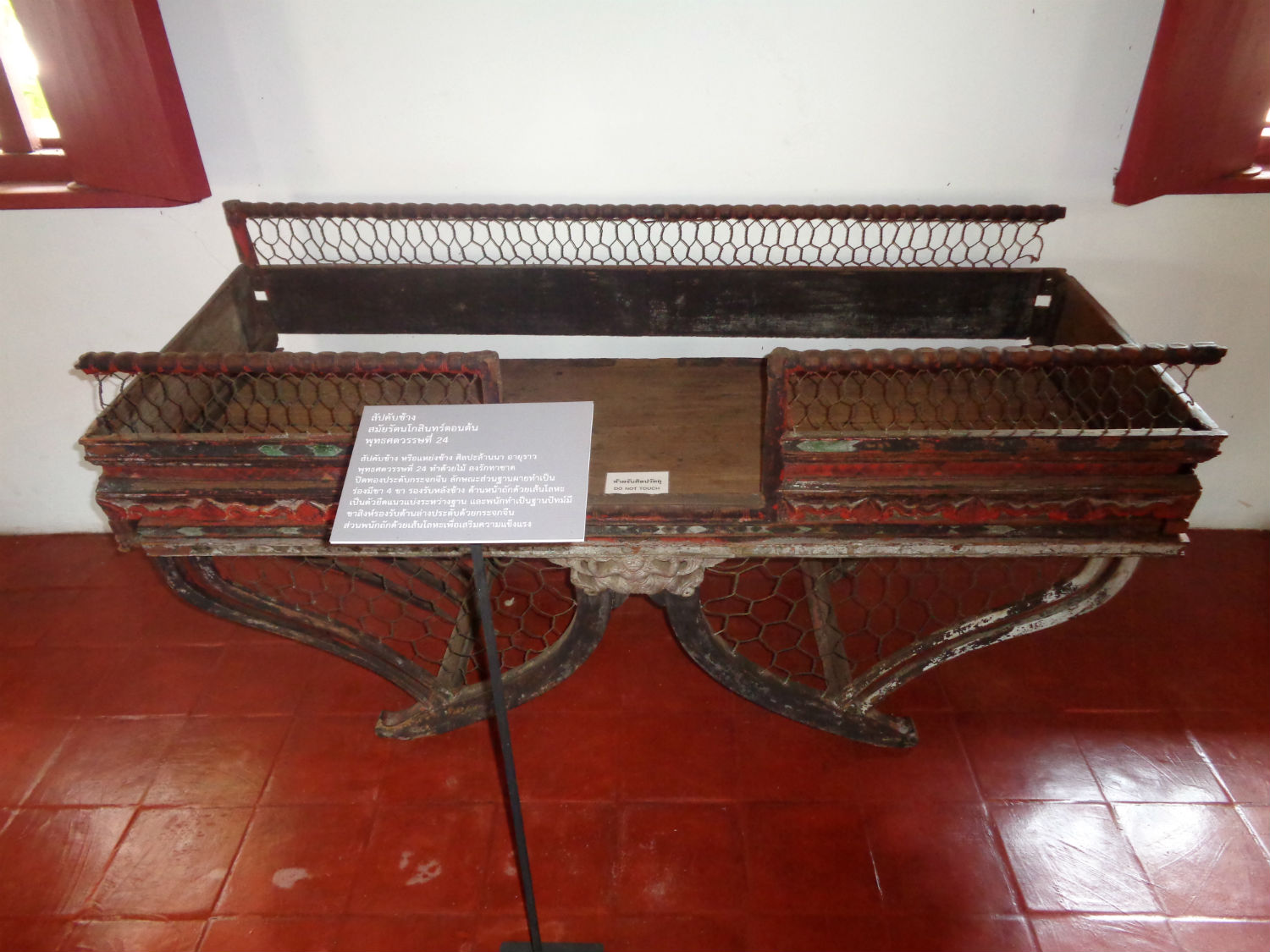
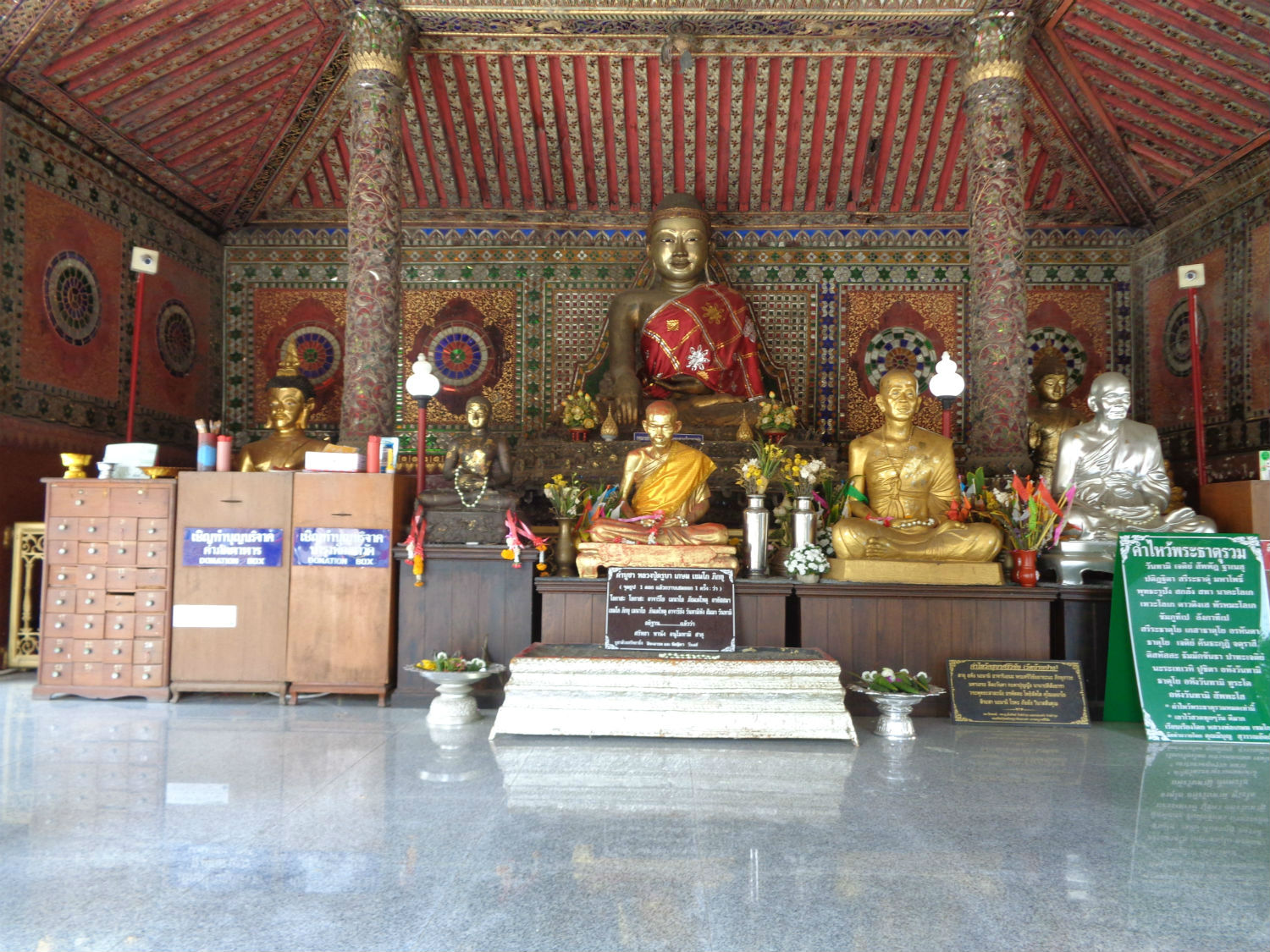
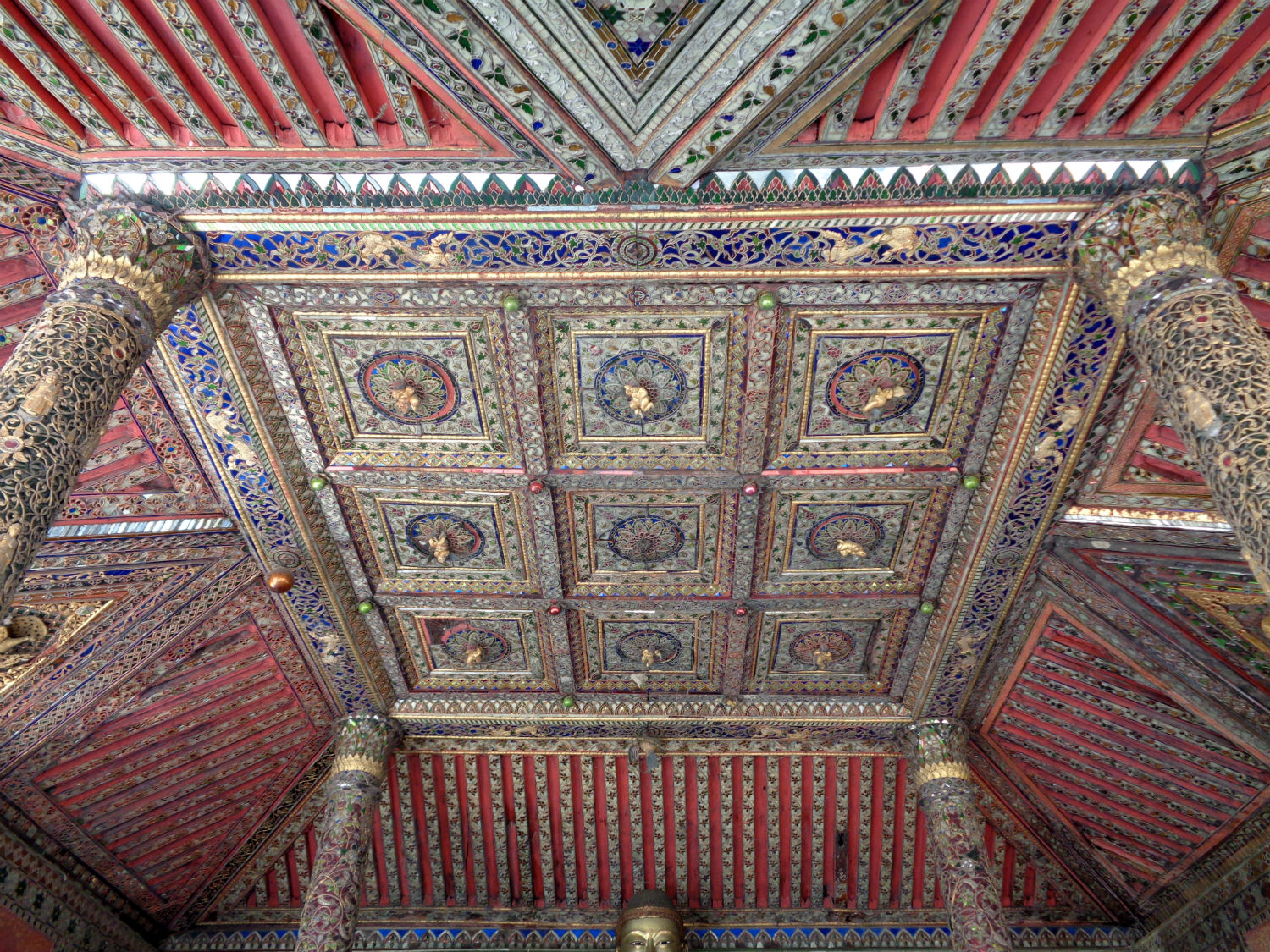
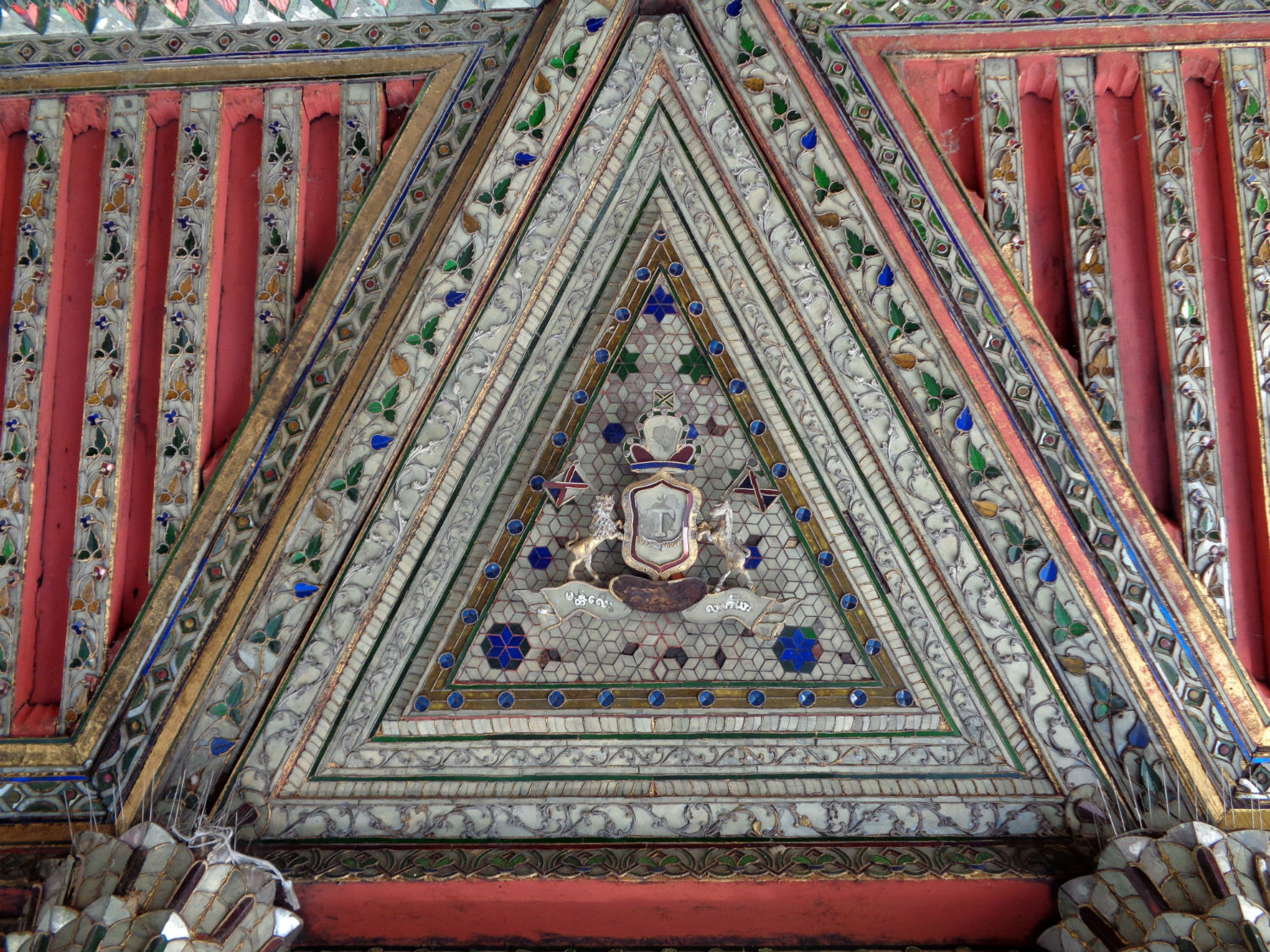
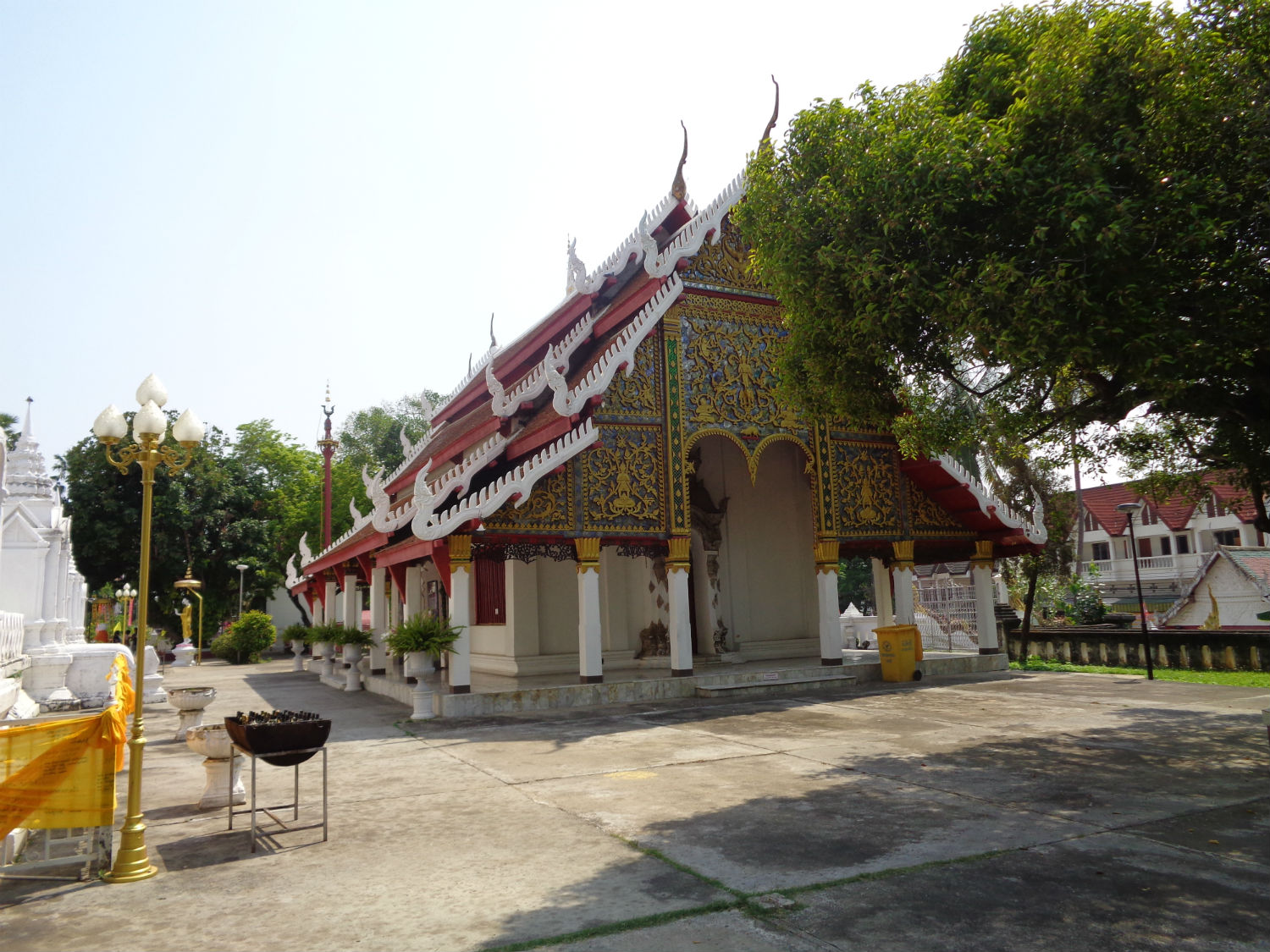
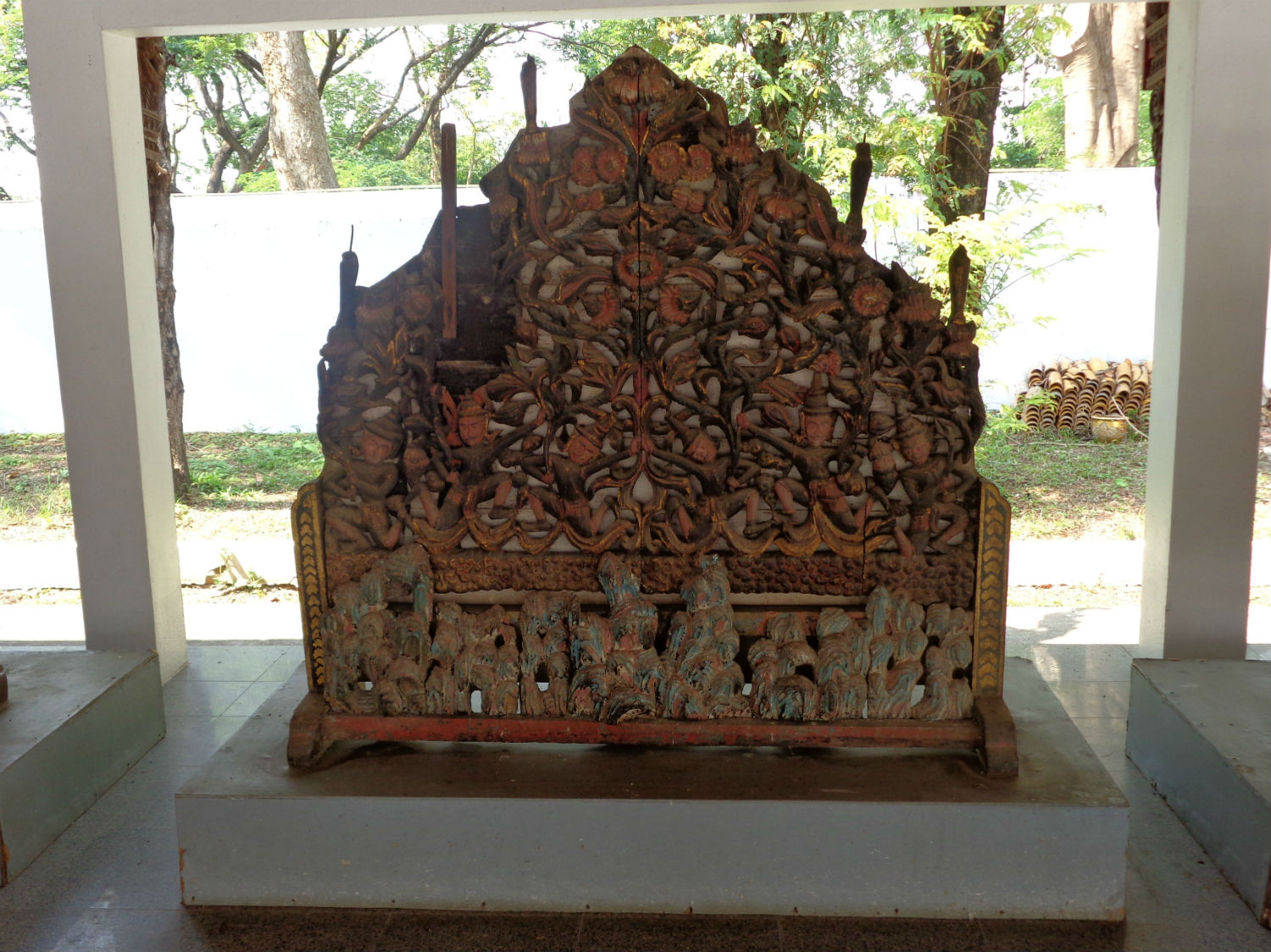
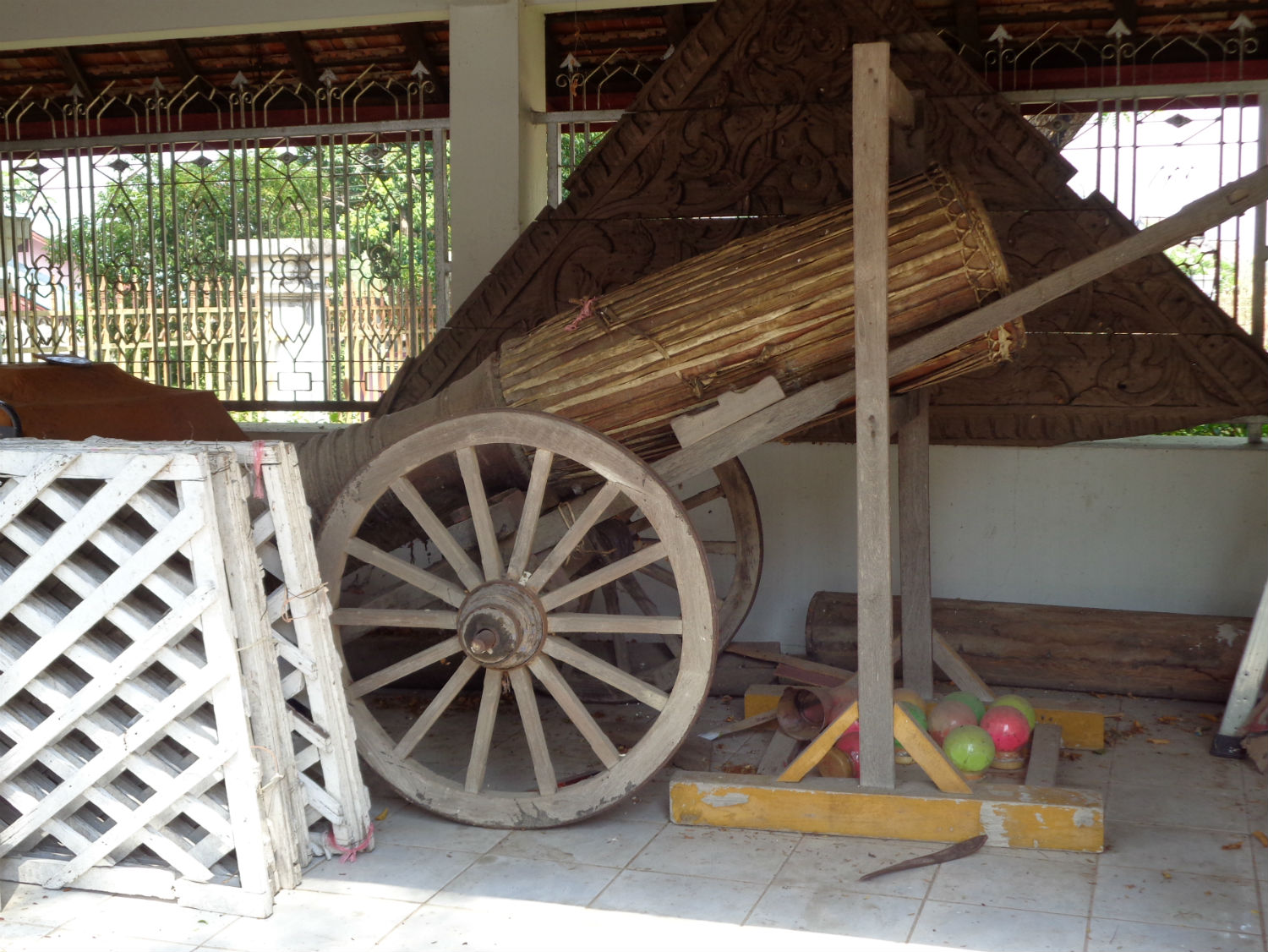
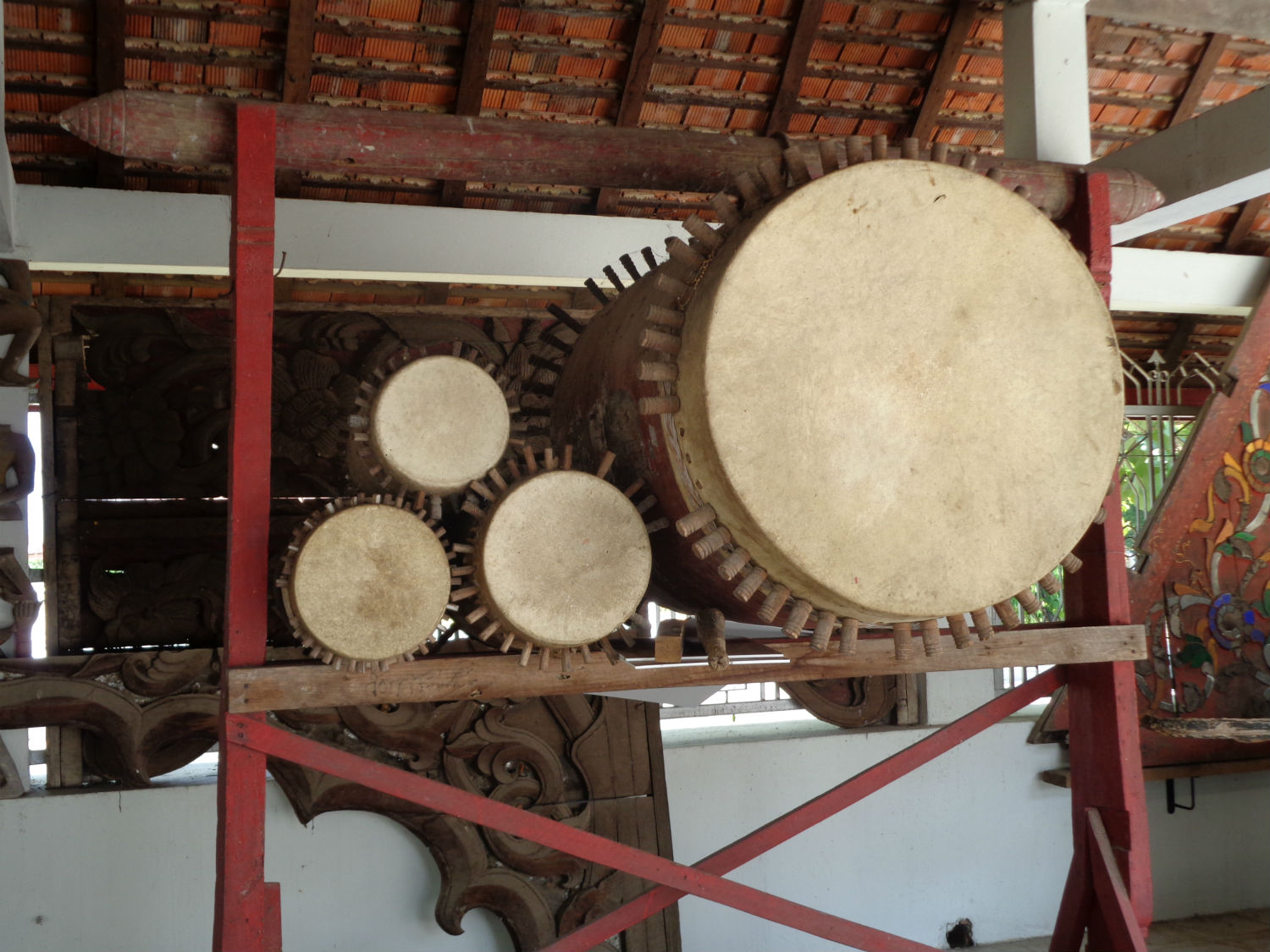
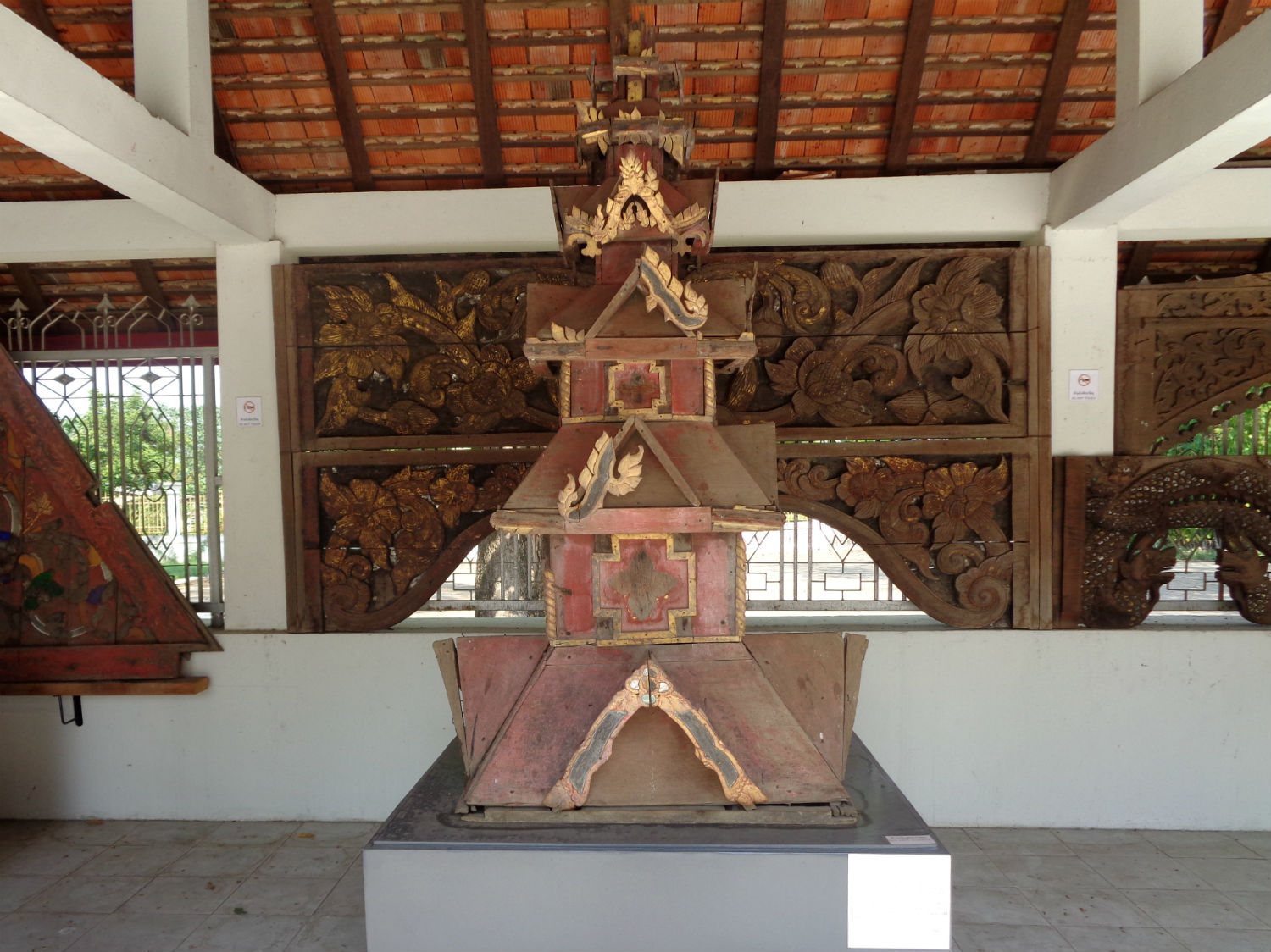
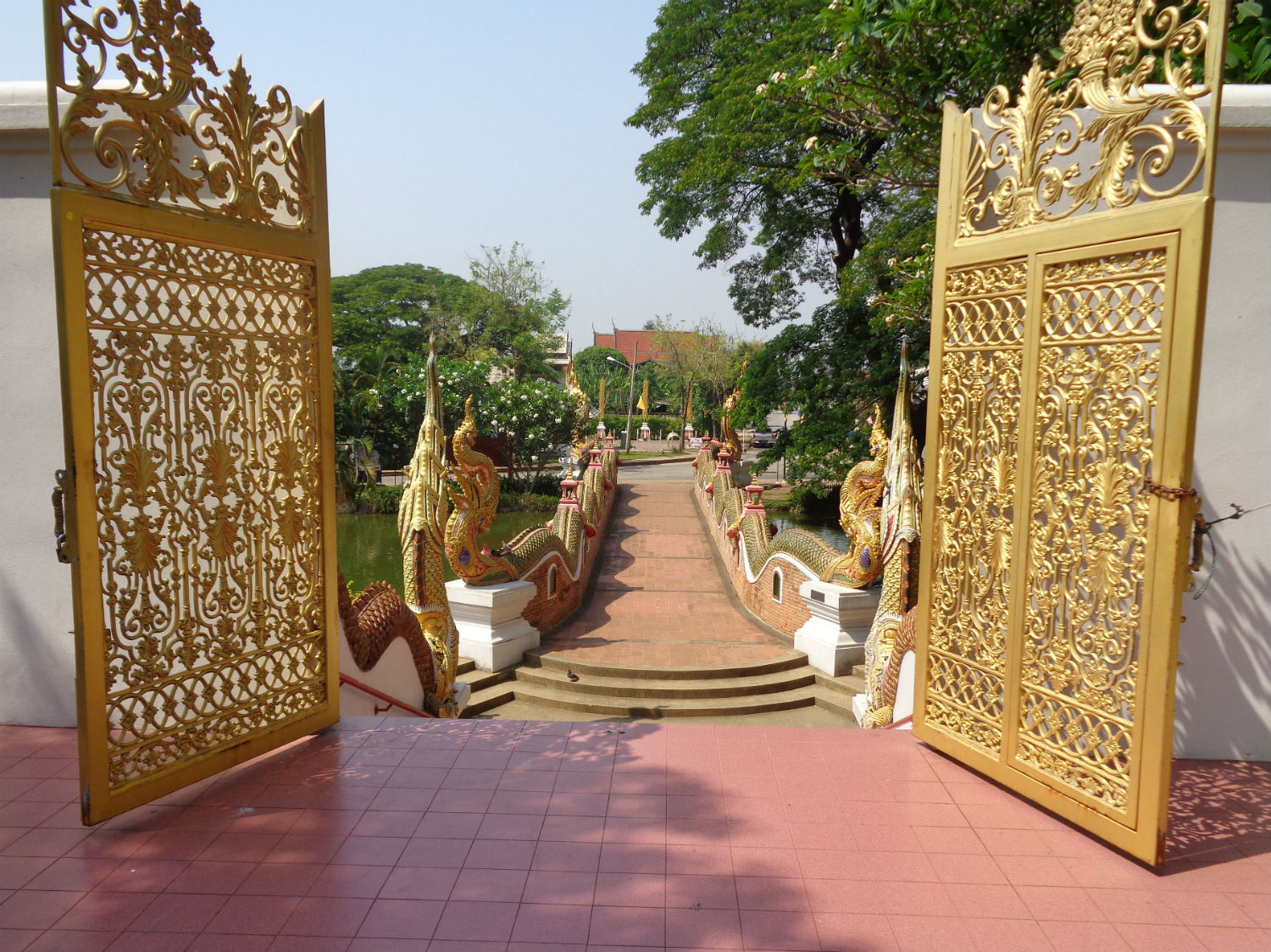
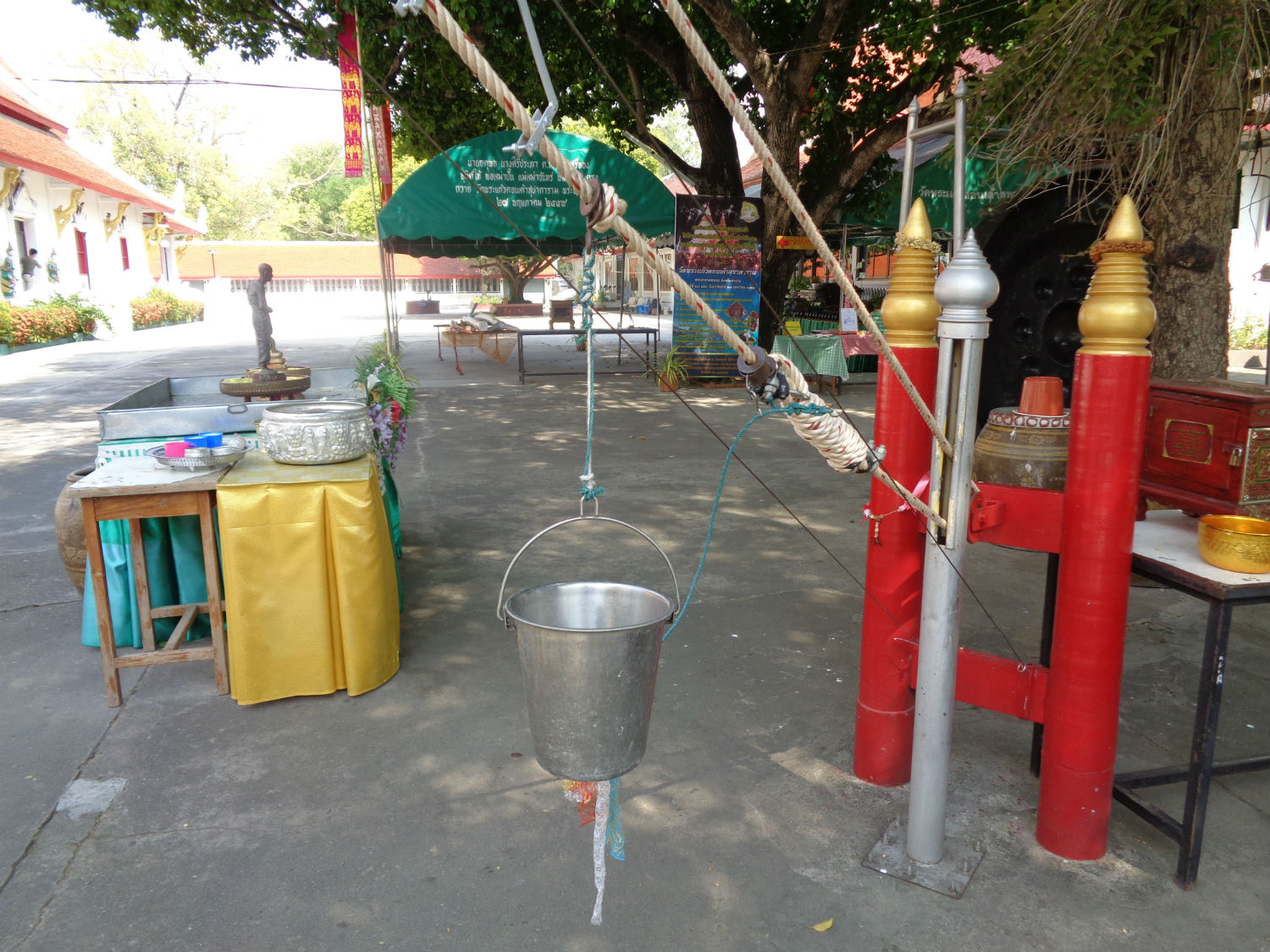
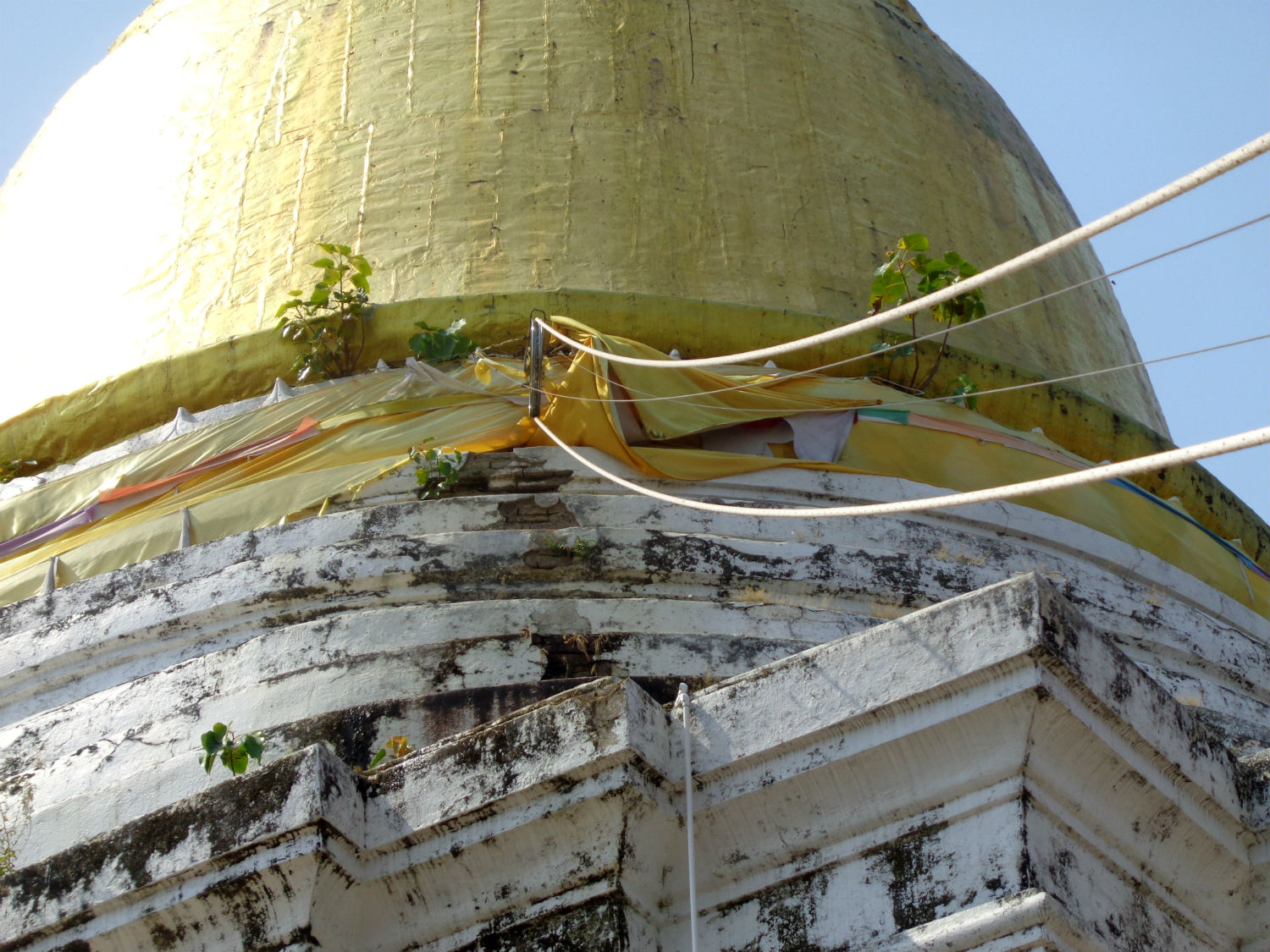 Wat Phra Kaew Don Tao, Lampang
Wat Phra Kaew Don Tao, Lampang
Pratu Ma (Ma Gate) and Khelang Nakorn City Wall........The Pratu Ma is located along Highway 1035 heading northeast out of the city. The information on site states that Khelang Nakorn City was establish in 679 A.D. Along its conch shaped boundary, a wall was built, 4.4 km long with seven gates. The northern gate was known as Pratu Ma. Excavations by the Fine Arts Department have revealed that the wall was built in three periods starting in the Lanna Period, 14th Century and reinforced during the Lanna/Ayutthaya Wars a century later.
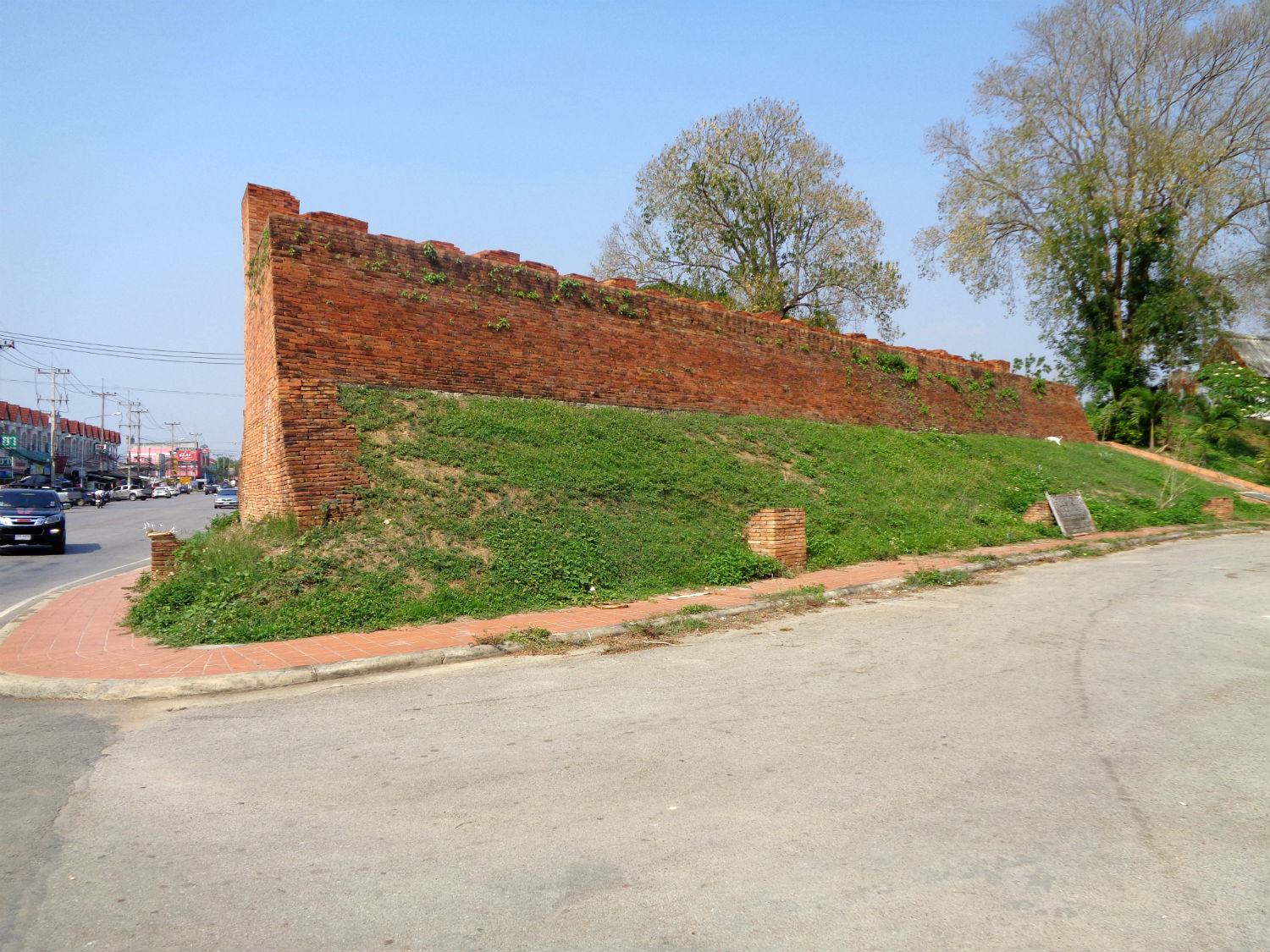
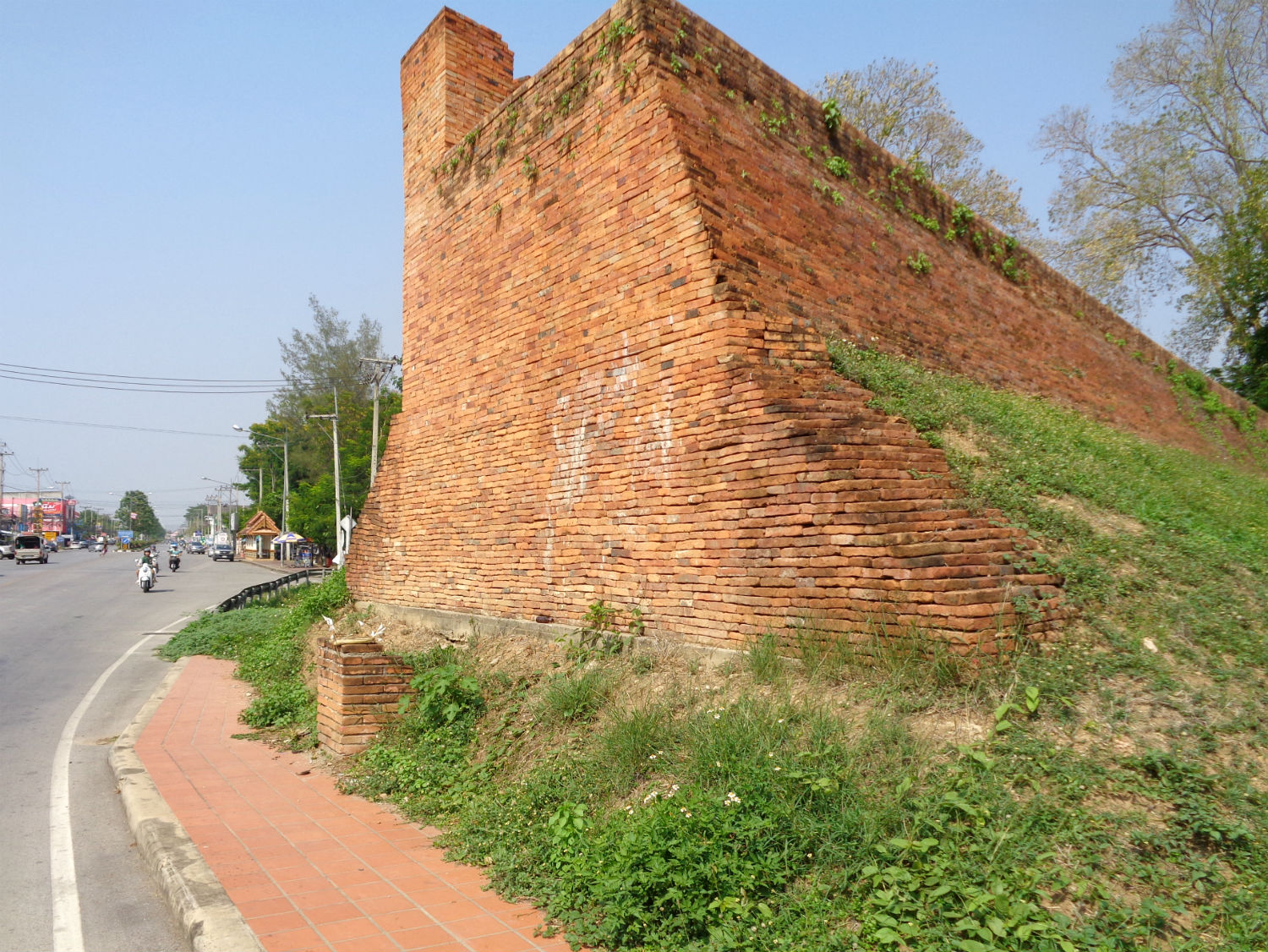
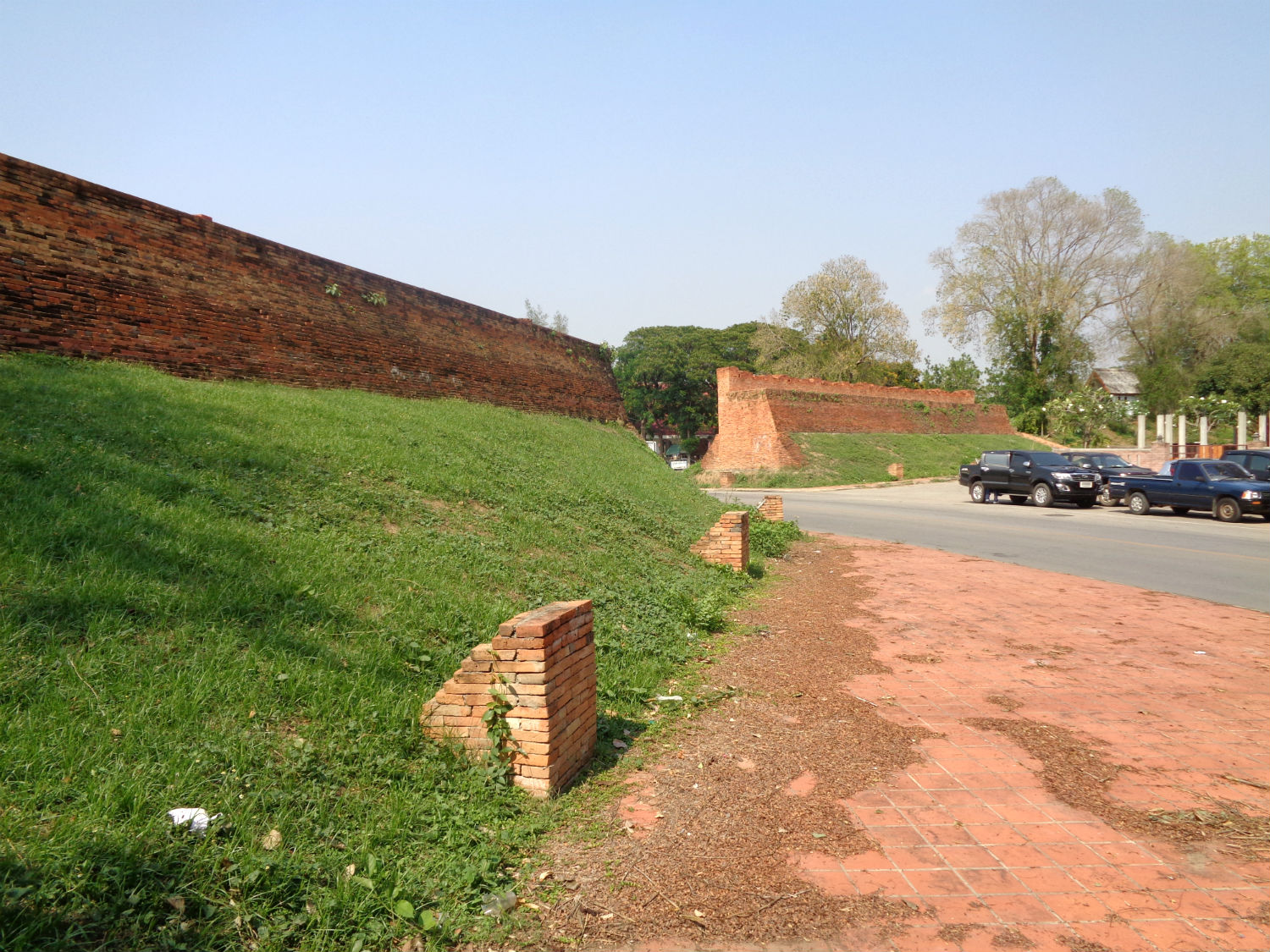 Pratu Ma and Khelang Nakorn City Wall, Lampang
Pratu Ma and Khelang Nakorn City Wall, Lampang
Wat Phra Chedi Sao Lang........Located to the east of the city Wat Chedi Sao Lang translates as a temple with 20 chedis in a group. The information on site states that Wat Phra Chedi Sao Lang is a sacred temple built in open space, recognised for the 20 chedis within its grounds. Built more than 1,000 years ago, it is a significant example of the beauty of Lanna art and the culture of this era. Both Lanna and Burmese influences are reflected in this temple where there are beautiful architectural elements such as coloured glass windows. In 1983 villagers discovered an important Buddha image weighing more than 100 baht in gold found buried here which became the first national treasure of its kind.
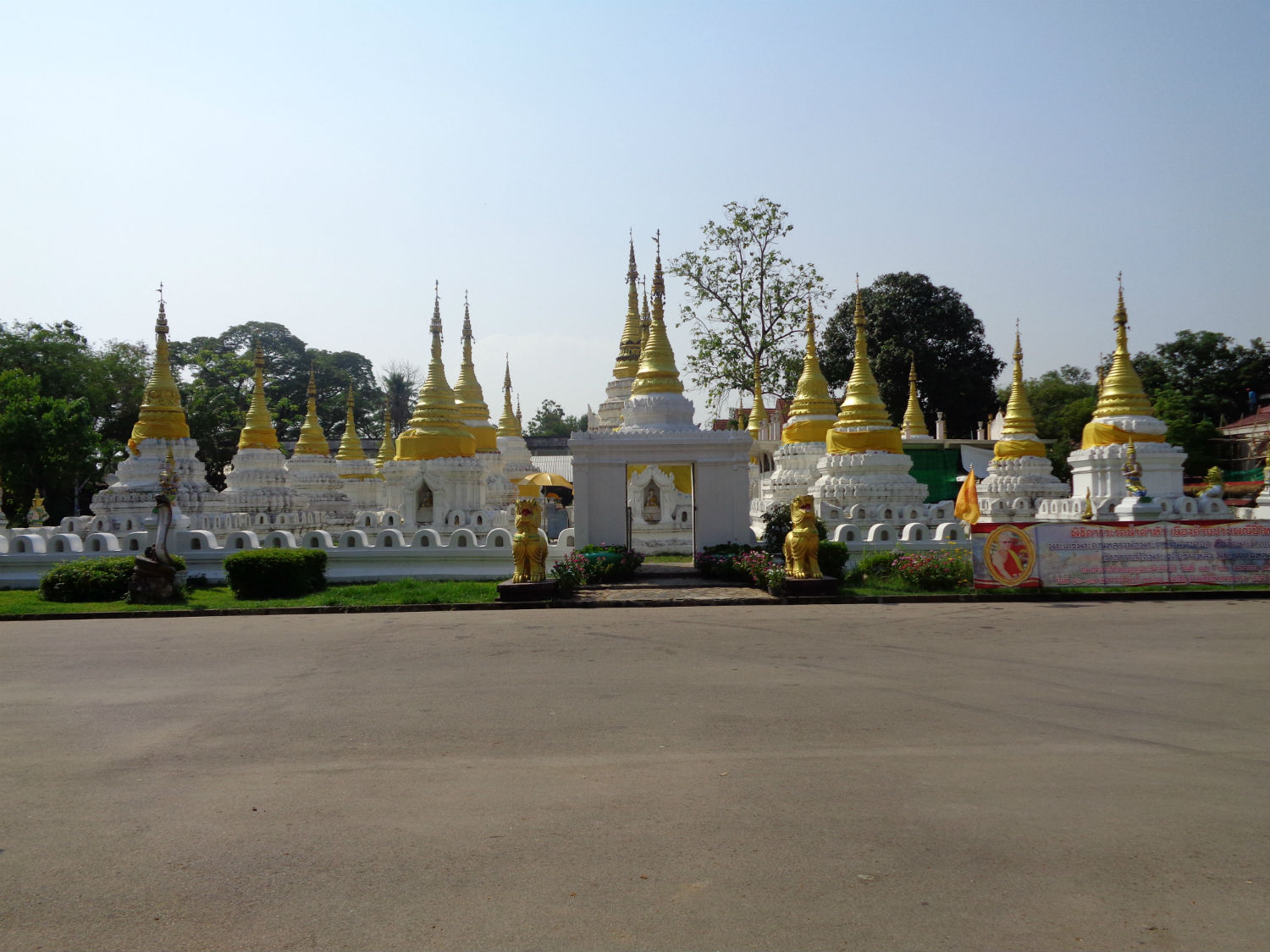
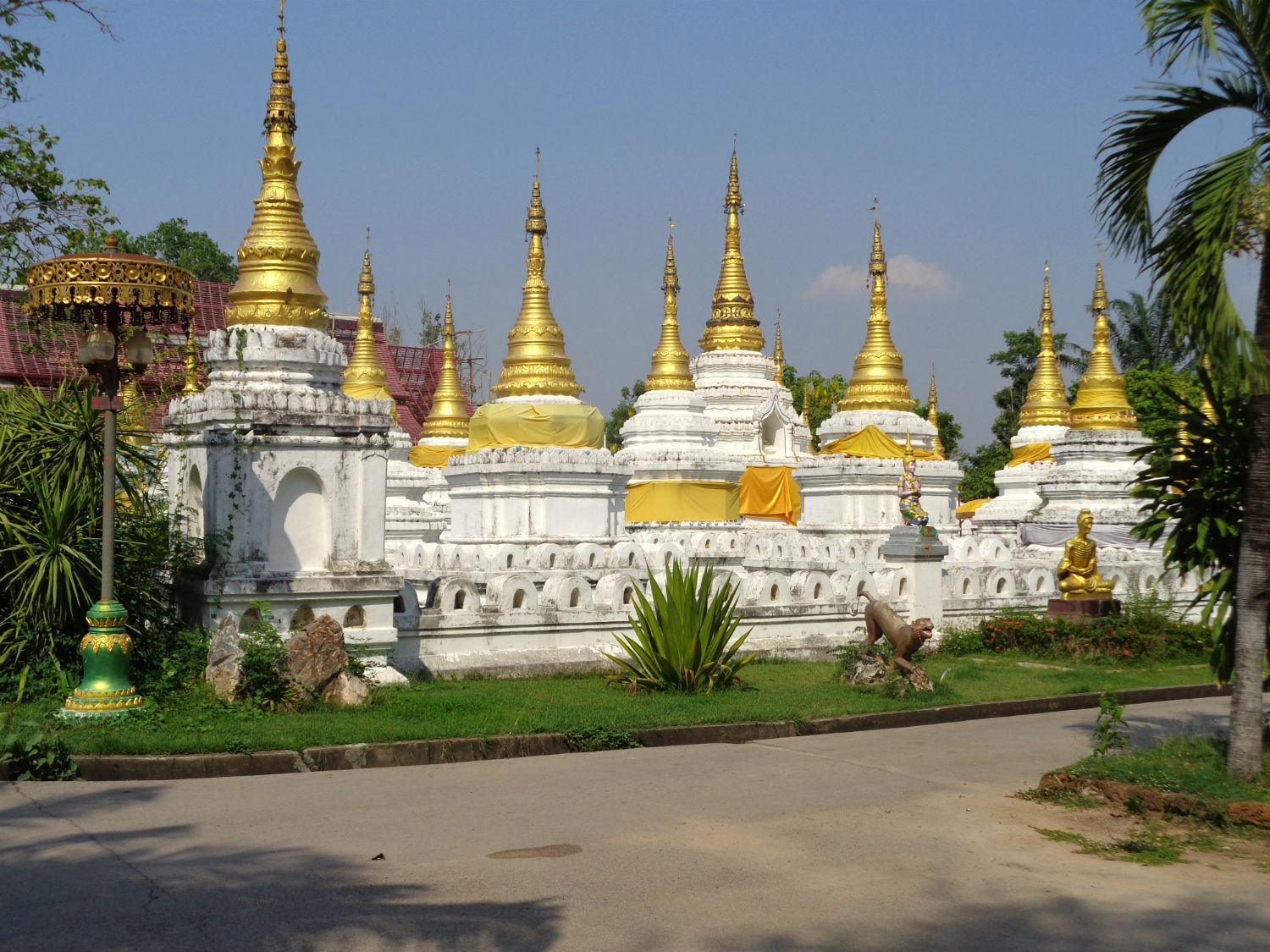
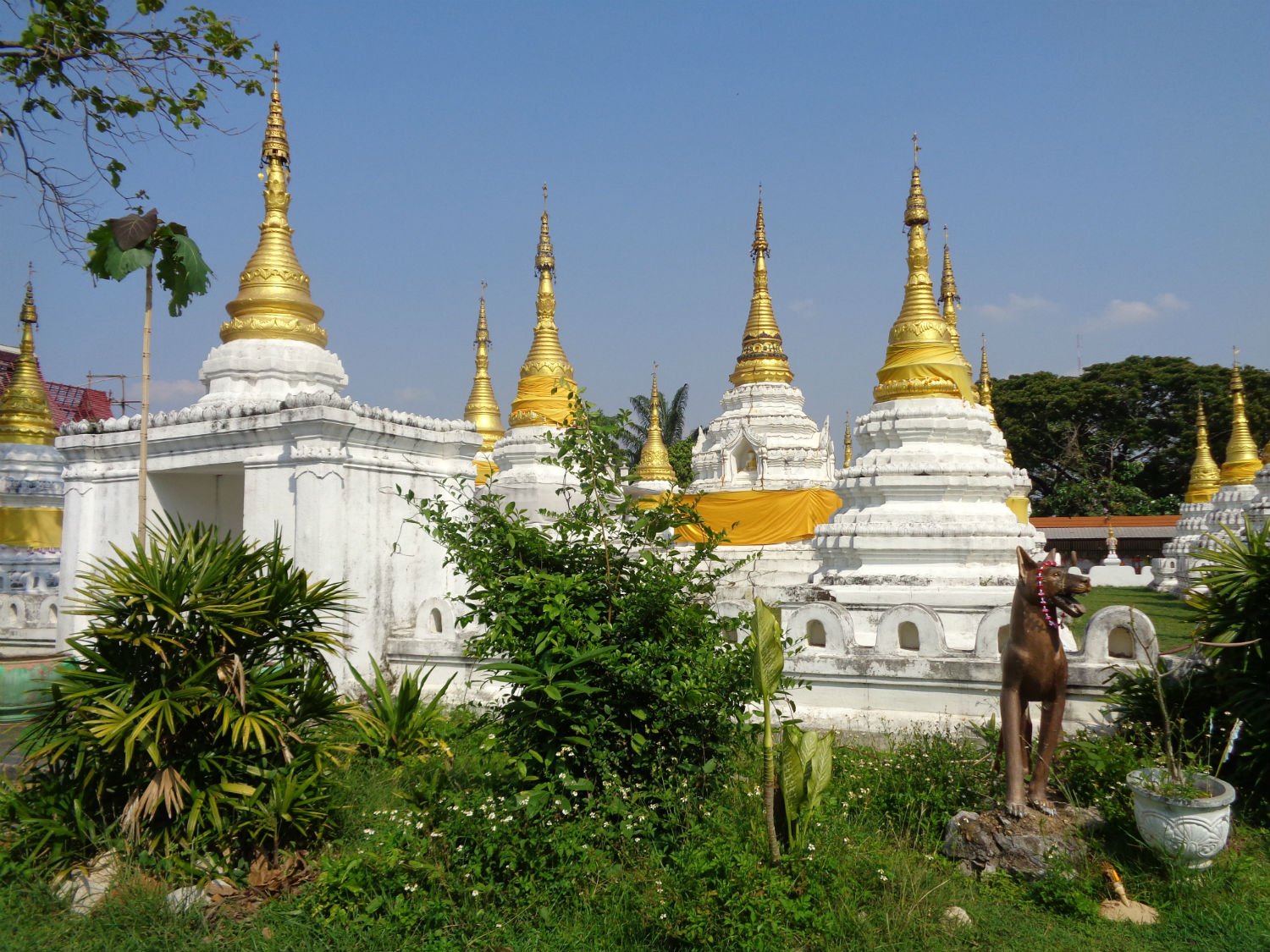
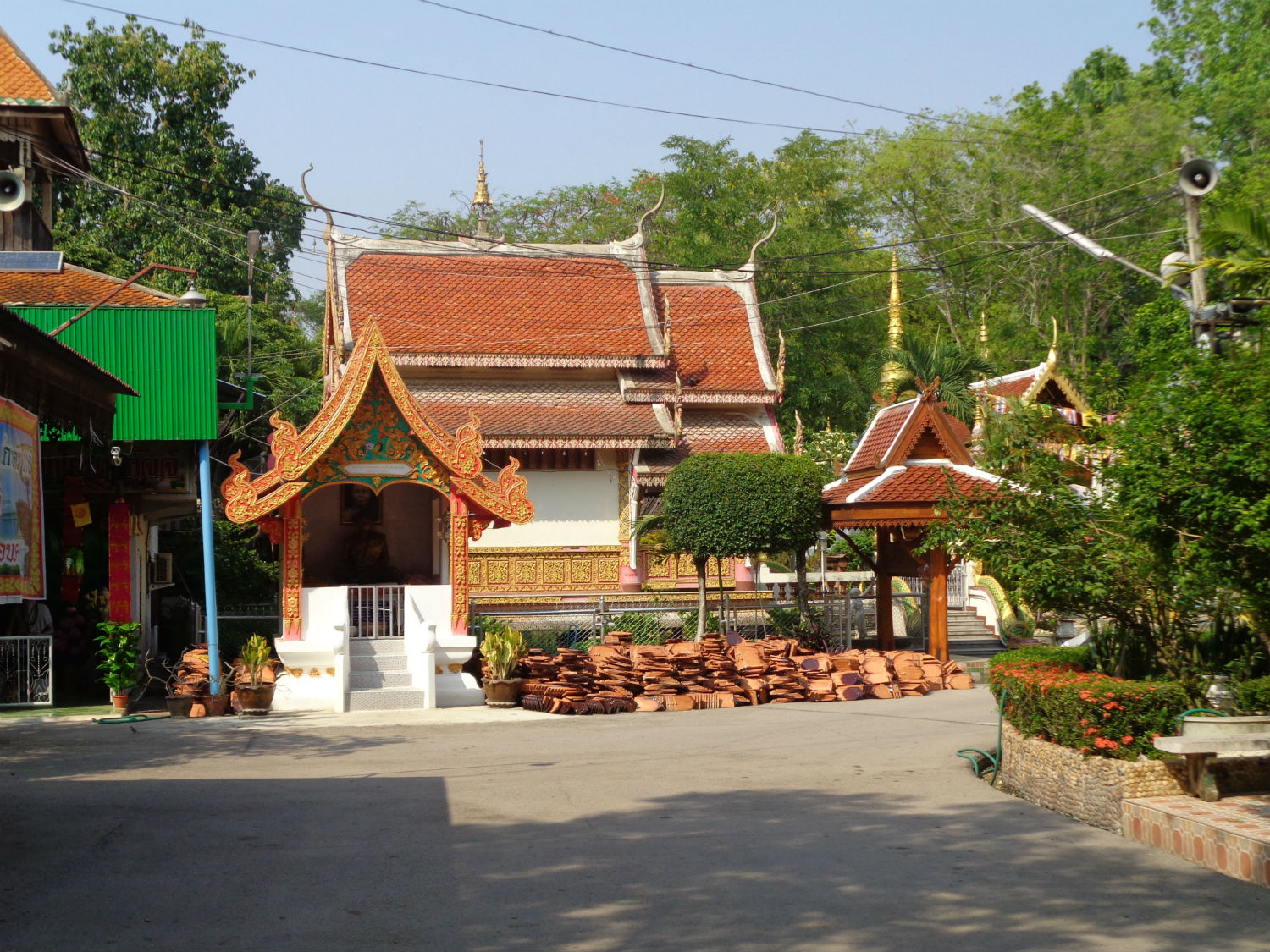
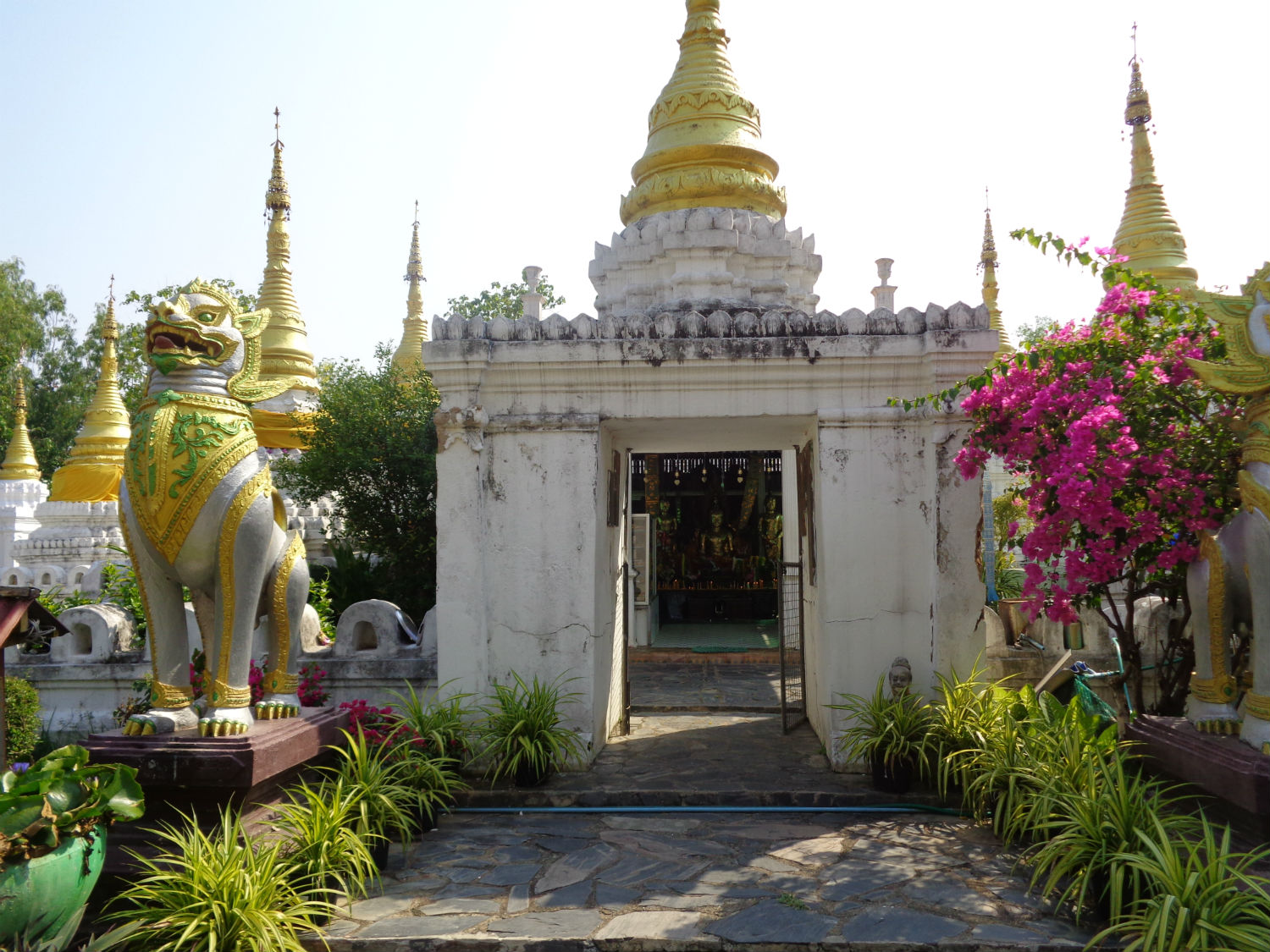
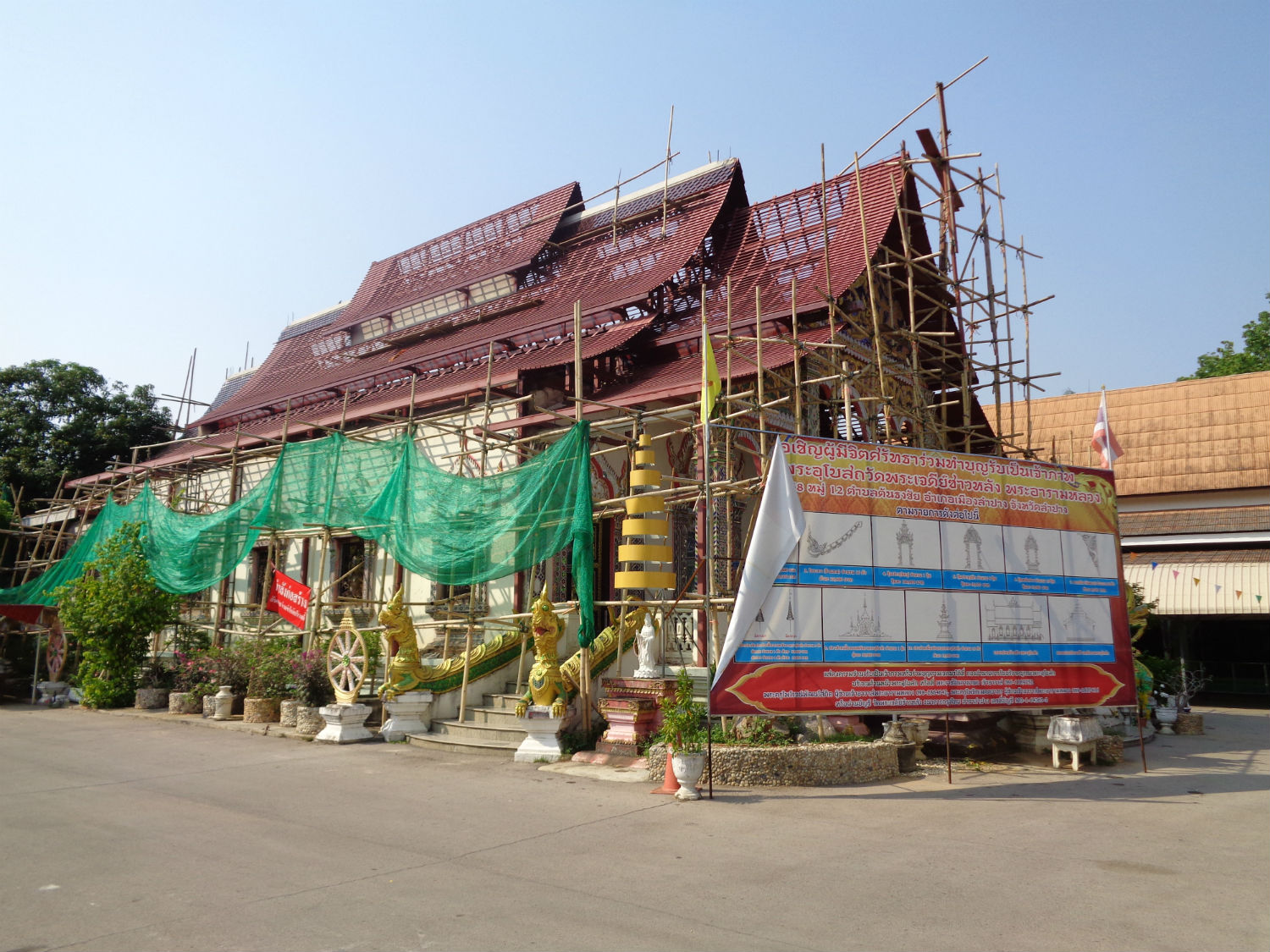
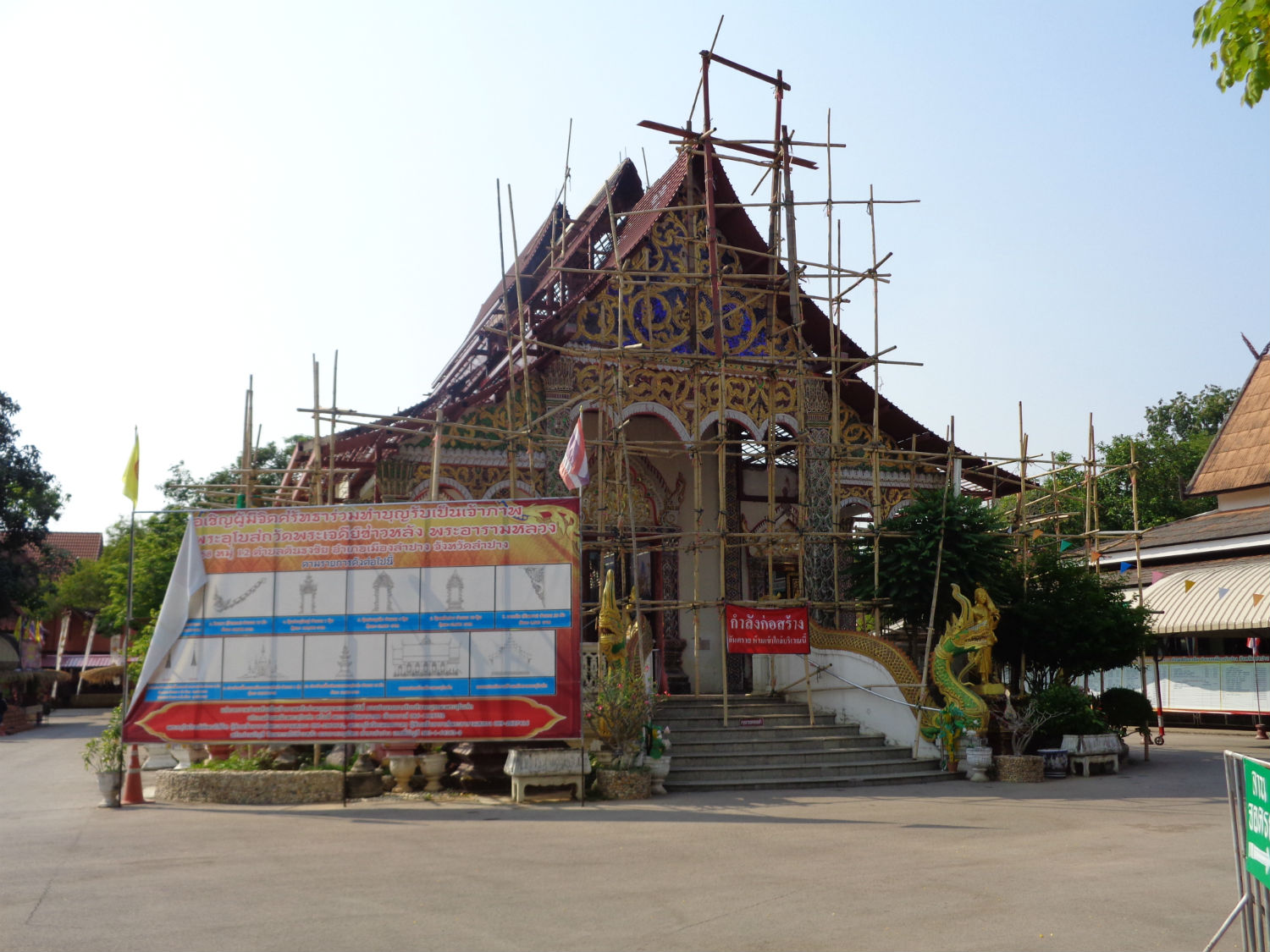
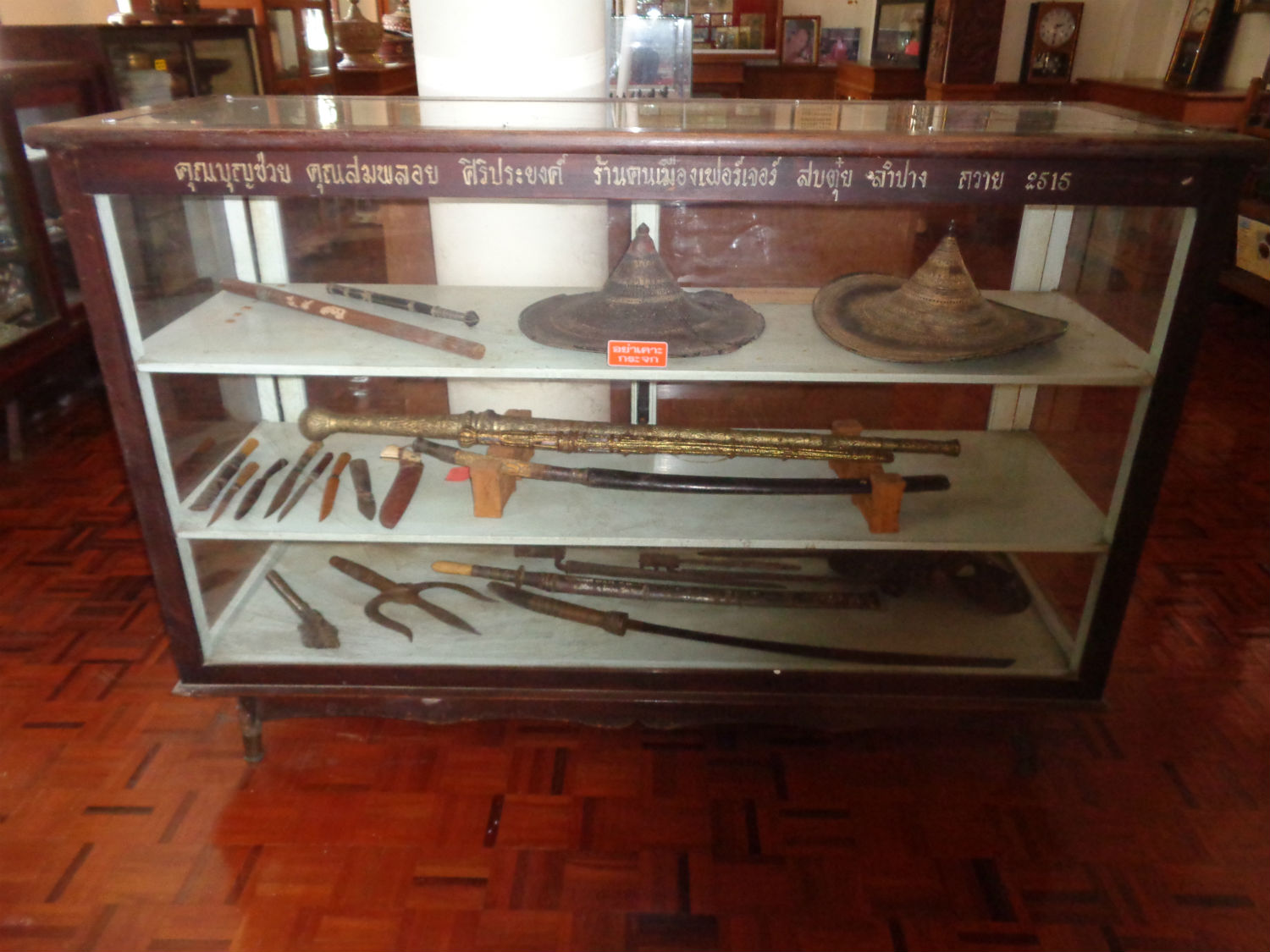
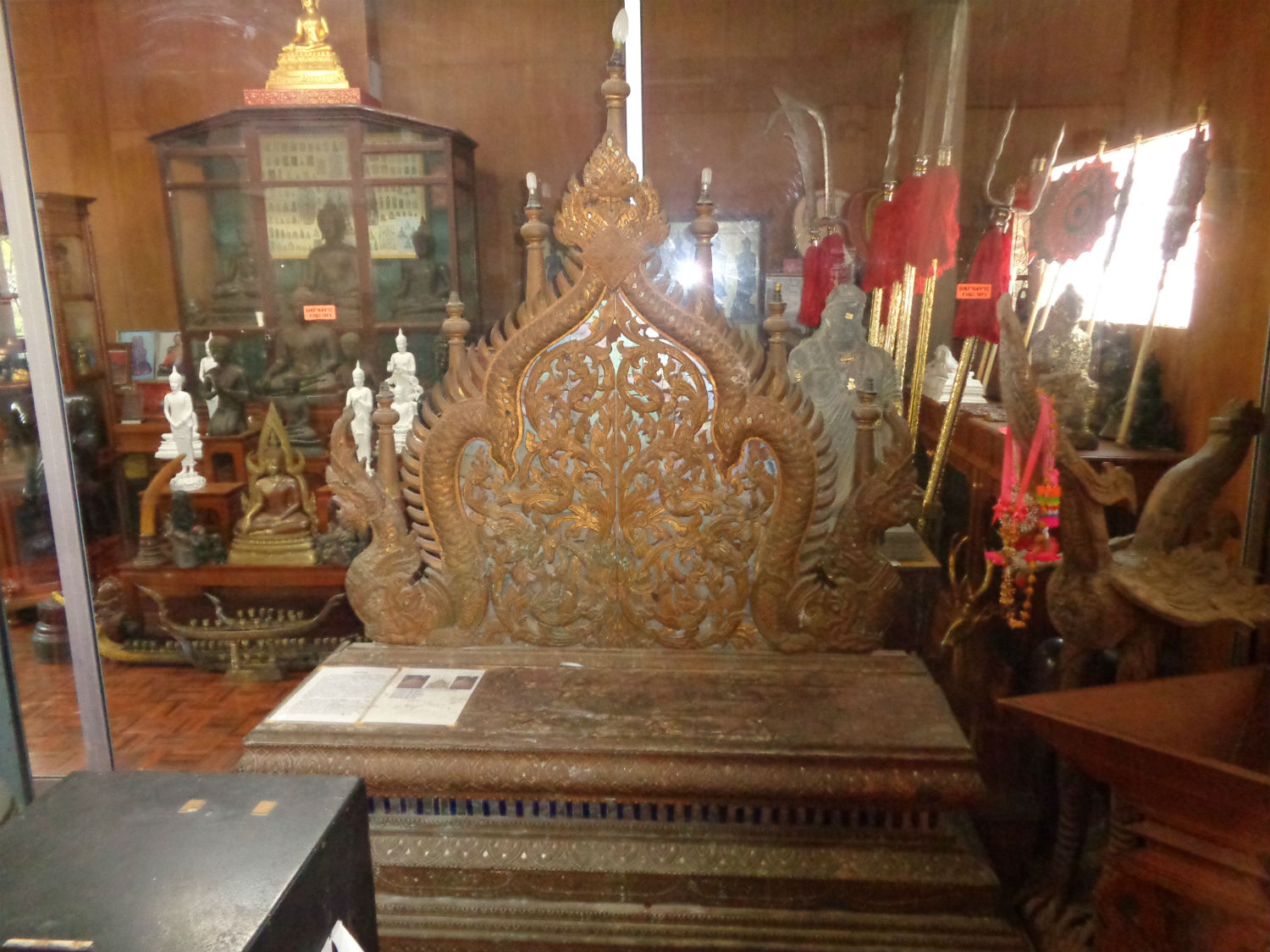
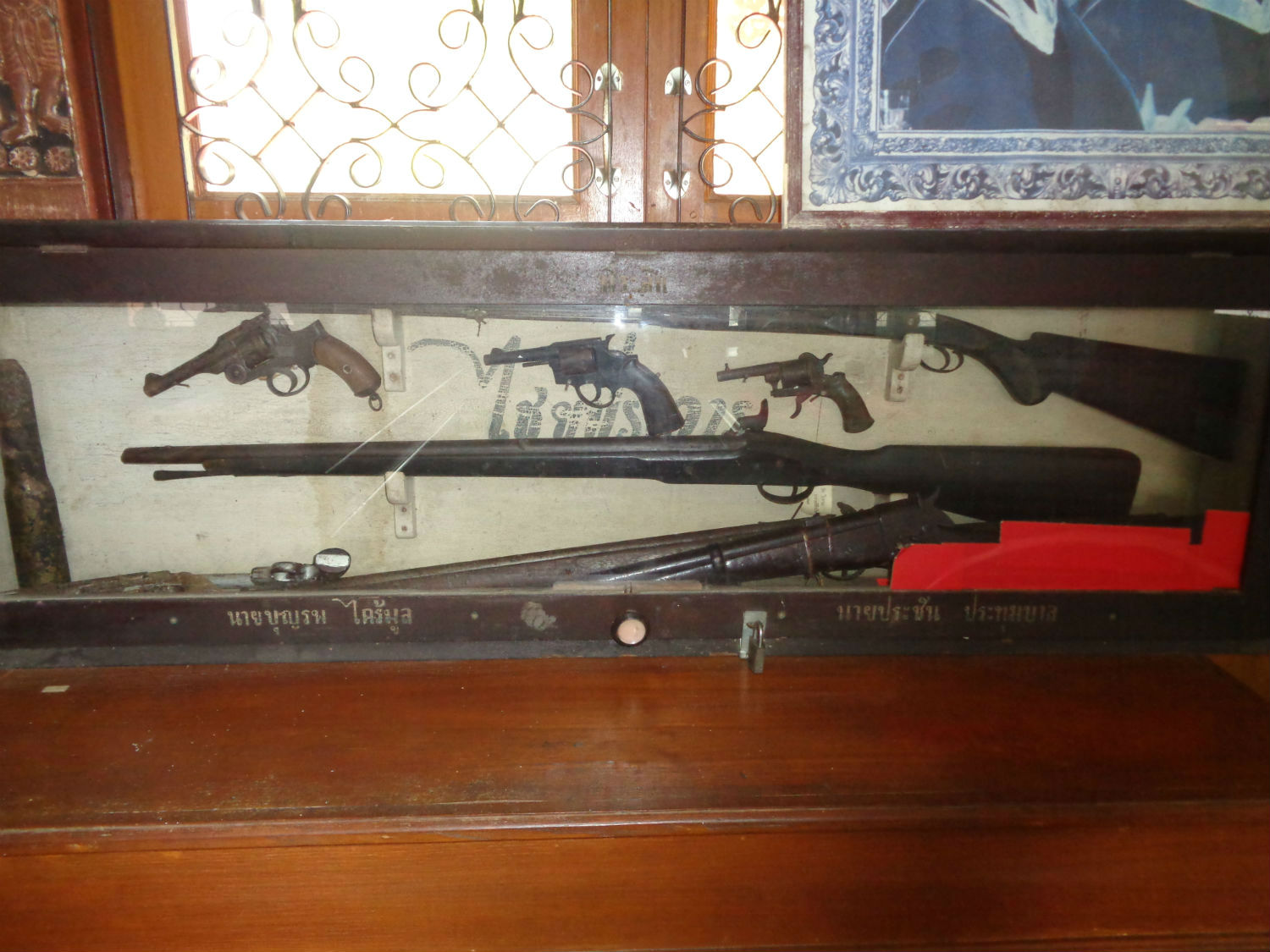
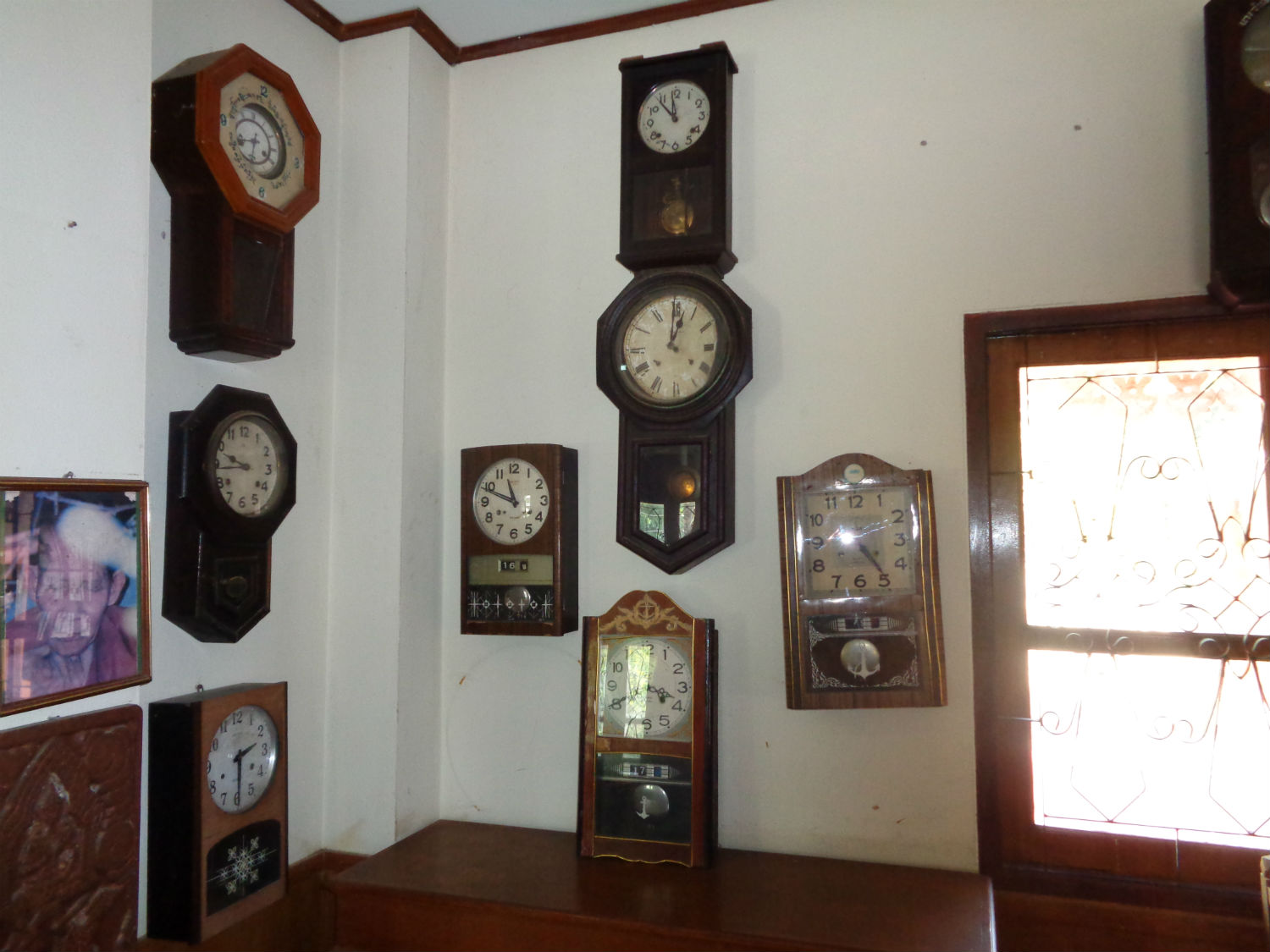
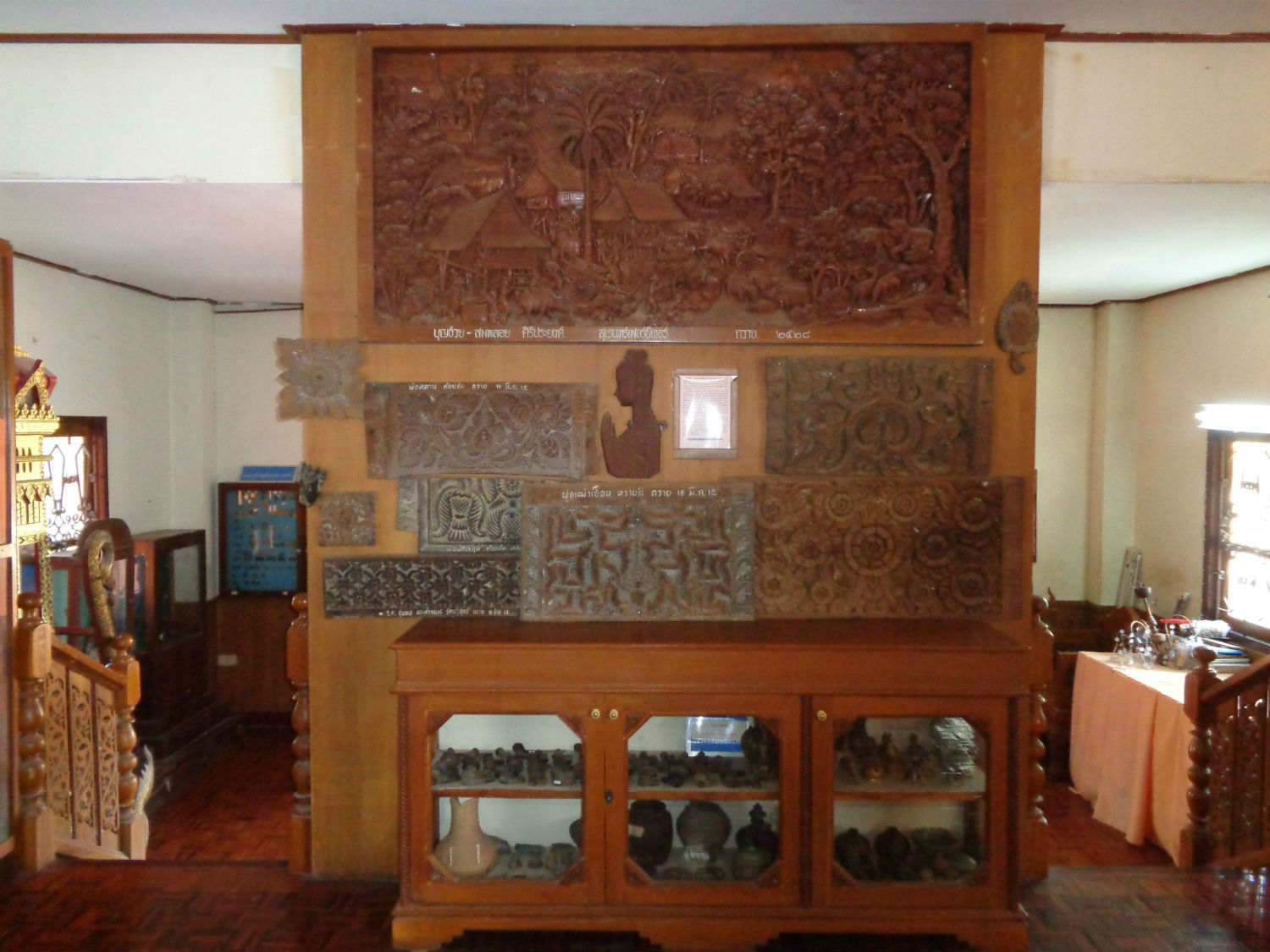 Wat Phra Chedi Sao Lang and Khe Lang Nakhon Museum, near Lampang
Wat Phra Chedi Sao Lang and Khe Lang Nakhon Museum, near Lampang
Ban Saonak........Returning back into the city Ban Saonak lies in the old quarter north of the river. Onsite information states that the name Ban Sanook a northern dialect refers to ‘a house of many pillars’; there are in fact 116 pillars. The number of pillars is very interesting. The house was built in 1895 by a Burmese man called Maung Chan Ong (ancestor of the Chantarawirote family). The architectural style of the house is a combination of both Lanna and Burmese art.
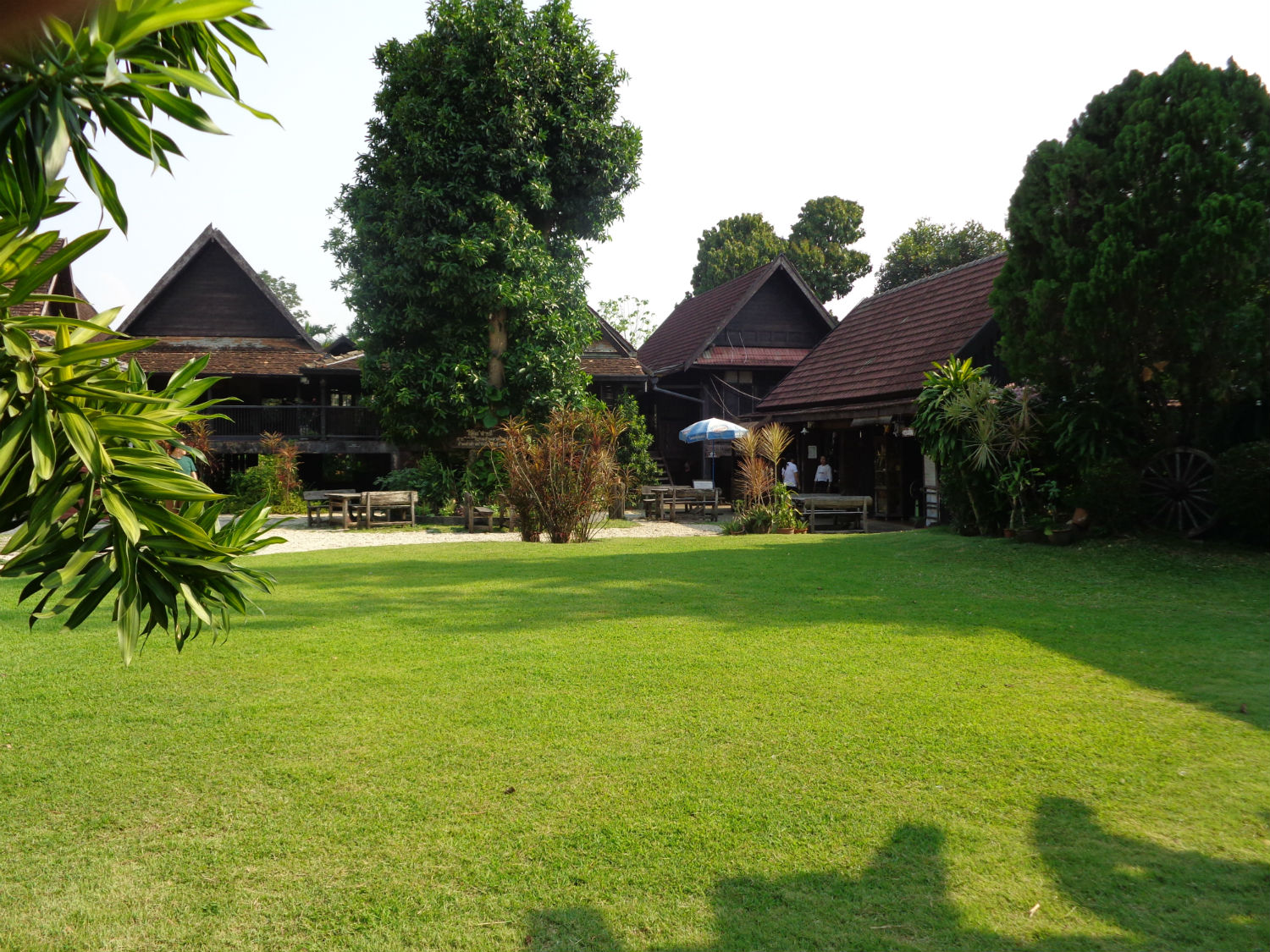
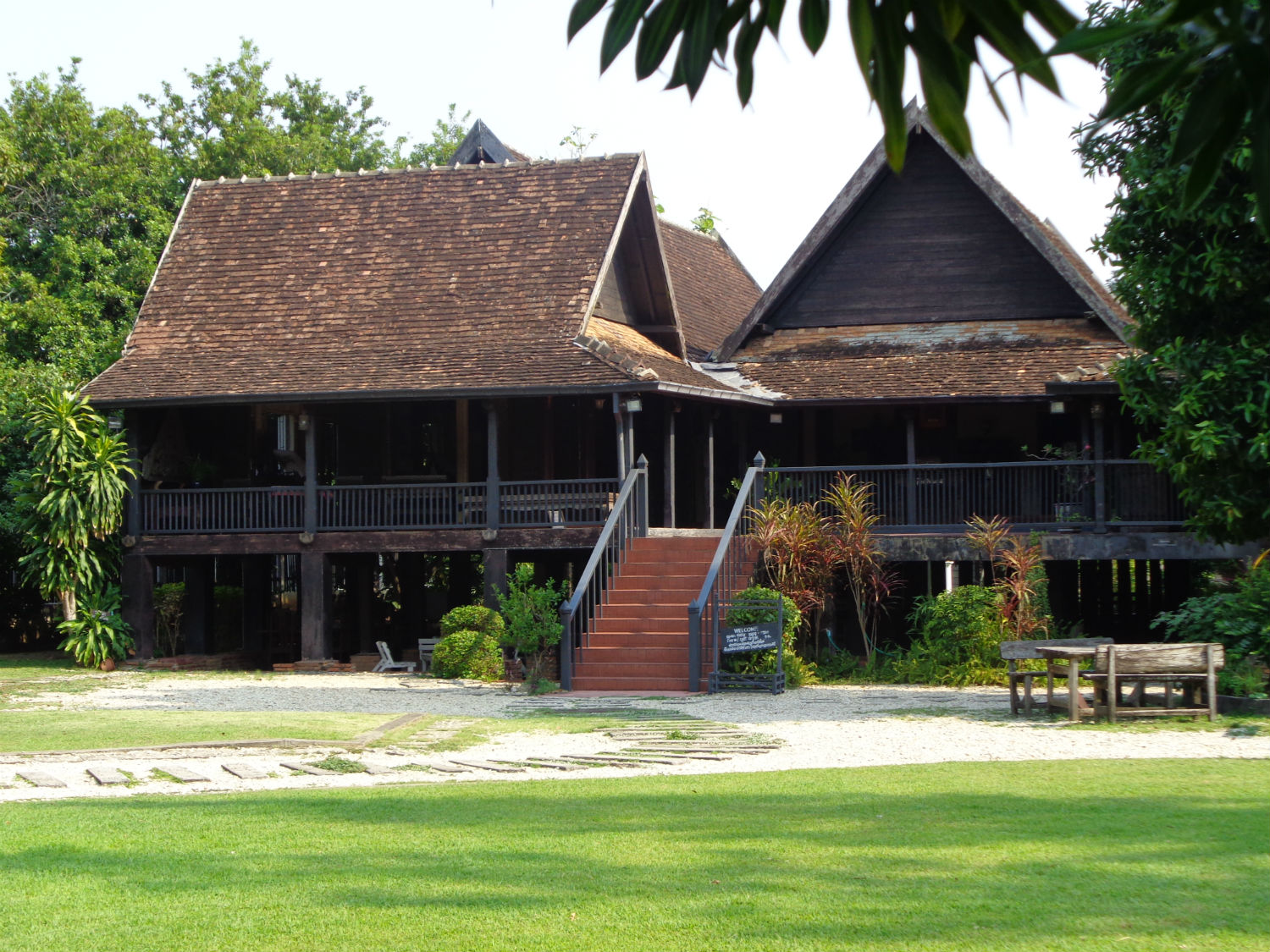
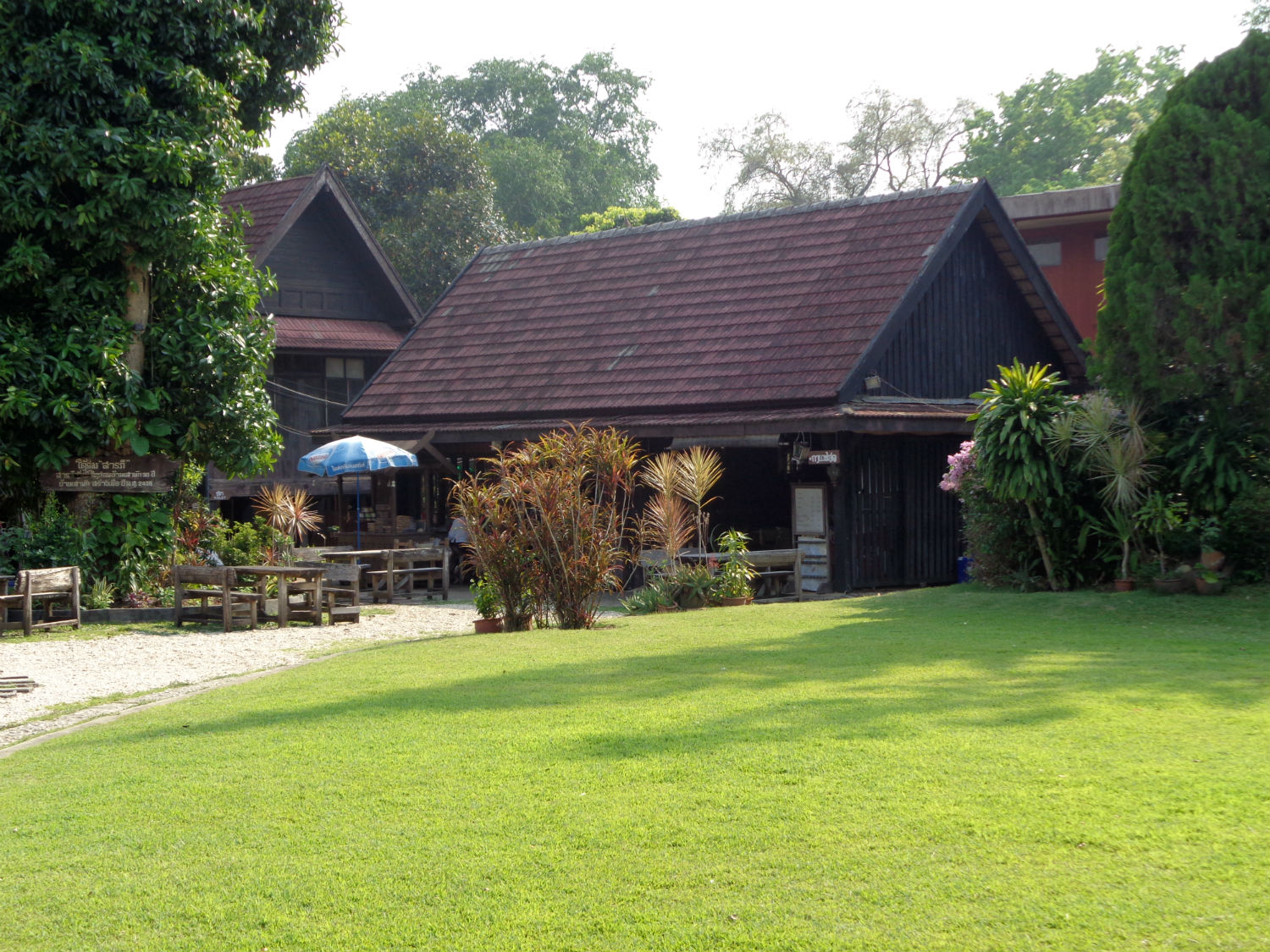 Ban Saonak, Lampang Old City
Ban Saonak, Lampang Old City
Ban Pong Nak........Ban Pong Nak appears here as a result of talking with residents rather than studying maps. That so, I feel it may not be that important, particularly as it seems hard to locate. Finally when we do locate it, it’s actually inside Fort Surasakmontri, an army base to the east of the city. Not for the first time I find myself in an army camp guarded by military police who seem to have no qualms about us visiting the site. As I stated on the last occasion, I would consider this a security issue and would not be allowed in the UK without official clearance: Certainly the official line is that you need to make an appointment first. So what is at Ban Pong Nak? Well it consists of just one building modeled on a European design I would say around 1900. There are a couple of reasons for visiting this site. For Thais there is an historical significance as it was a building two former Thai Kings staying in during official visits. It probably was used by visiting high ranking officials too. The other reason to visit the site for those interested in military matters is the small collection of exhibits including a number of small arms and other weapons. Not for the first time today I see something of British interest, a heavy WW1 Vickers machine gun, the first time I’ve been up close to one and a vintage Tommy helmet. Some of the bayonets displayed are also British.
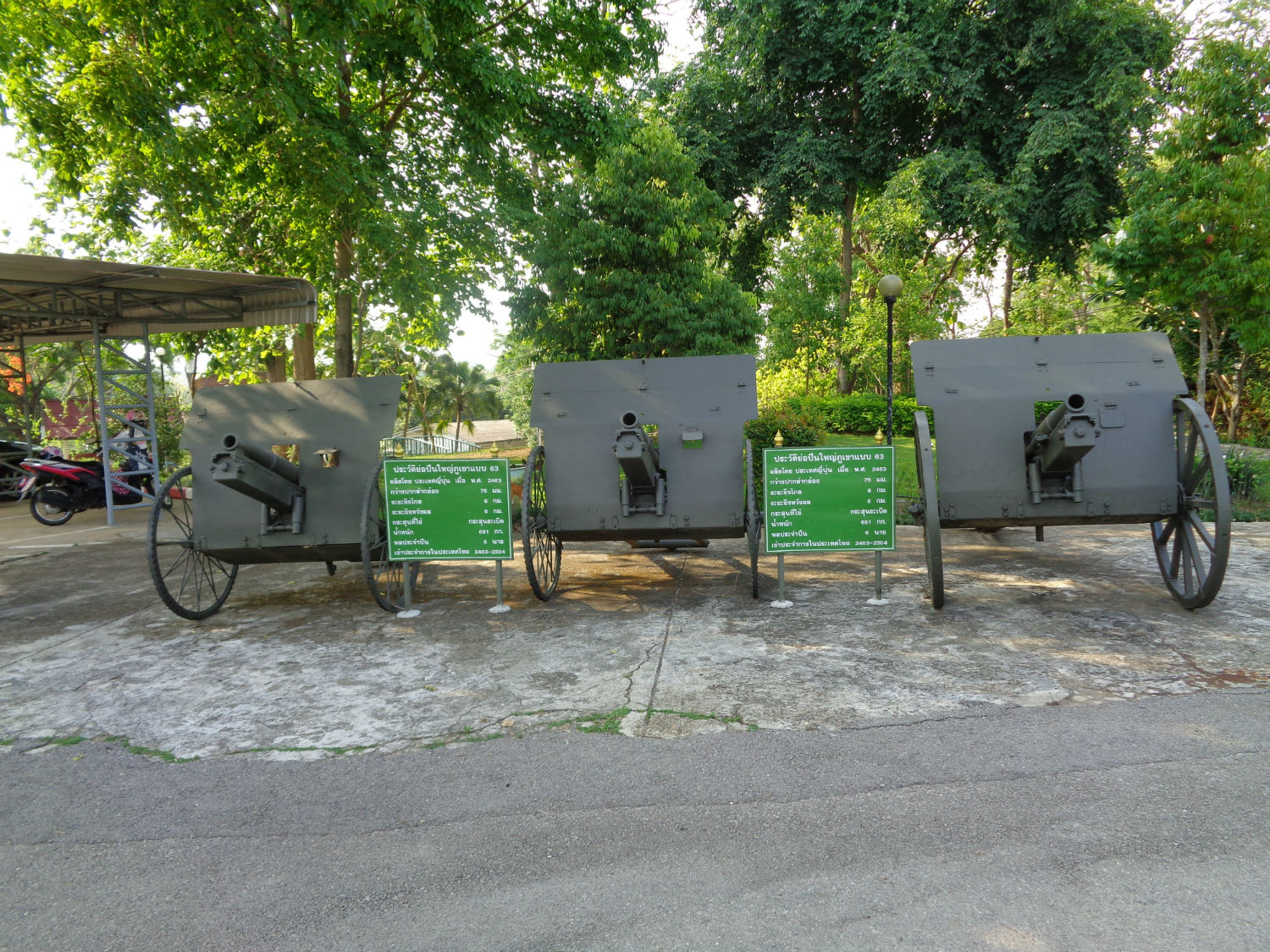
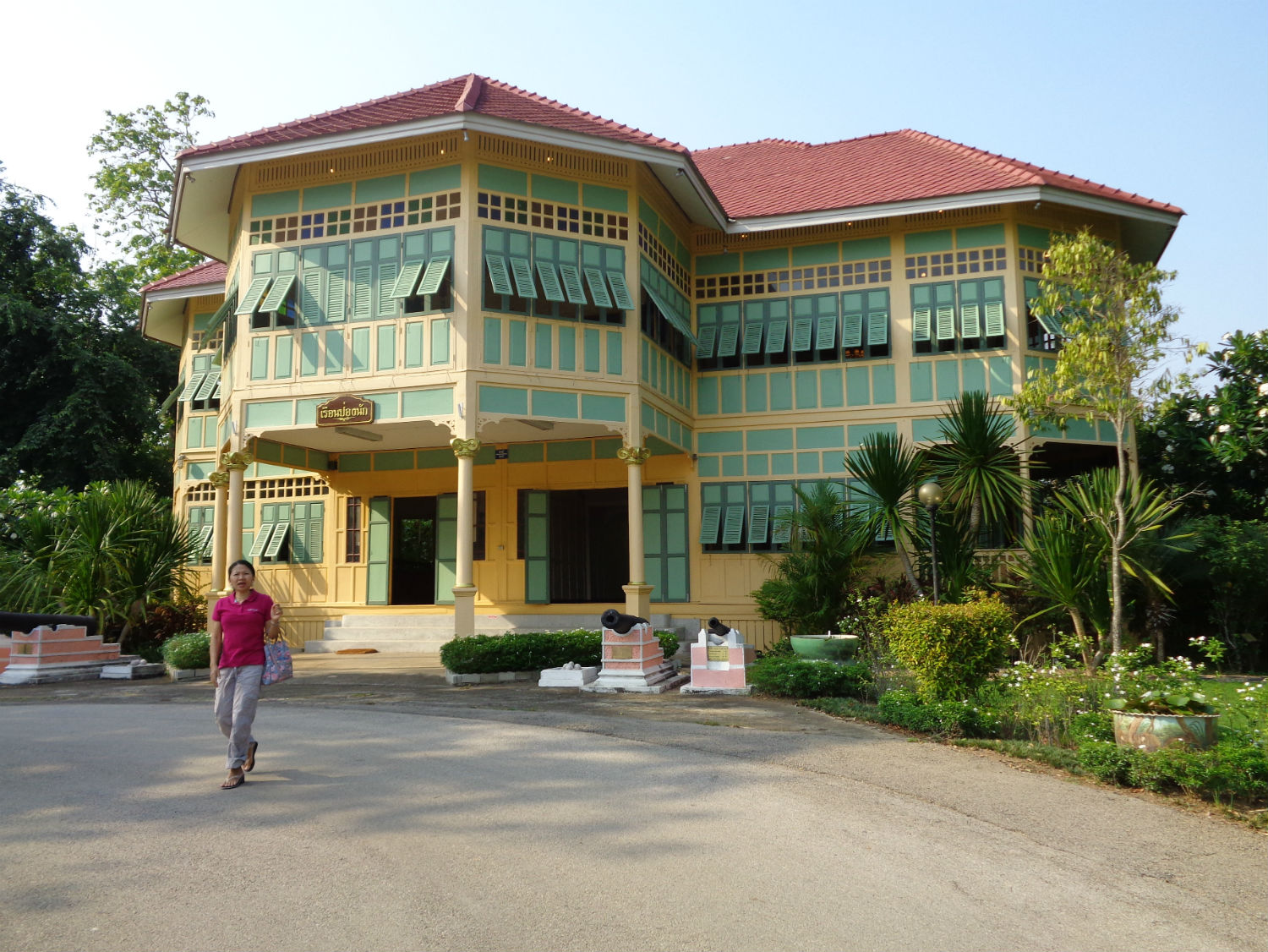
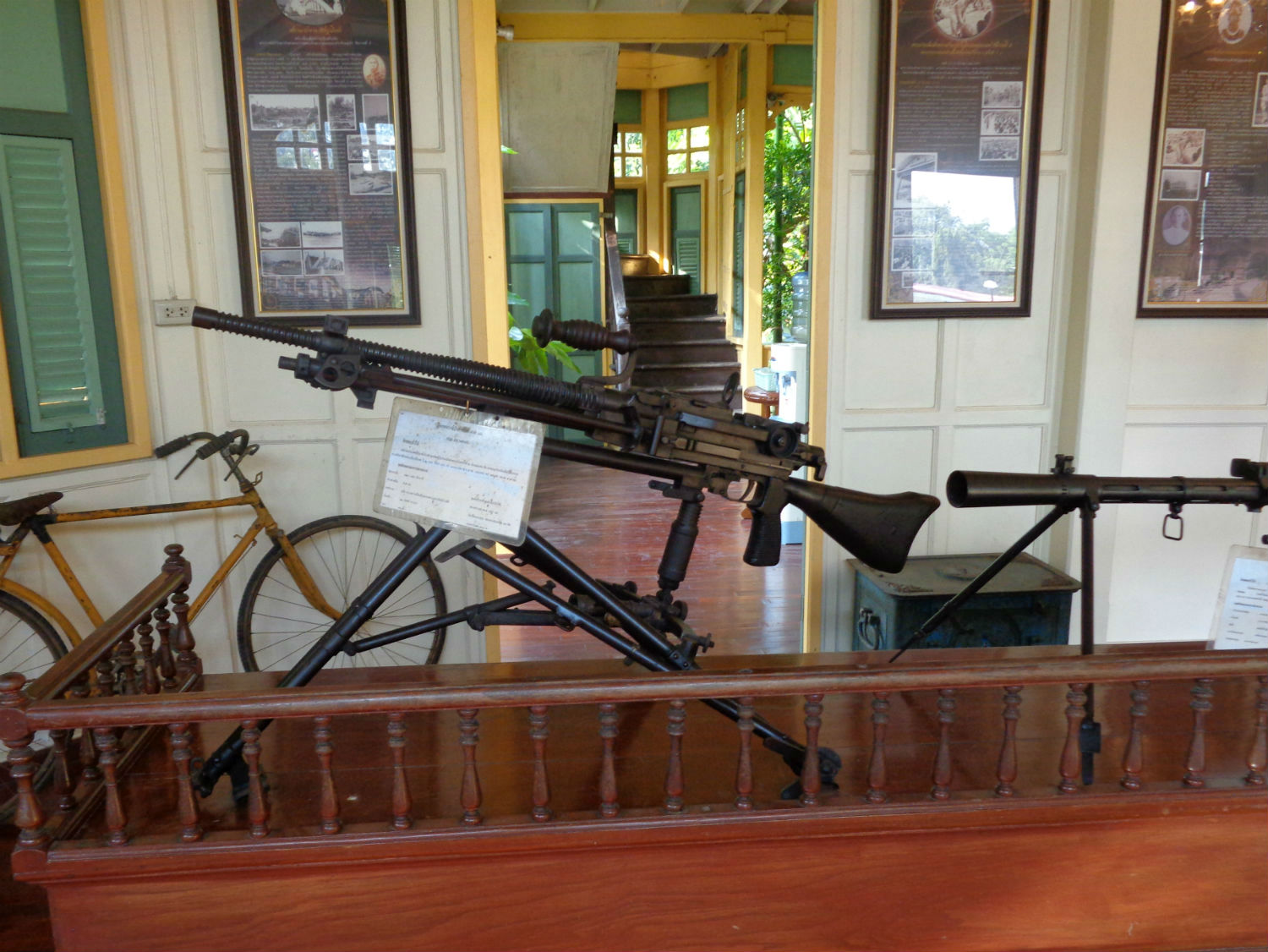
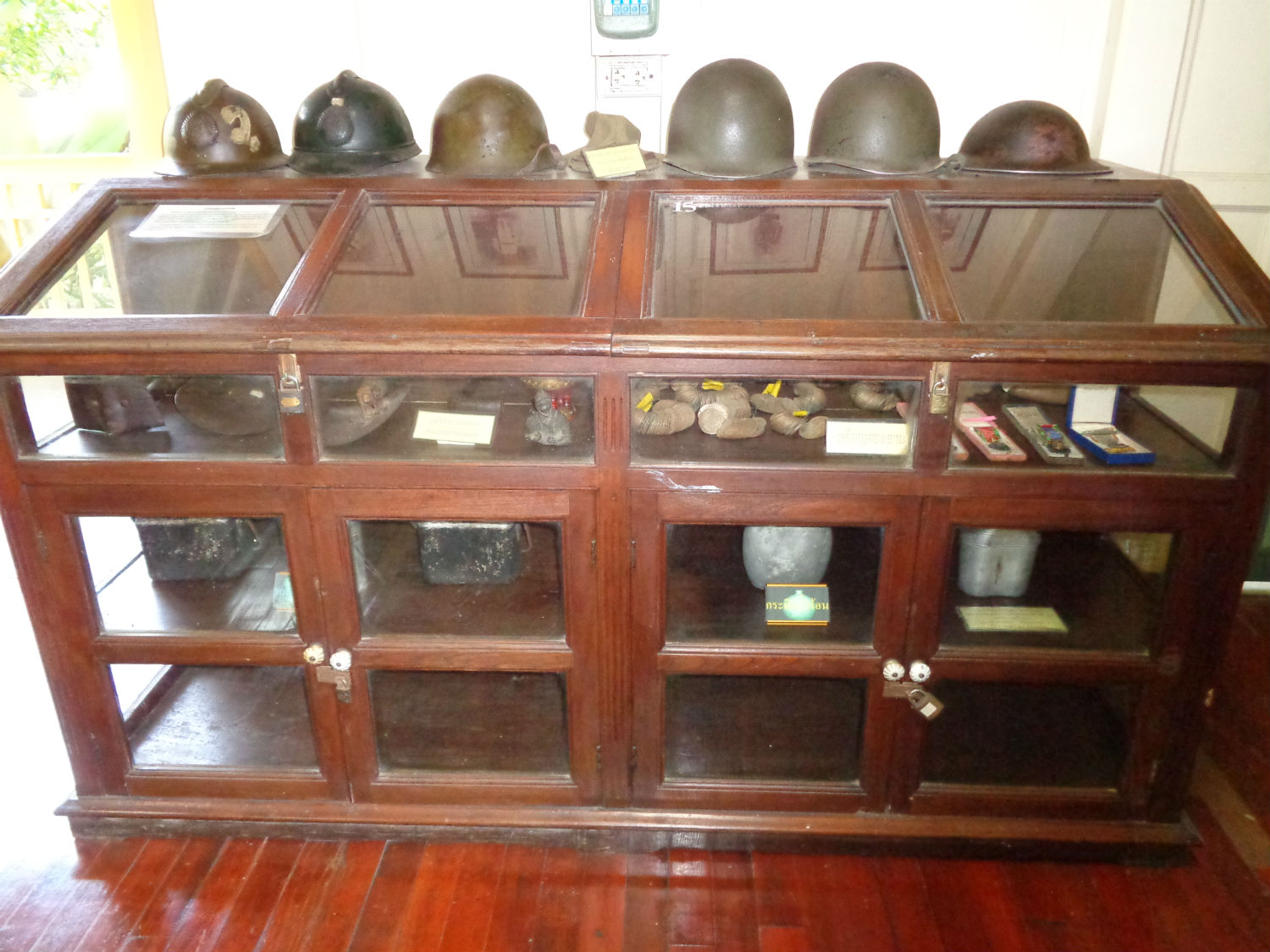
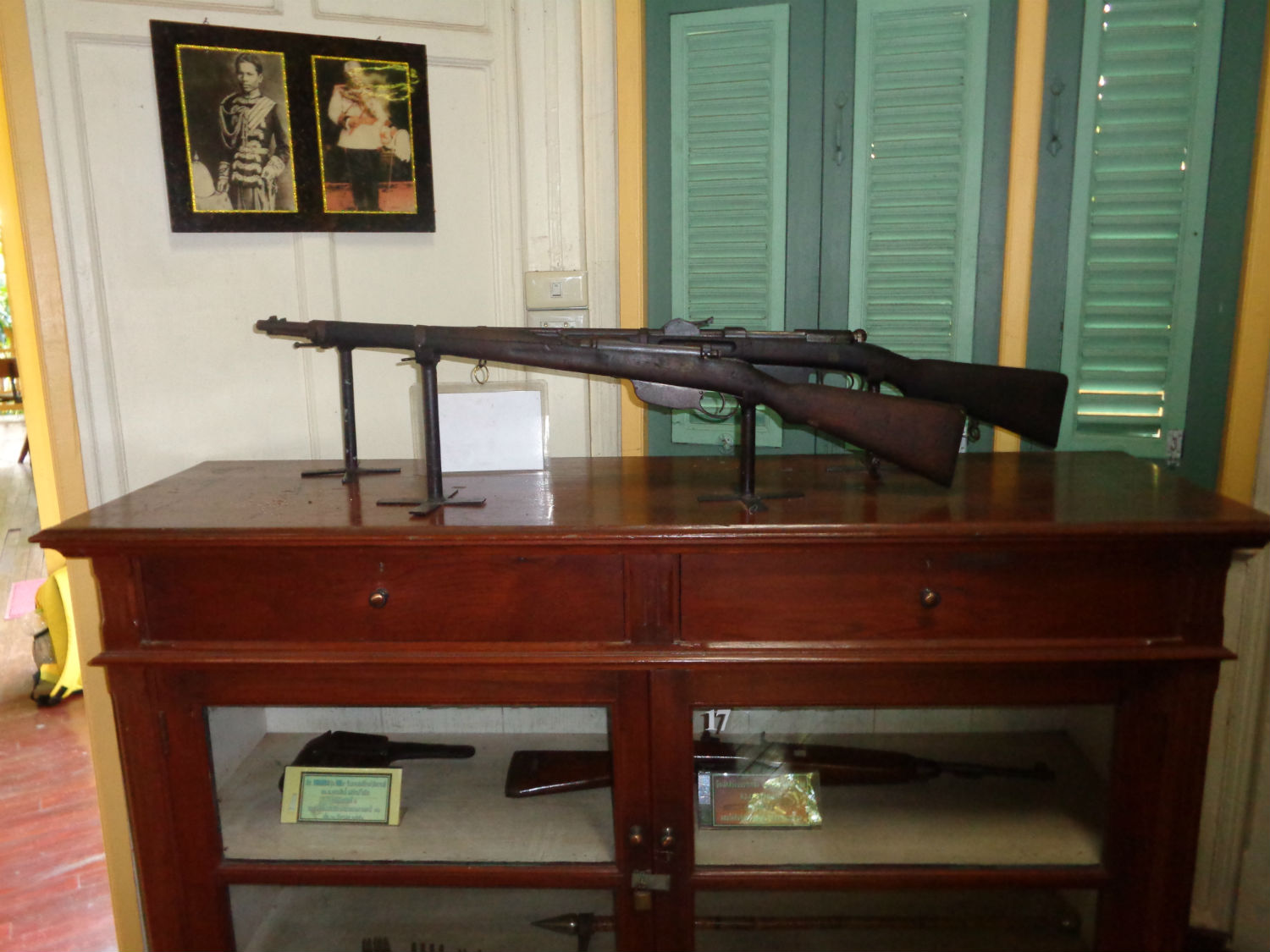
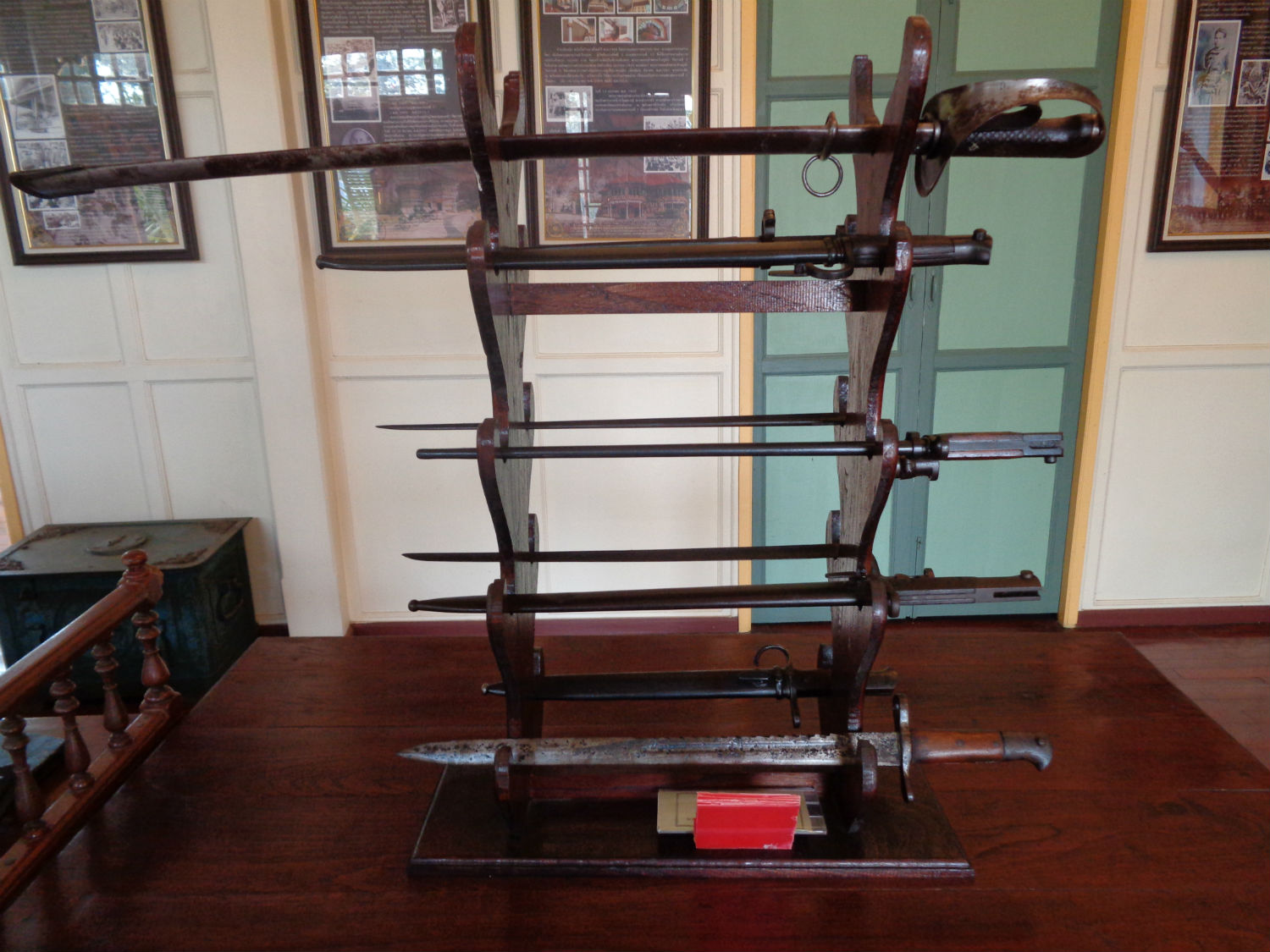
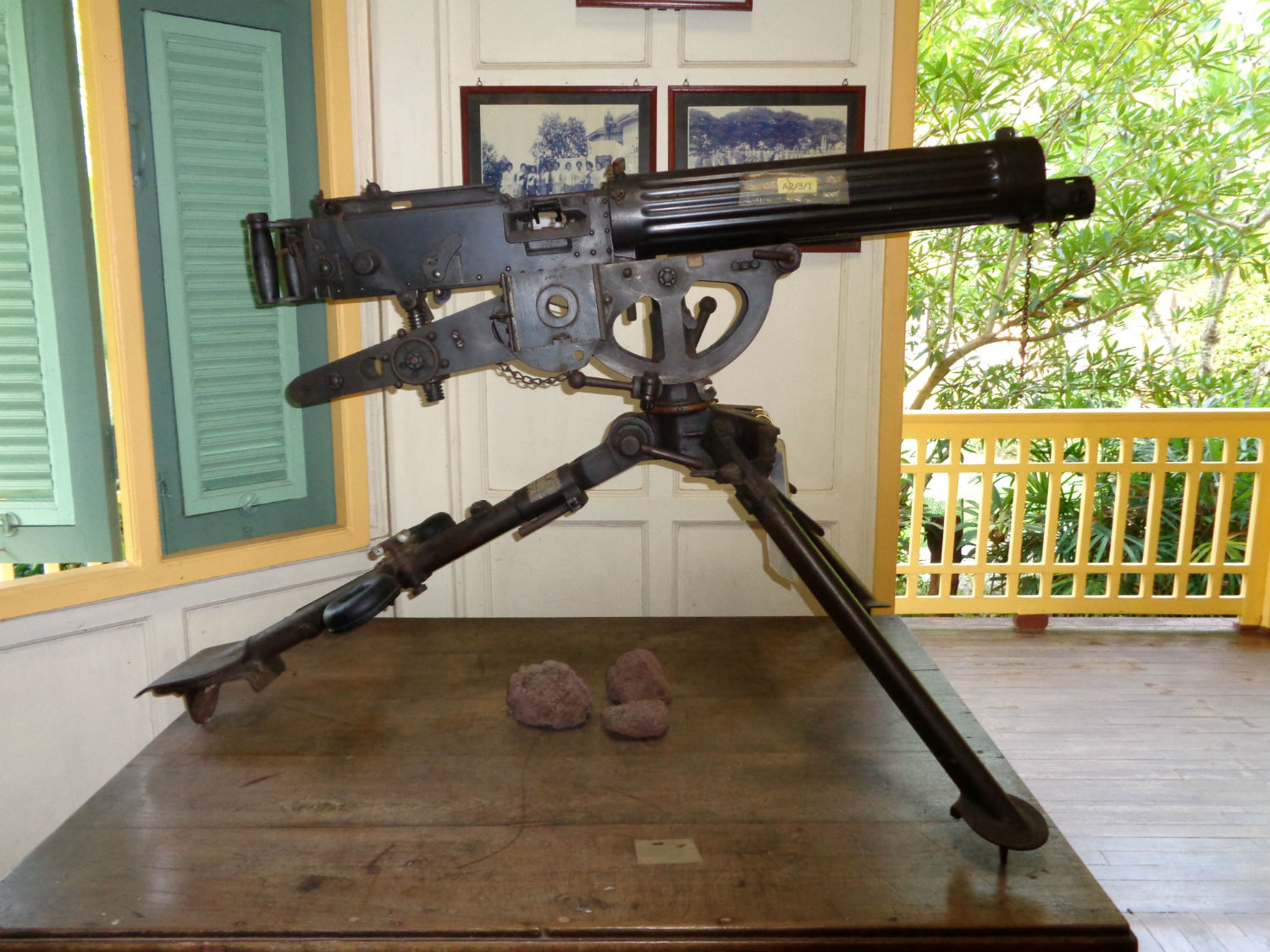
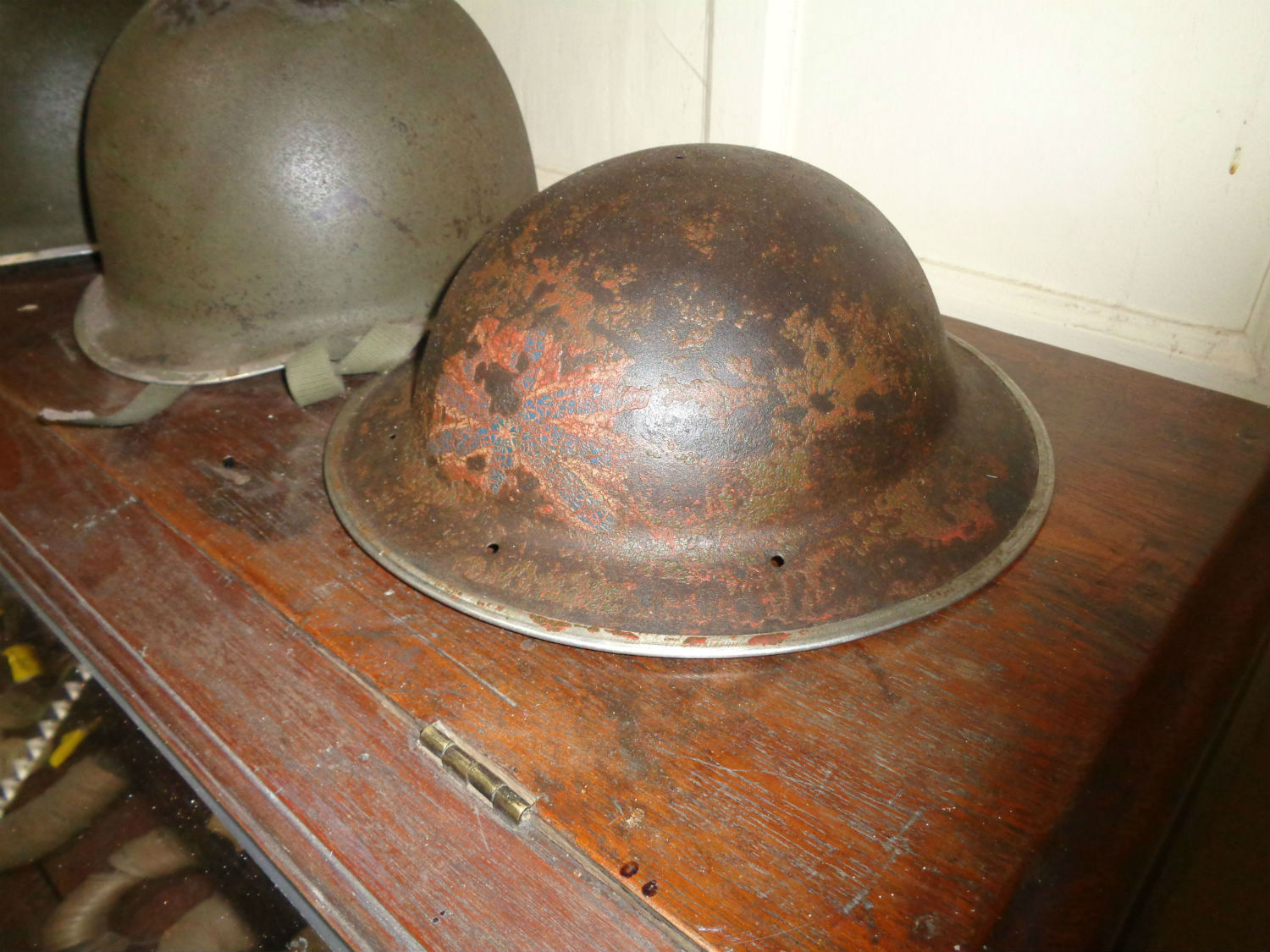
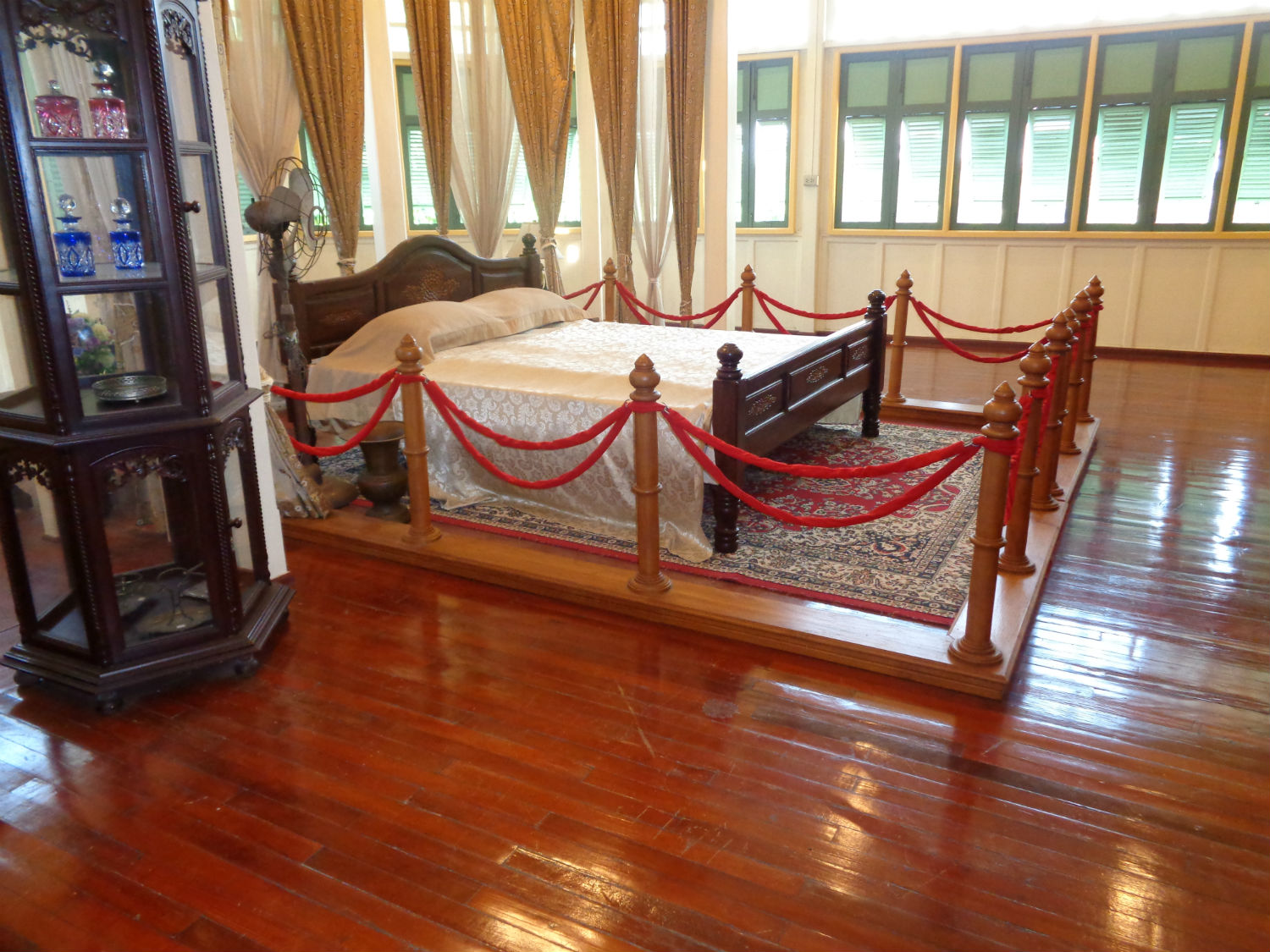
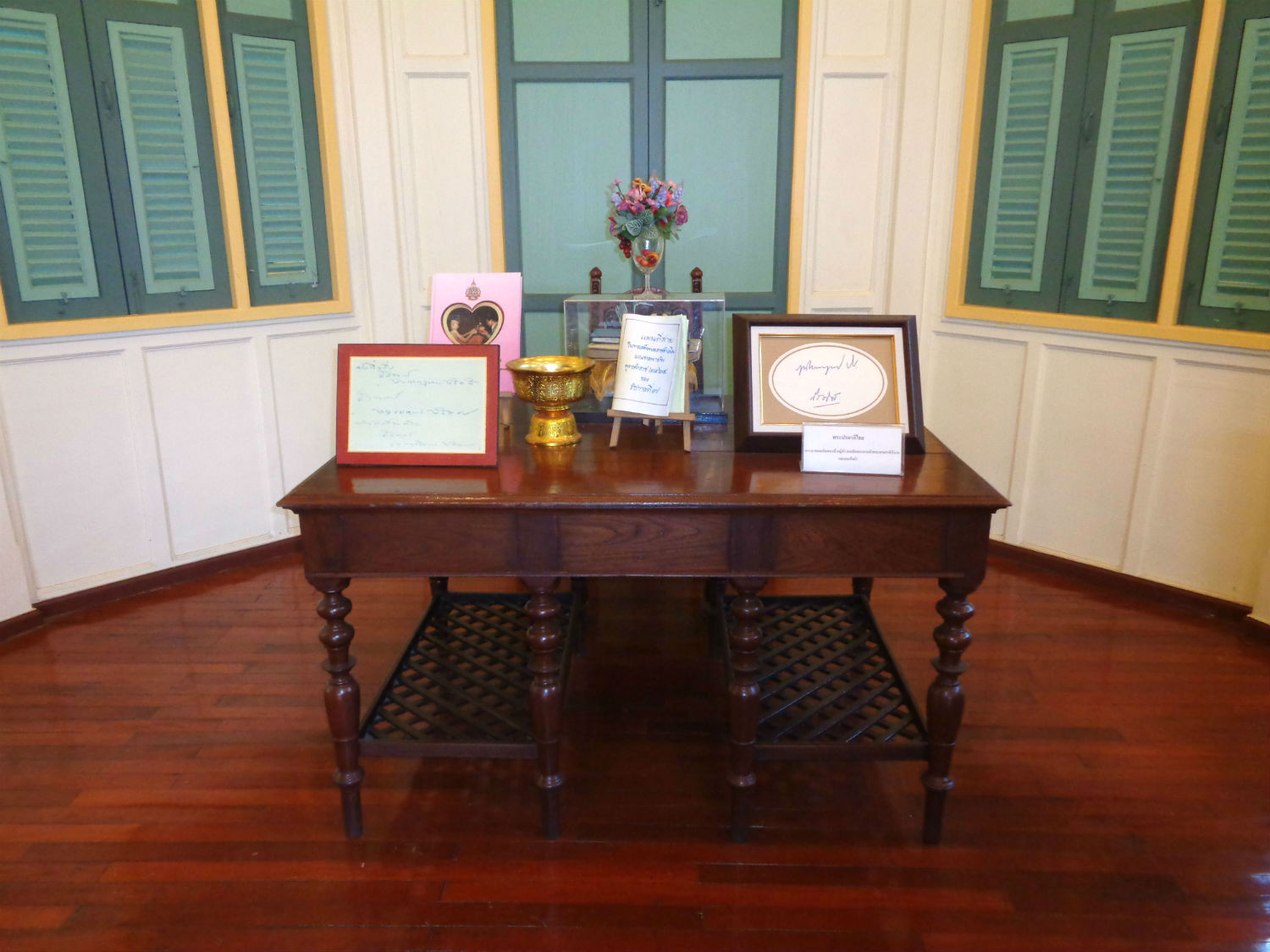
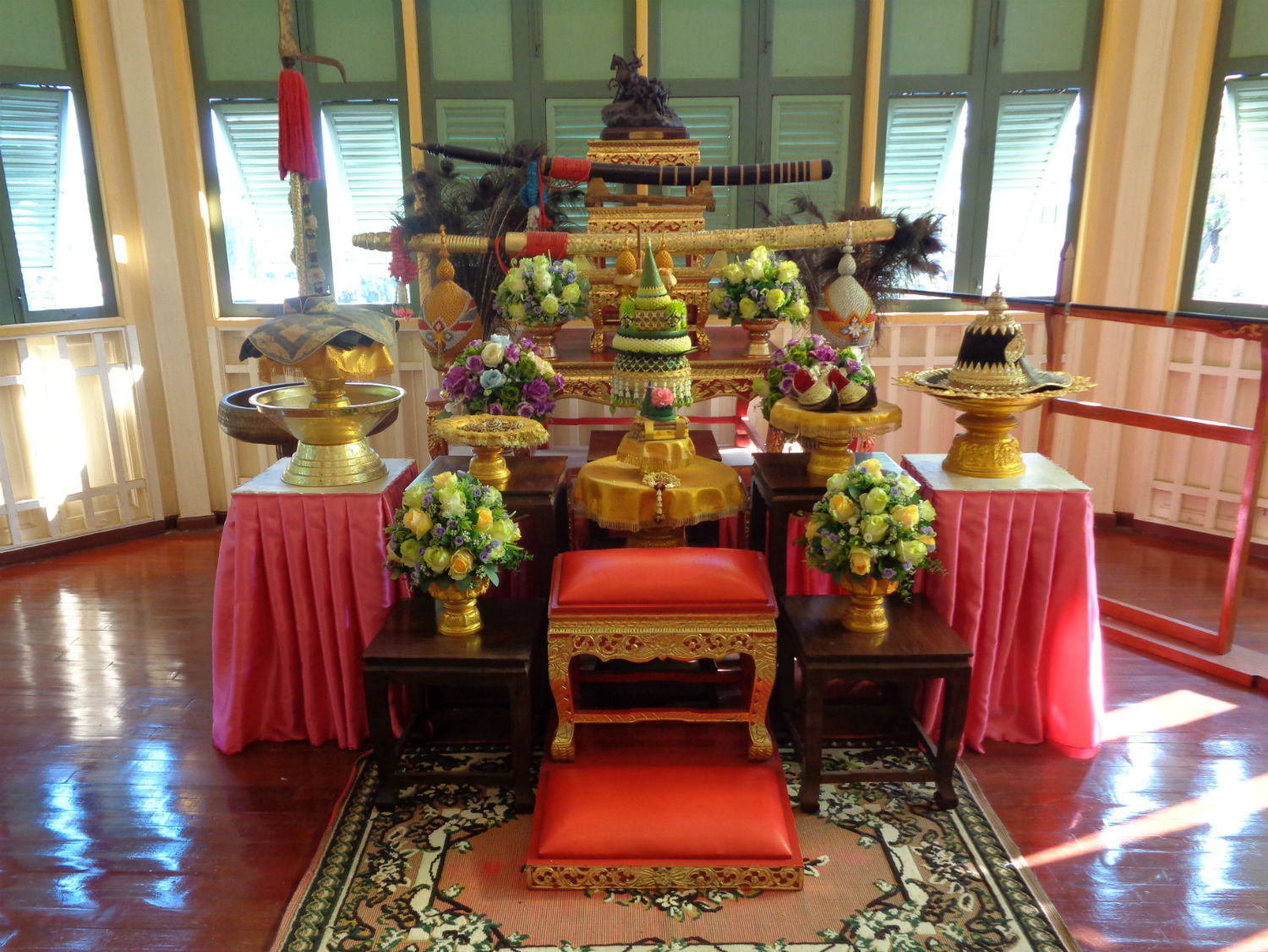
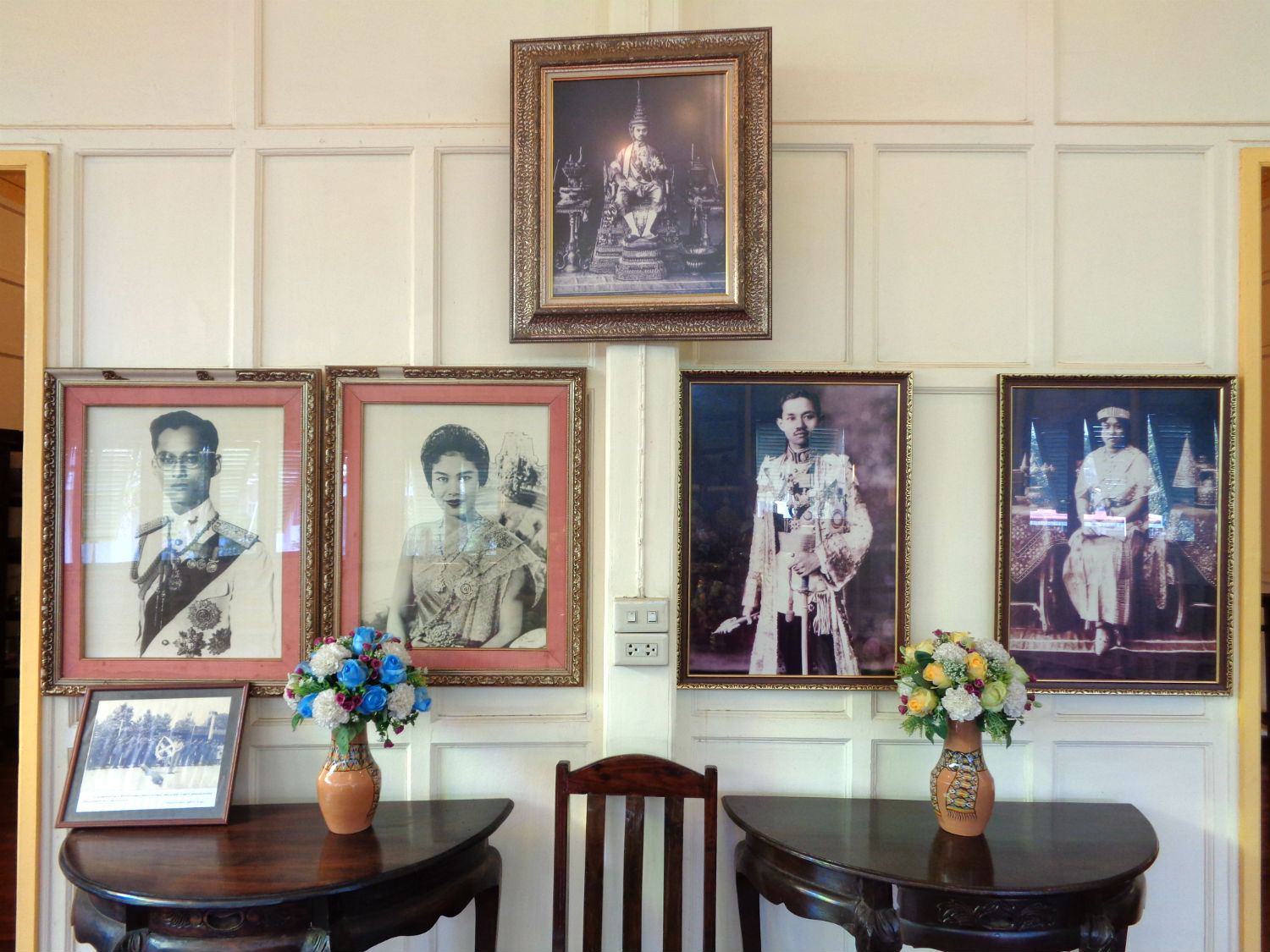
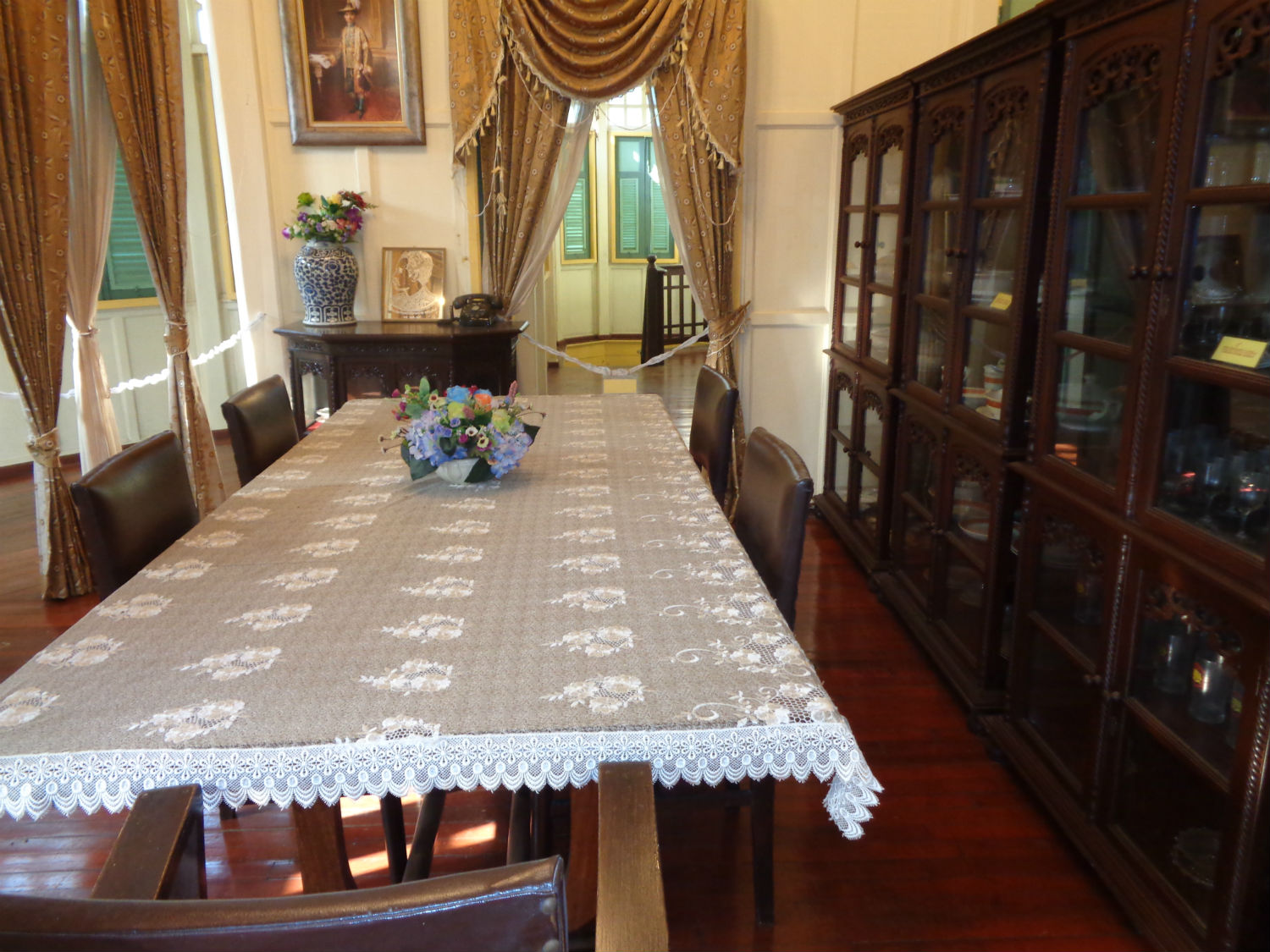
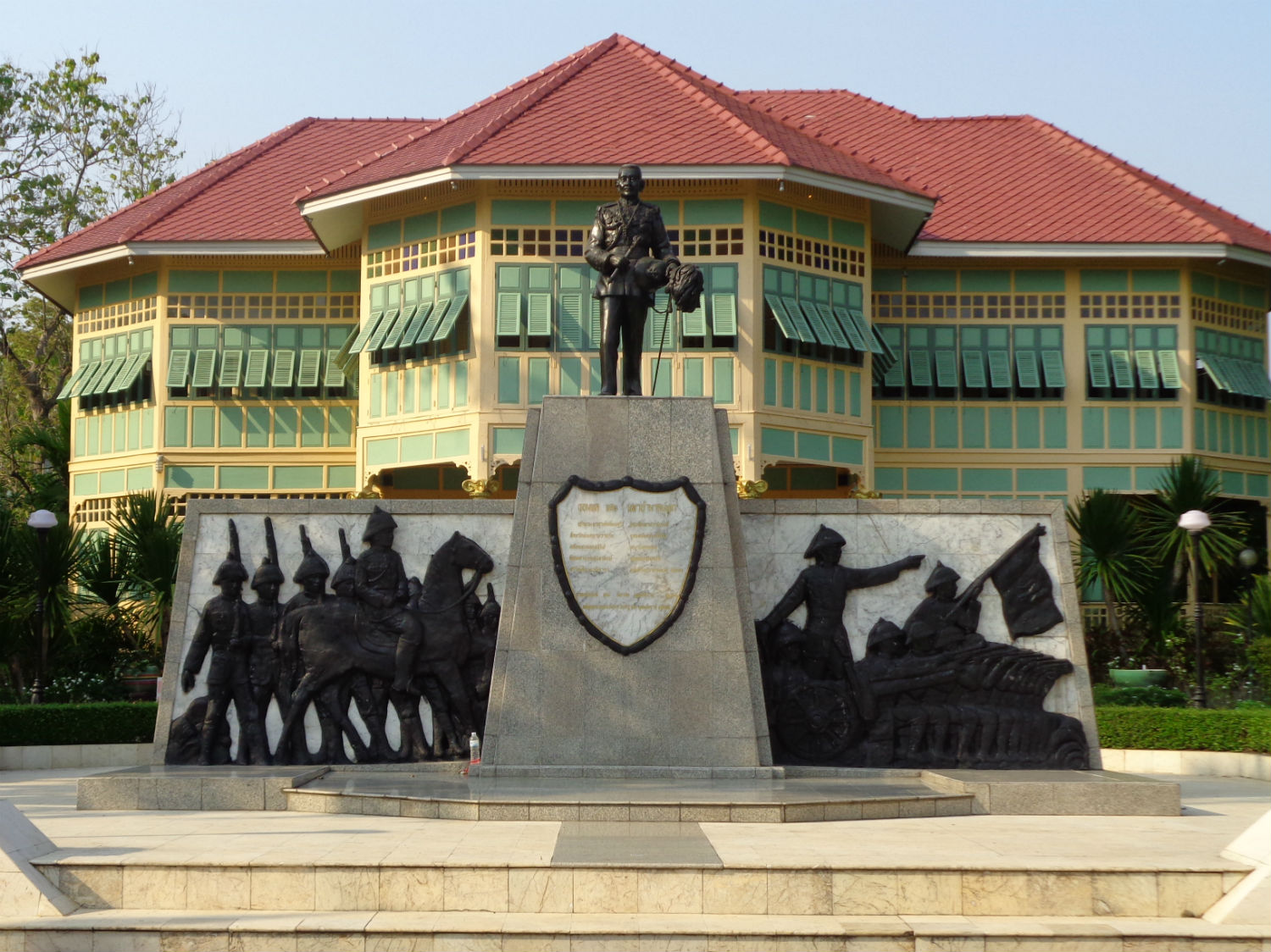
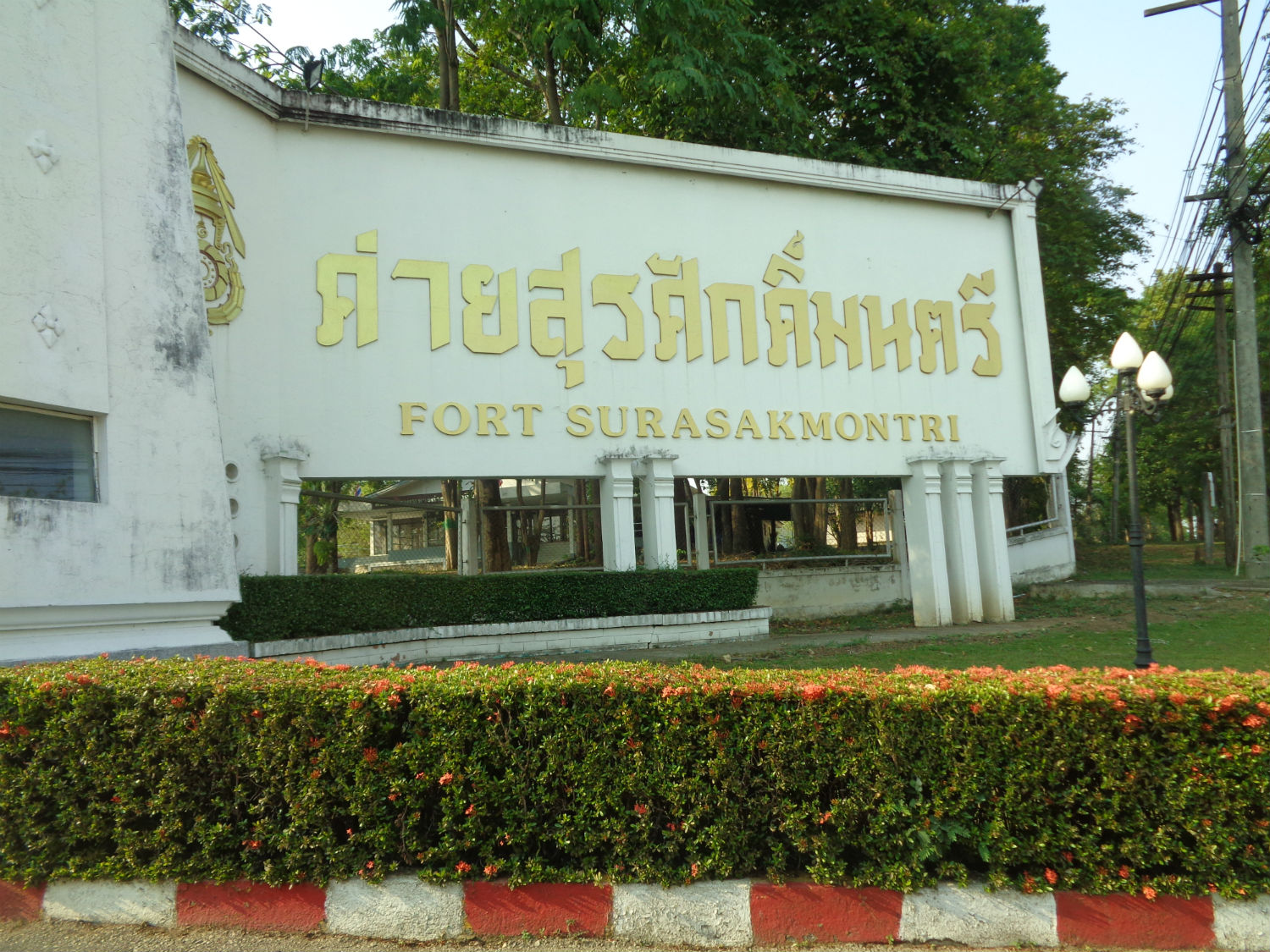 Ban Pong Nak, Fort Surasakmontri, Lampang
Ban Pong Nak, Fort Surasakmontri, Lampang
Lignite Mine and Botanical Gardens........With a number of temple sites still on the visit list including three in the city, Katoon seems to have reserved something else for late afternoon and it means leaving the city. We head back down the Phaholyothin Road joining Highway 11 heading southeast then turn left onto the 1348 signposted Mae Moh. The two features I’m aware of along this road are the lignite mine and the botanic garden beside a golf course both more than 20 minutes away. Now well after 5pm I’m curious as to why Katoon wants to come here so late in the day. Picking up signs for the mine, I’m assuming these are old mine workings. However the road leads straight up a hill past a massive power plant to the botanical gardens (no pun intended), a wonderfully landscaped area on a hillside supporting the golf course. It’s here I finally see the connection between this and the mine. In the distance obscured by trees, not there by accident, are the mine workings, a vast area covering an entire valley. This is a working lignite mine and the area we’re in is clearly the company's attempt to reduce the impact of what is a massive operation here. Unfortunately the museum here is now closed but in the outdoor section is a good collection of the massive machines that worked on the site. For me it’s been a long but massively productive day but for Katoon their’s still another site she wishes to visit at sunset. There are times when it’s appropriate just to keep your mouth shut and as I well expect it’s now far too late and she just wanders around asking questions and burning fuel; the attempt is futile.
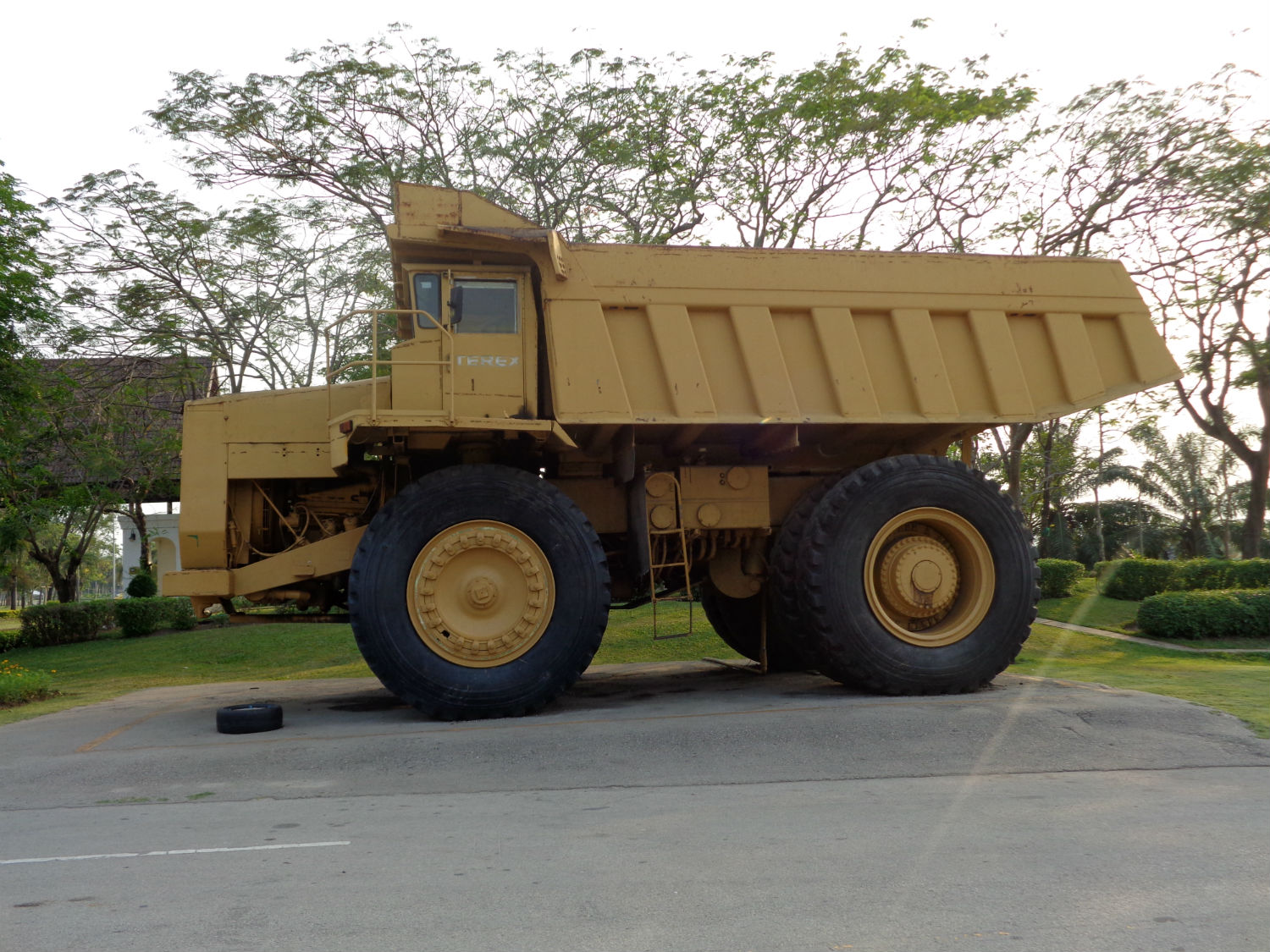
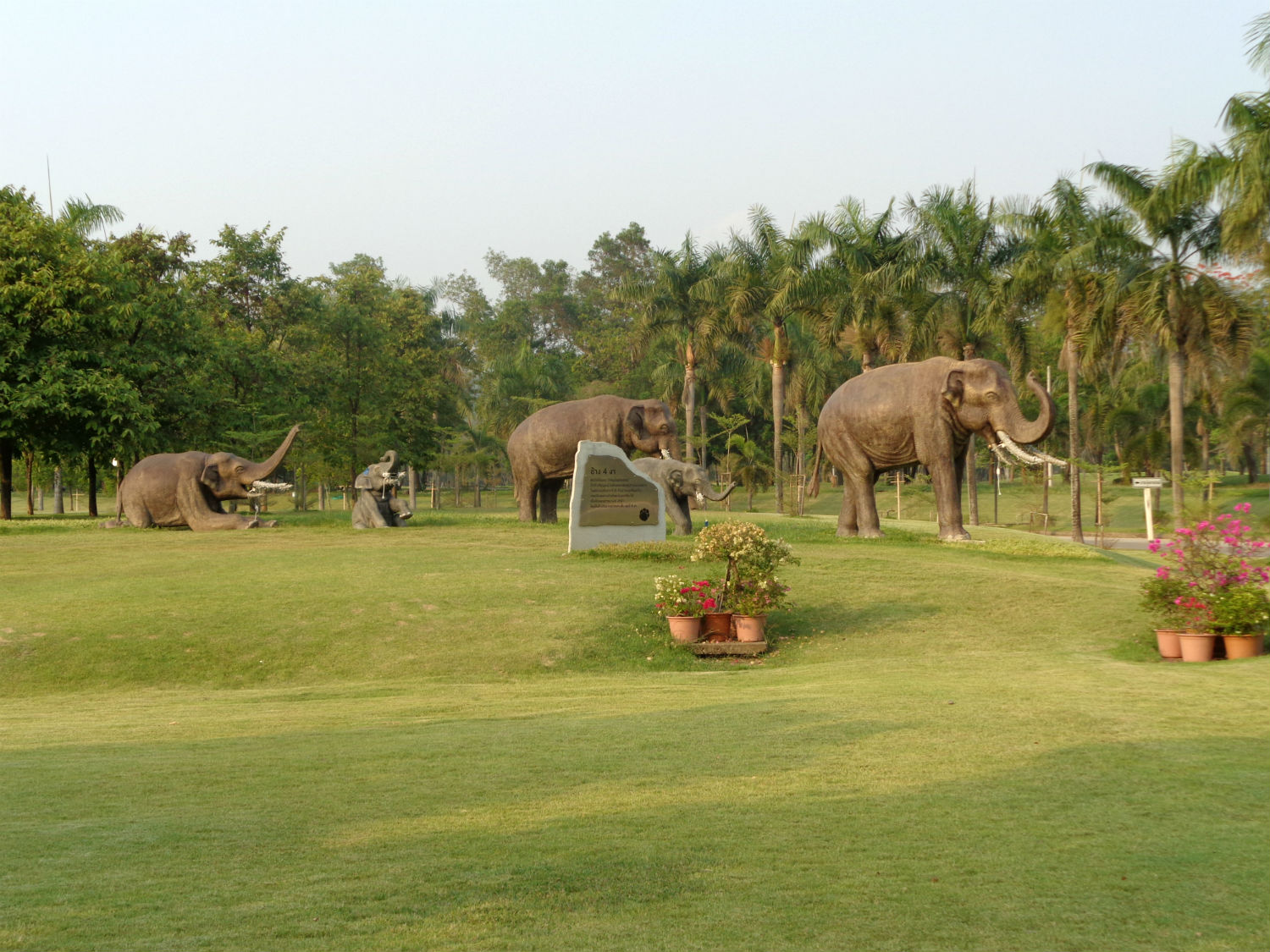
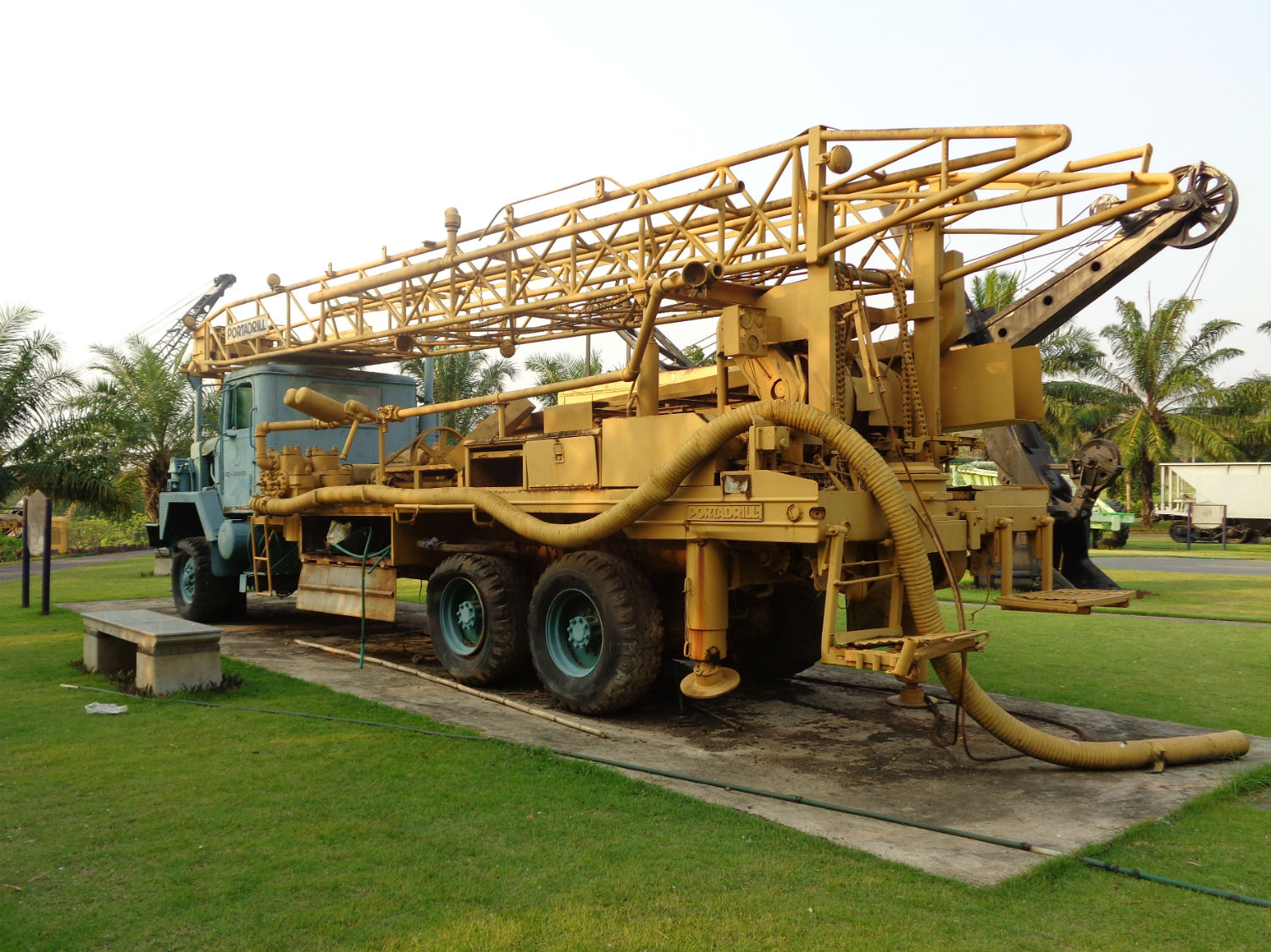
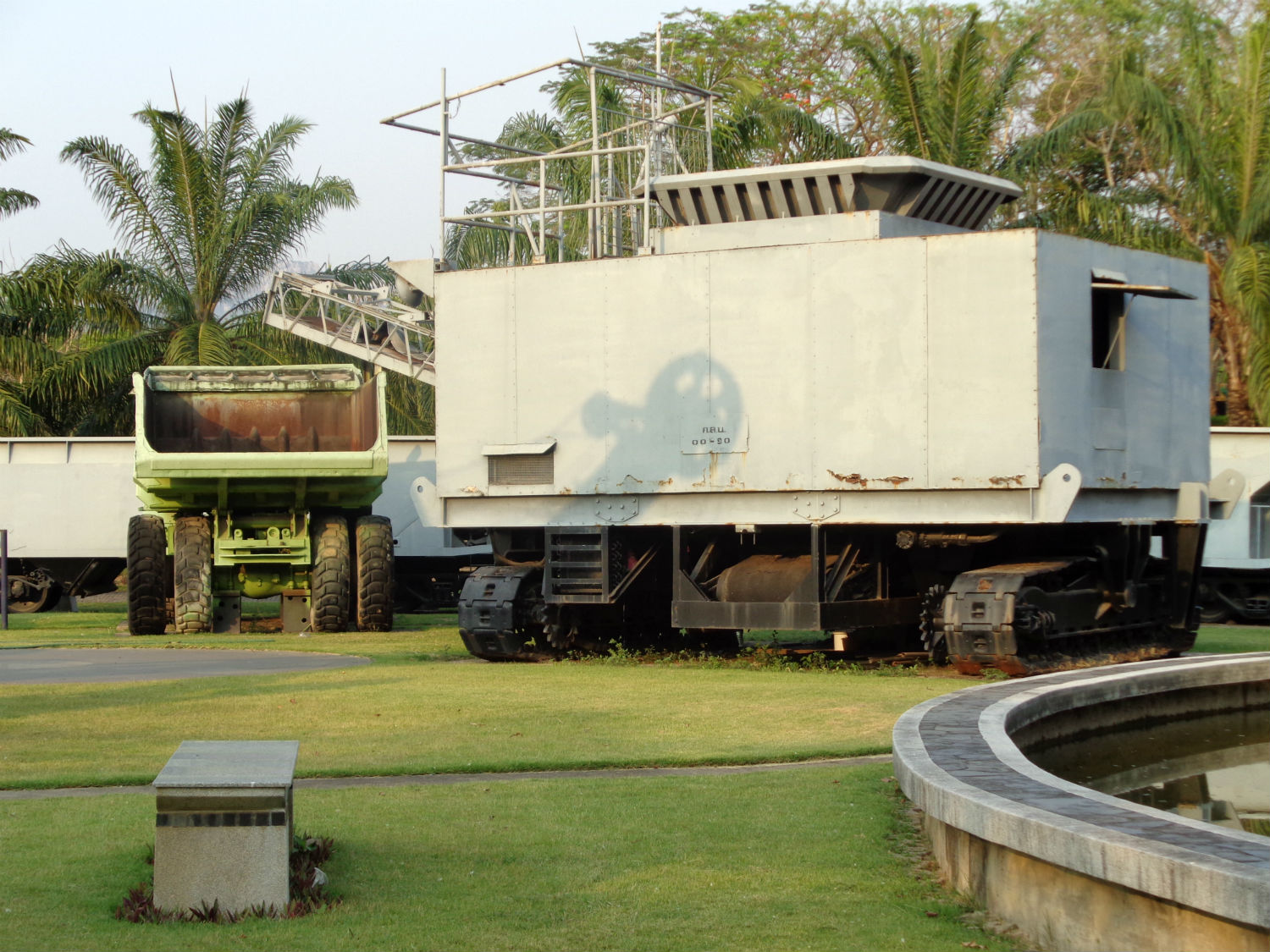
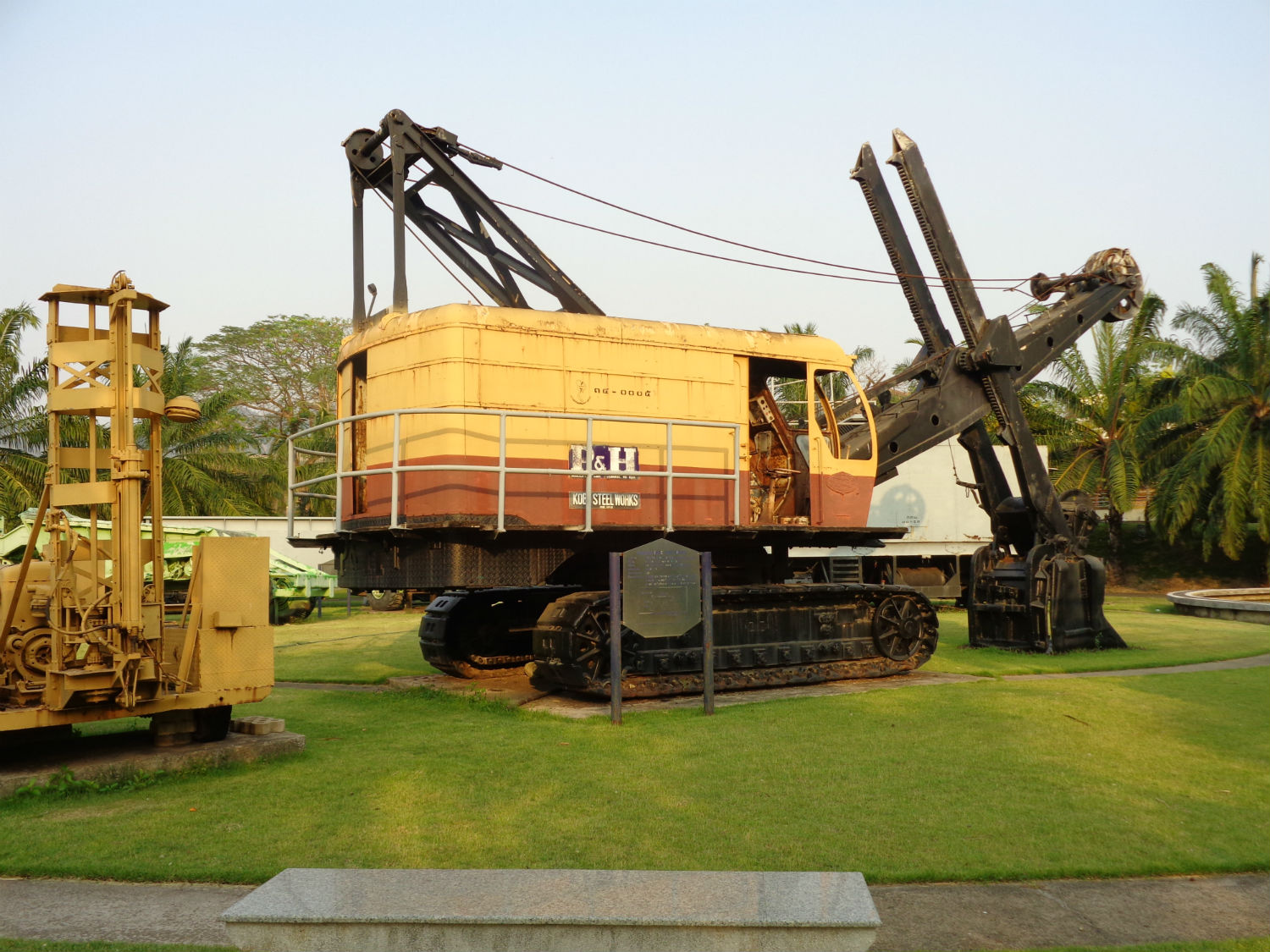
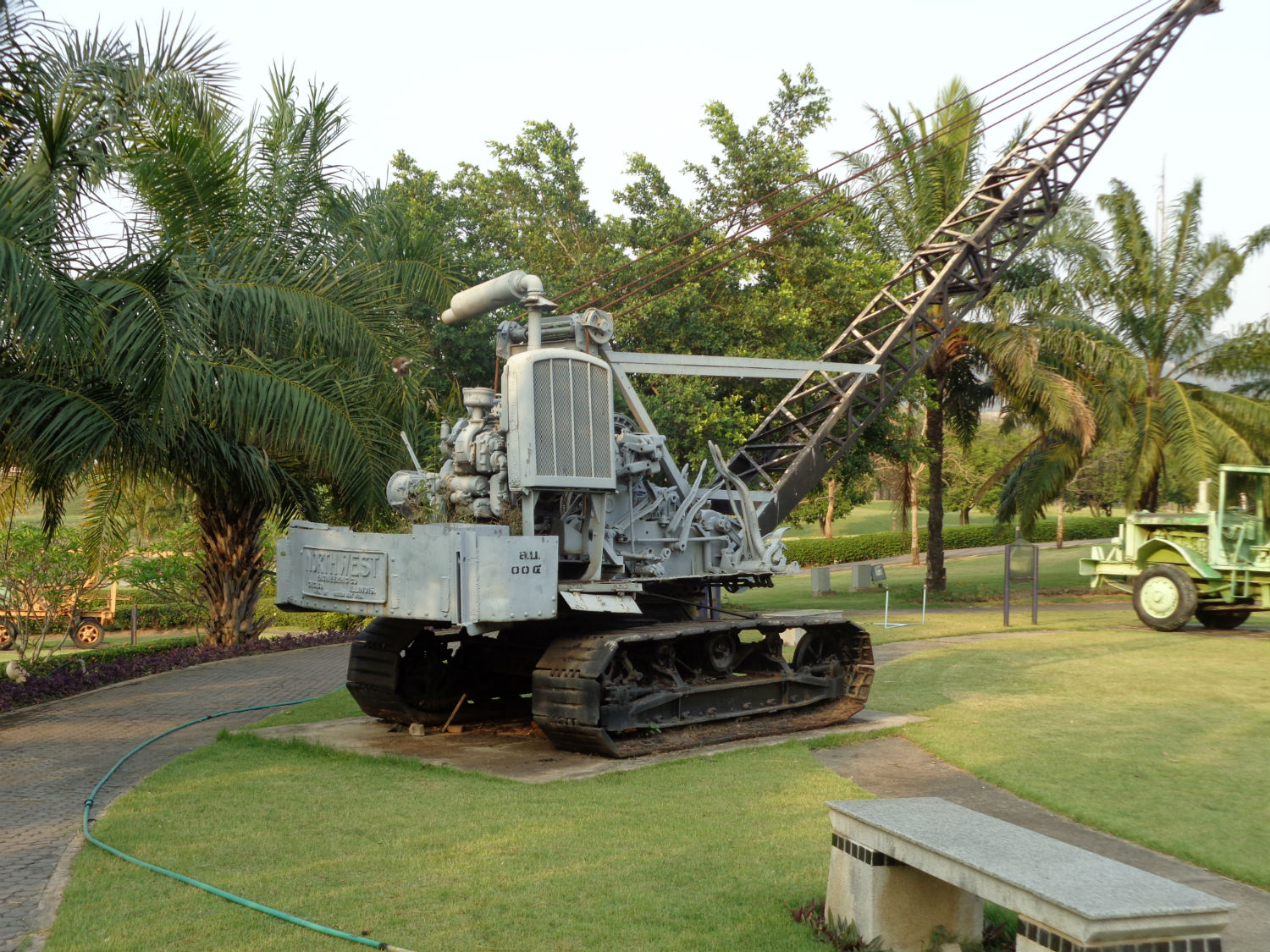
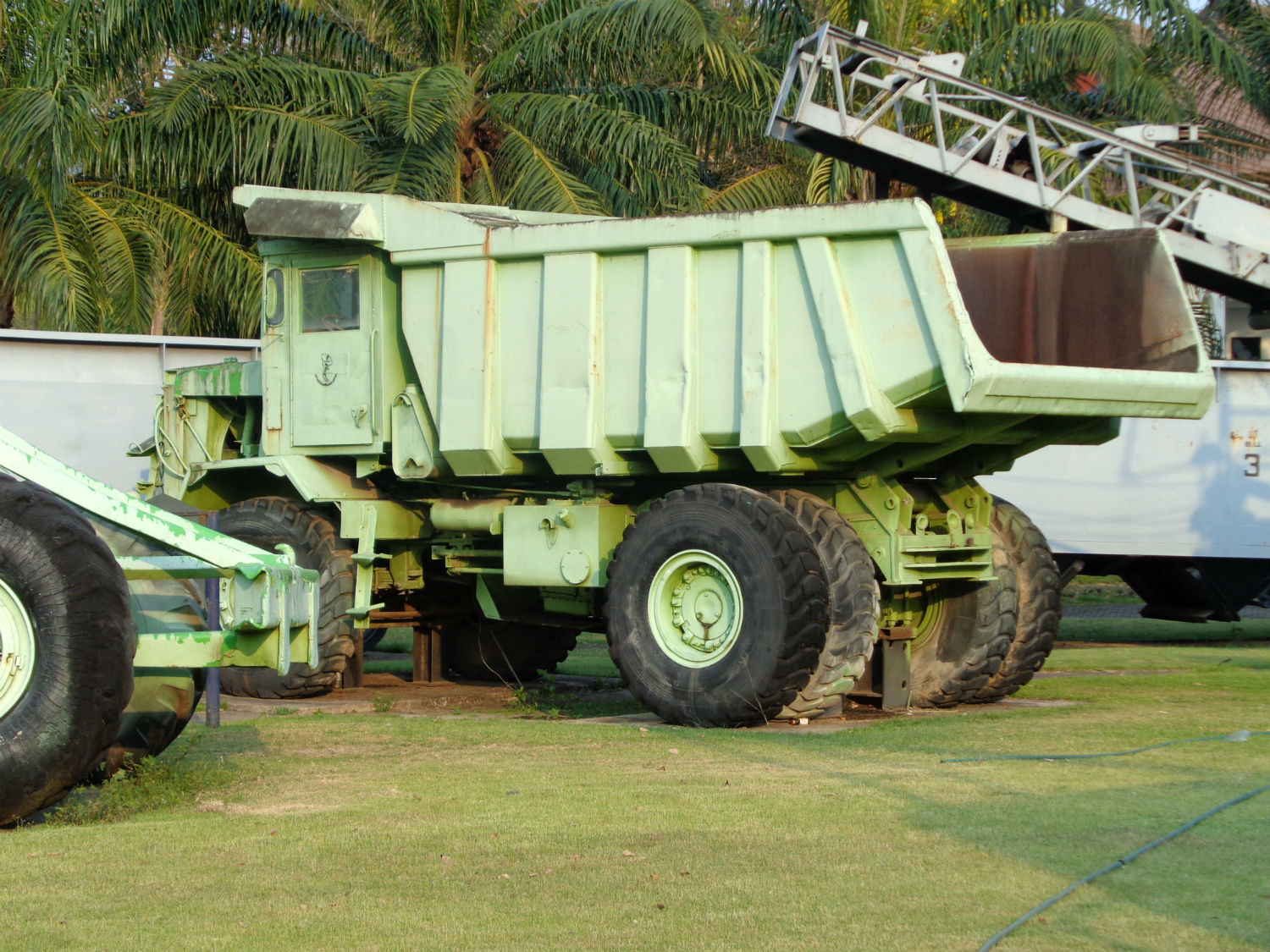
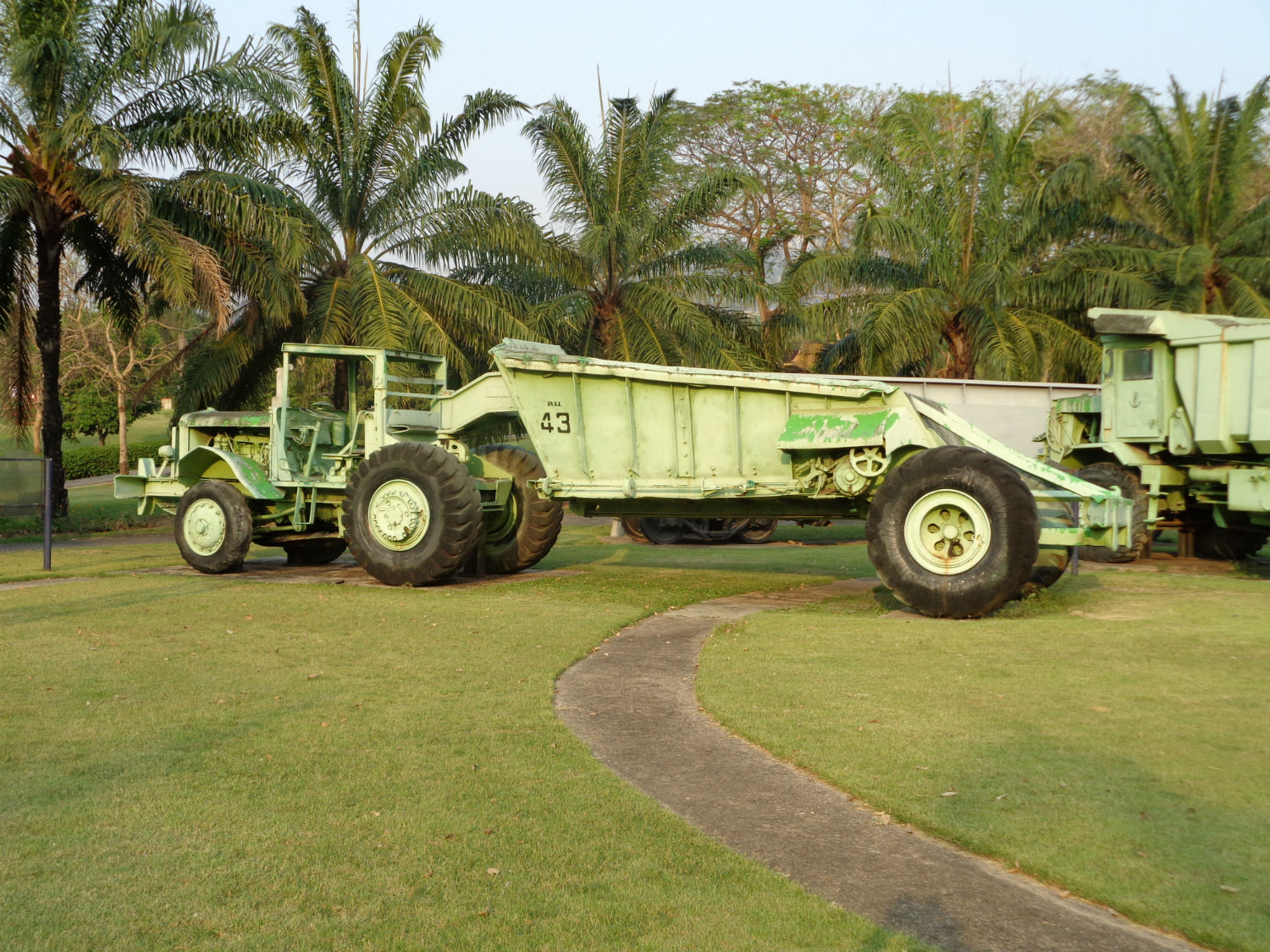
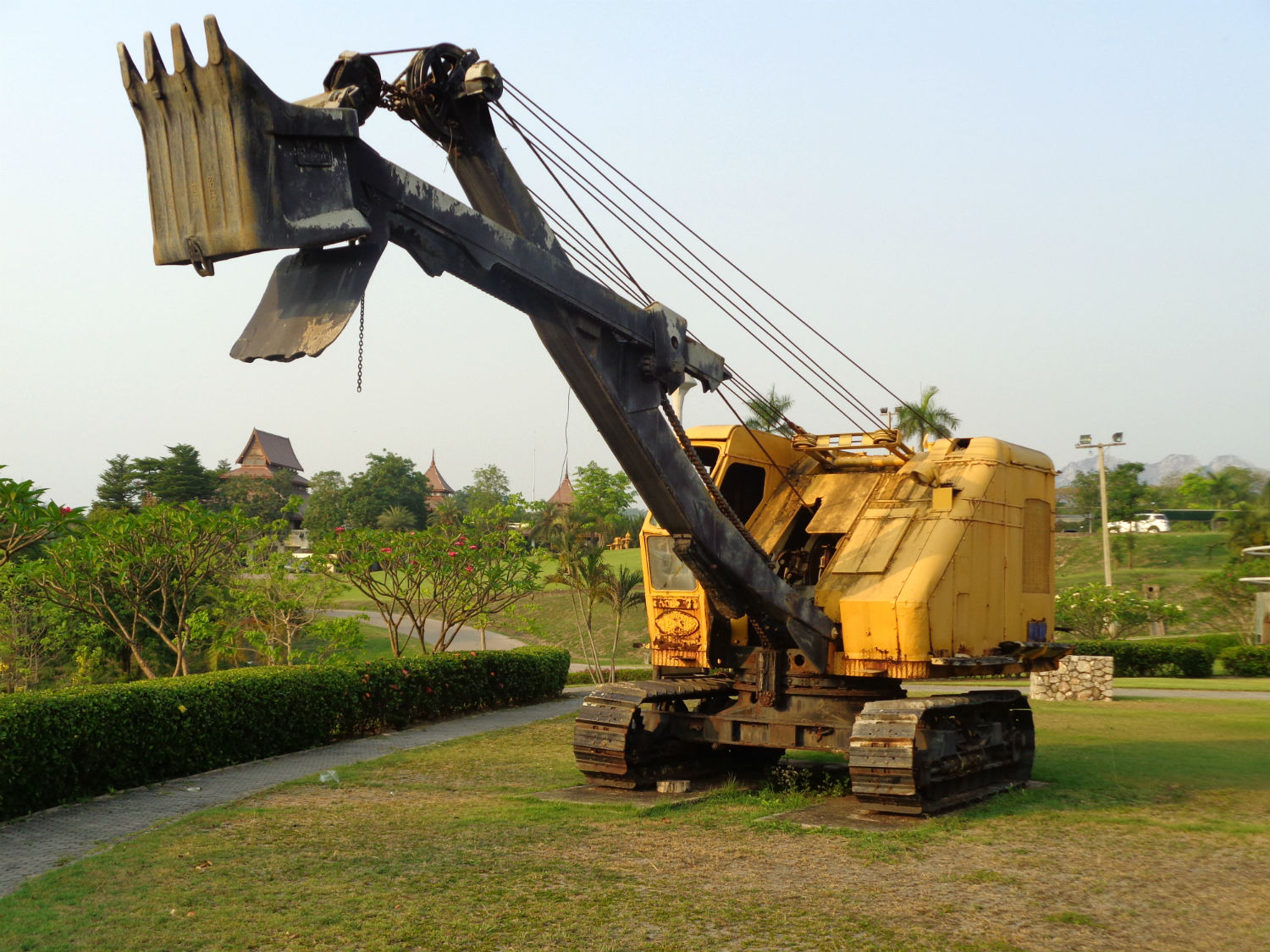
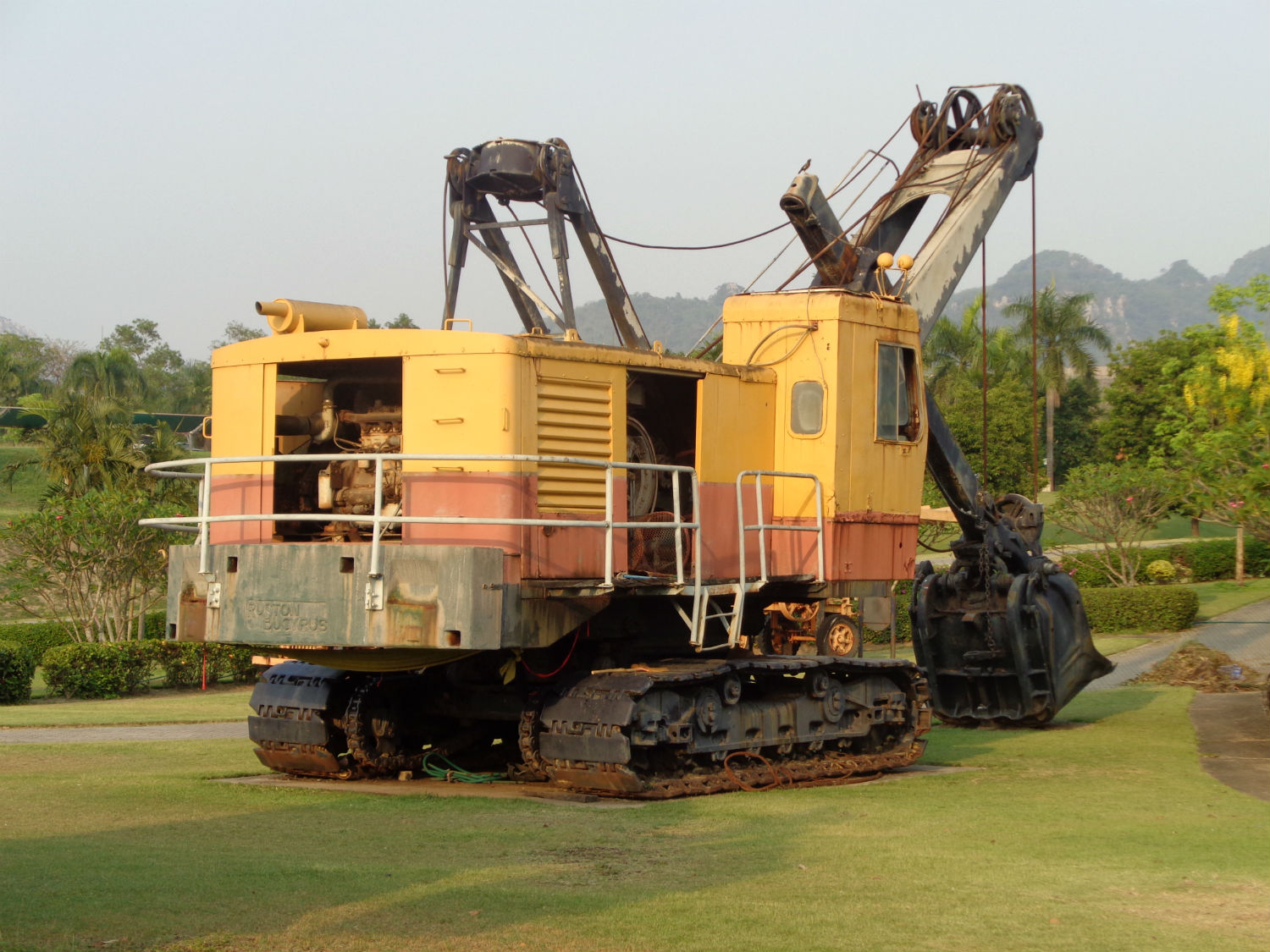
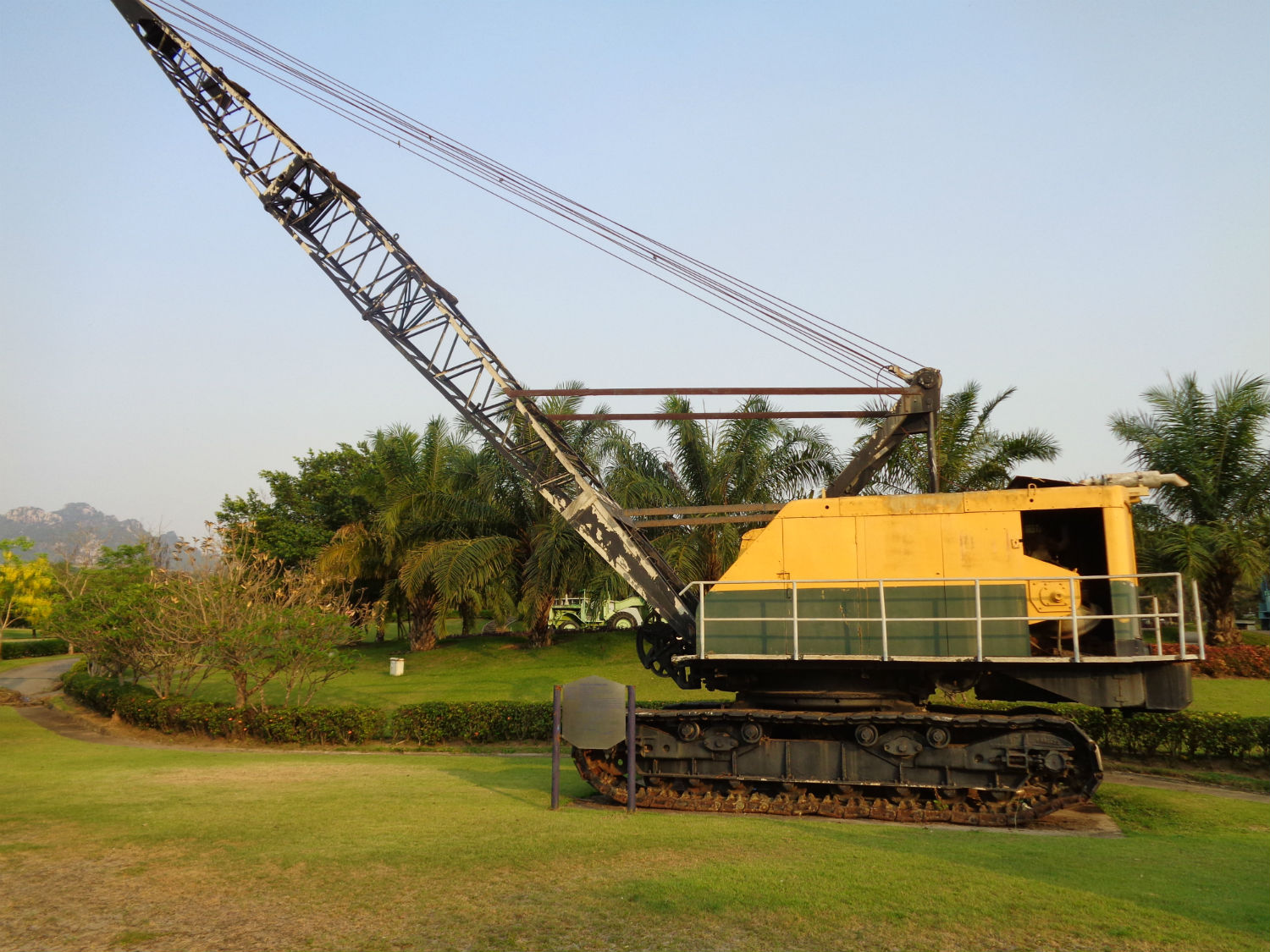
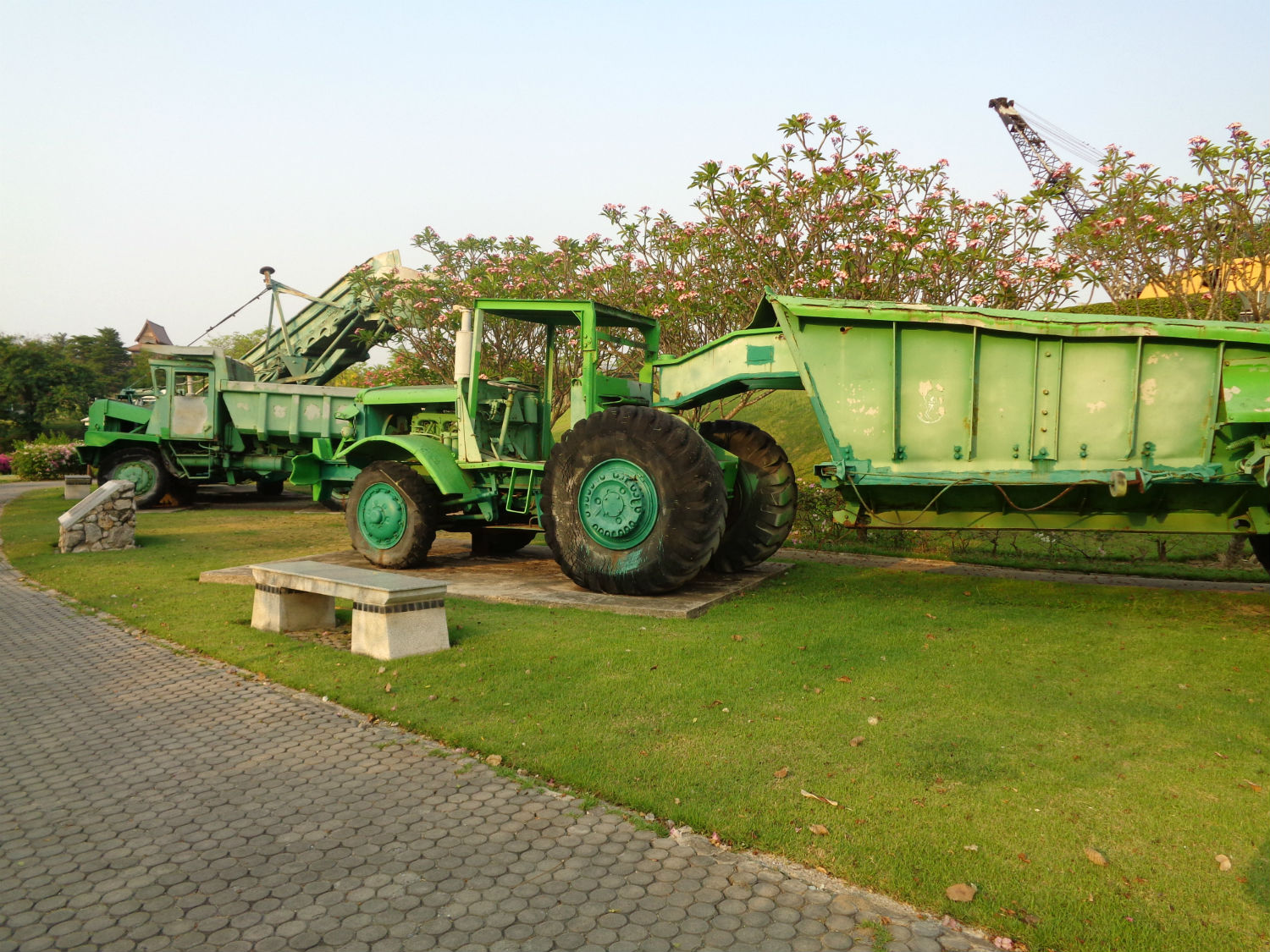
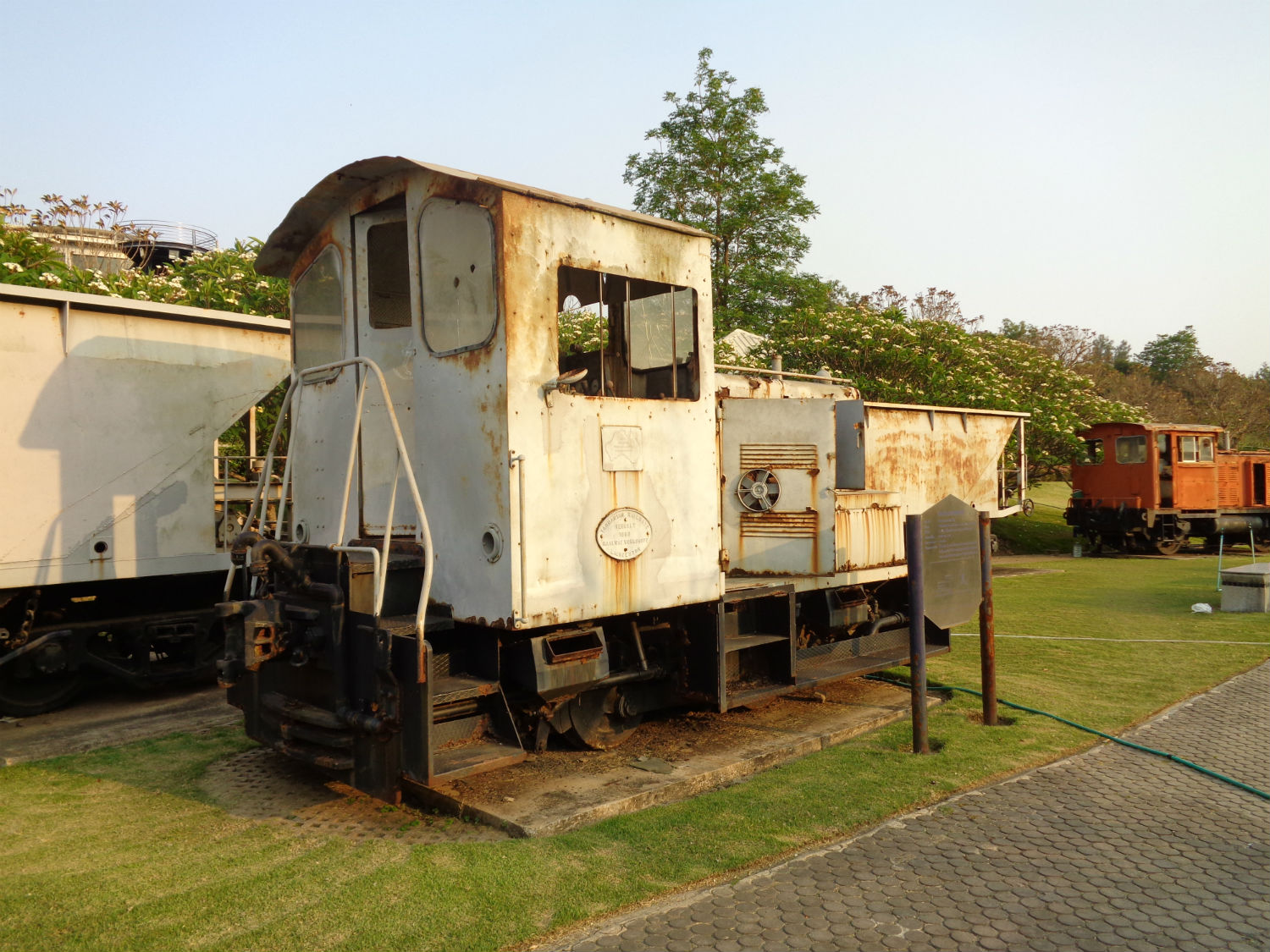
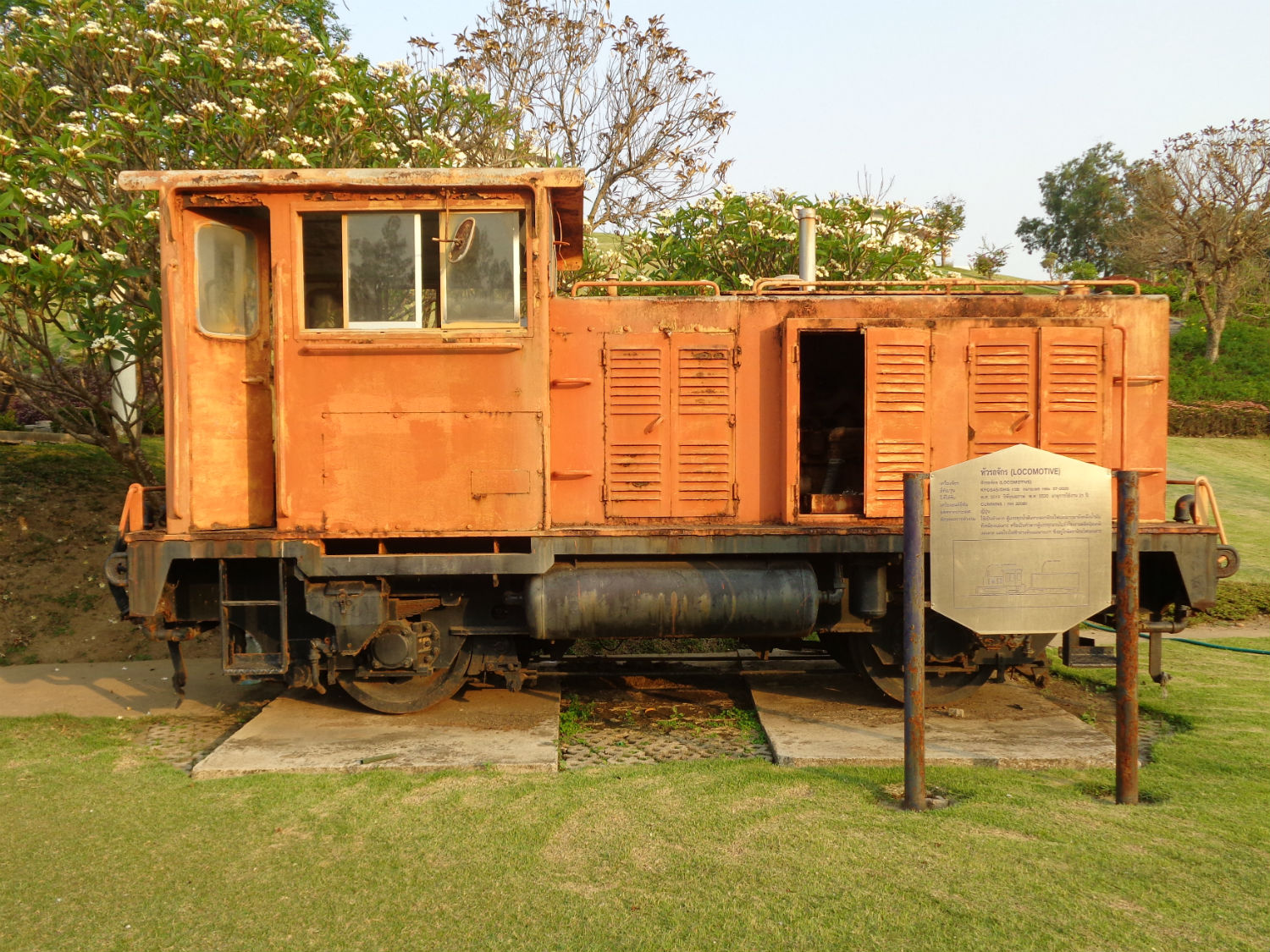
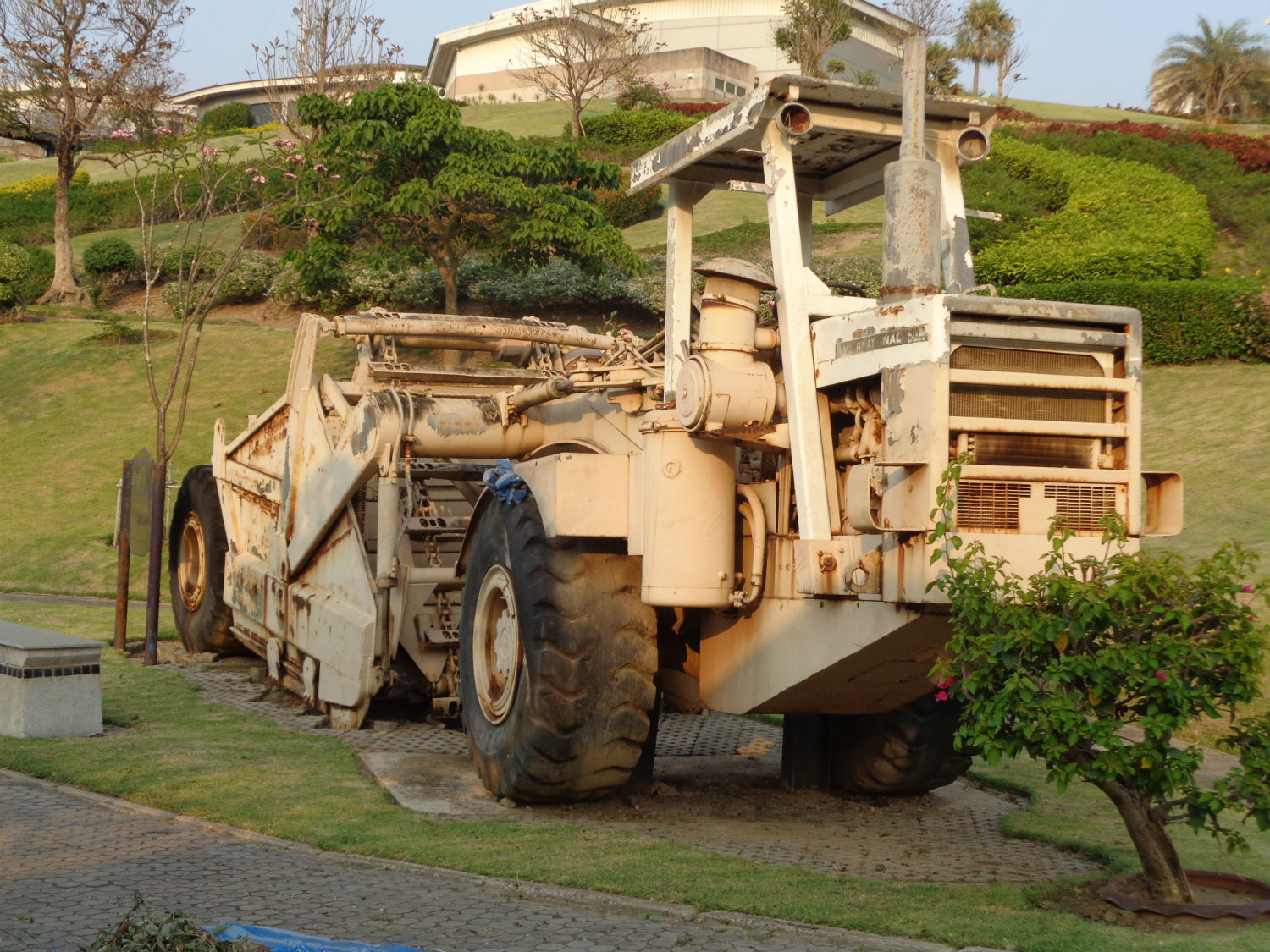
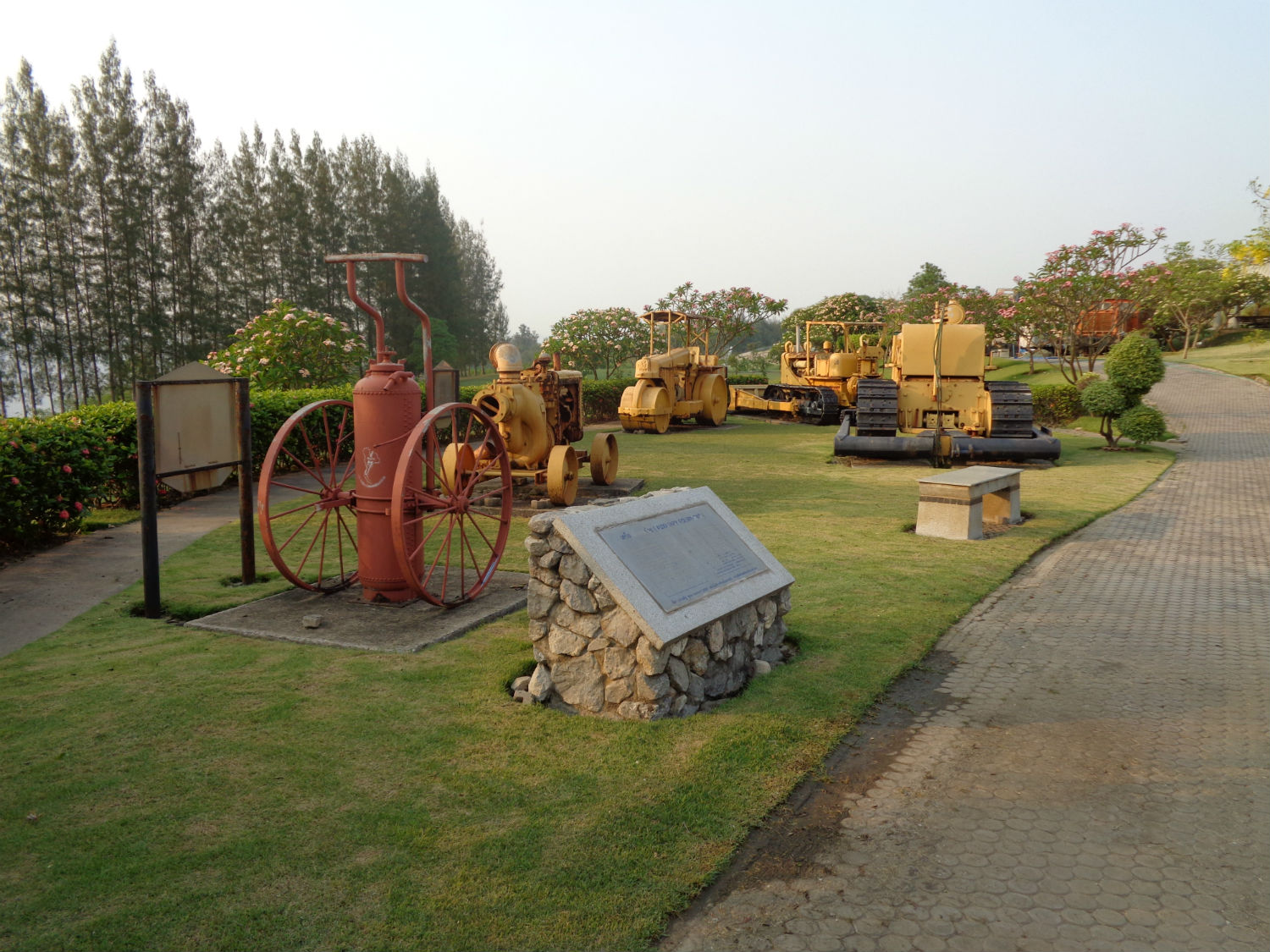
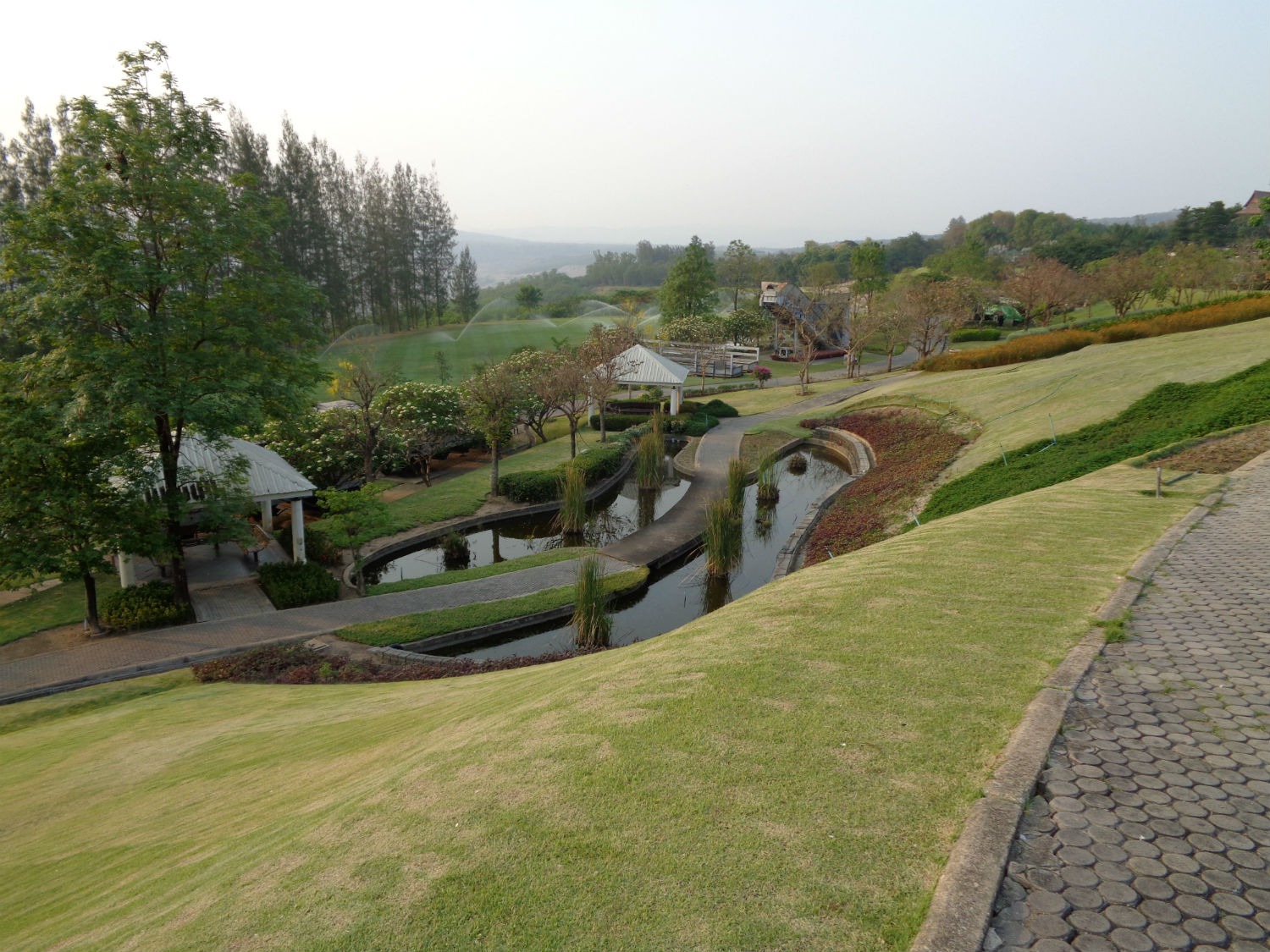
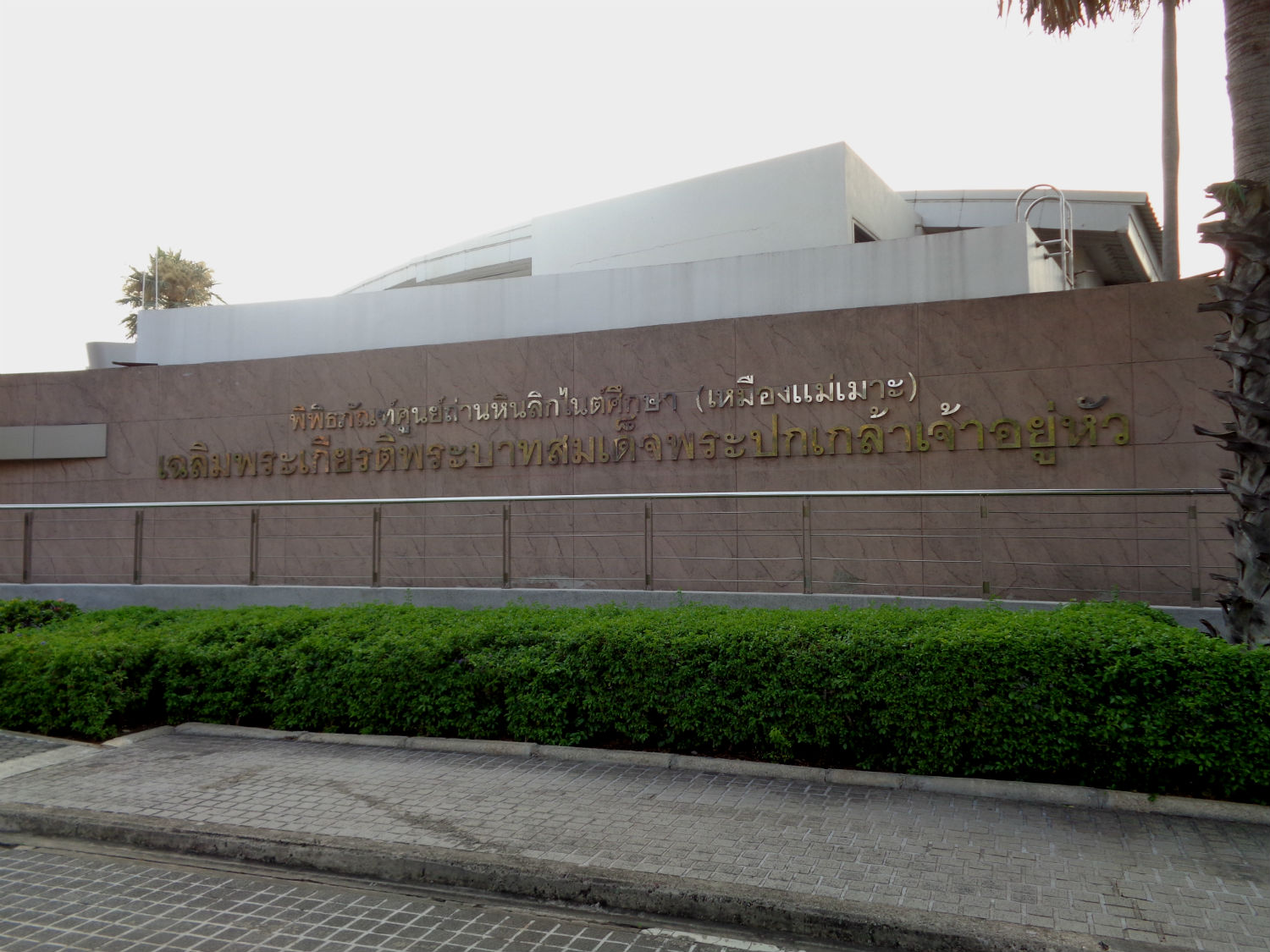 Lignite Mine and Botanical Gardens, Mae Moh District, Lampang Province
Lignite Mine and Botanical Gardens, Mae Moh District, Lampang Province
Dazed and Confused........Back at Good View Mansion I’m in a daze due to an incredible day of site visits. My head is so crammed with information that I need to include in my blog that the words just don’t flow. I even skip dinner in the attempt, asking Katoon to go out and buy something from the market. It’s going to take a massive effort in the morning now. Next Page.